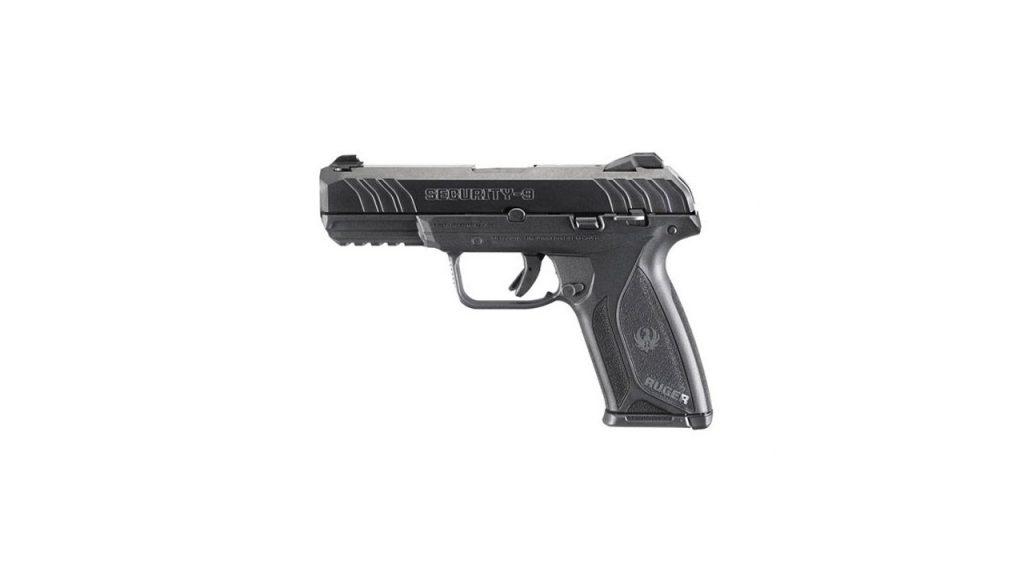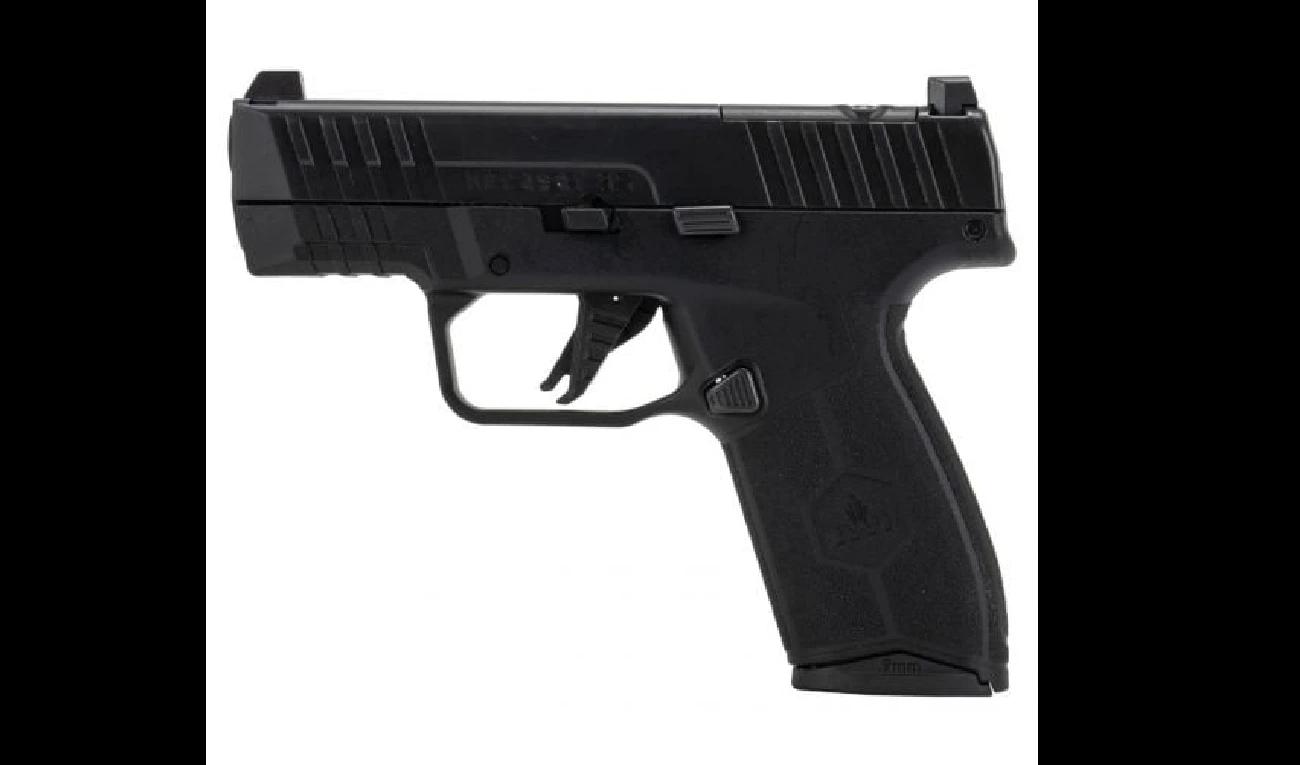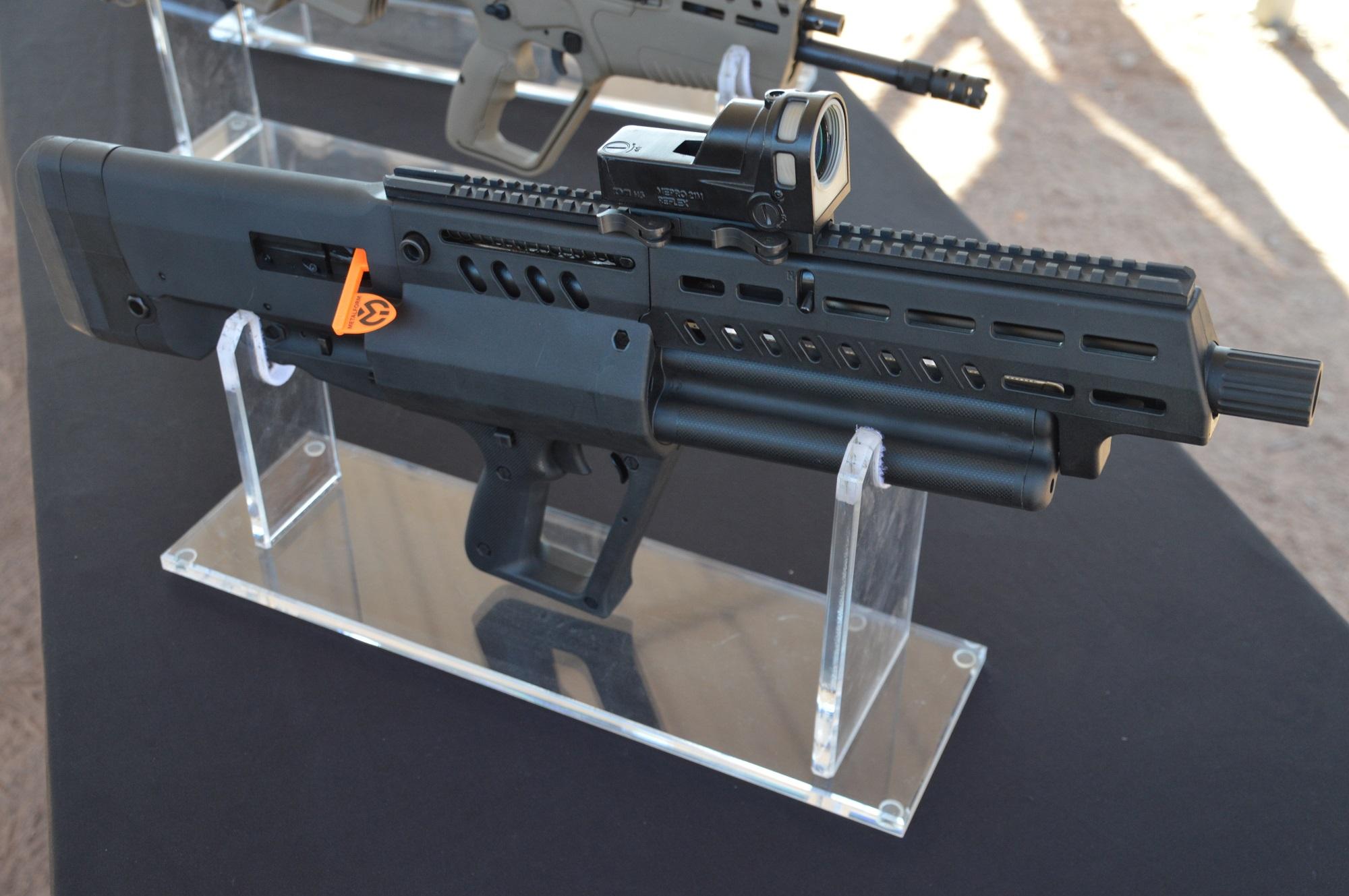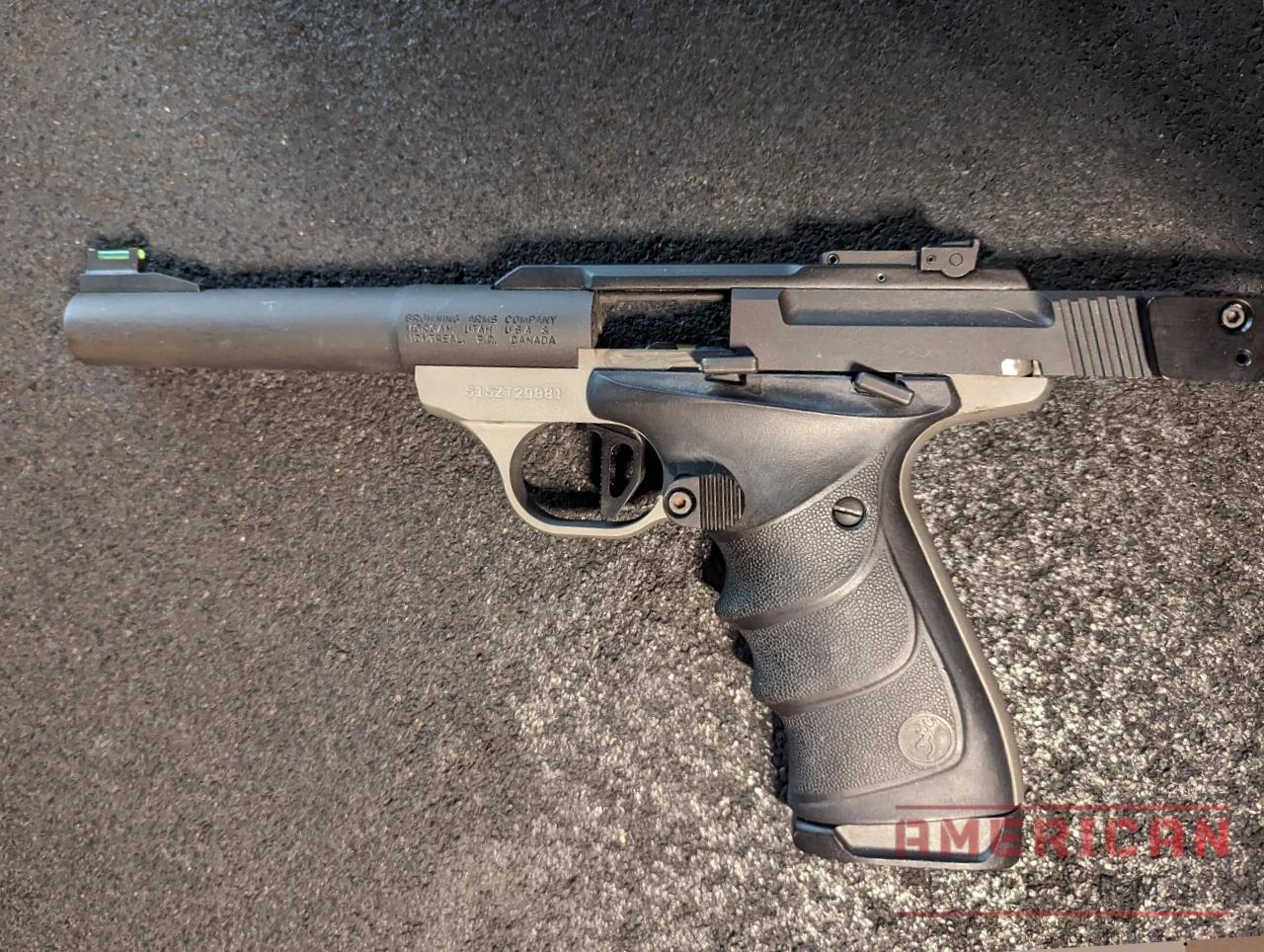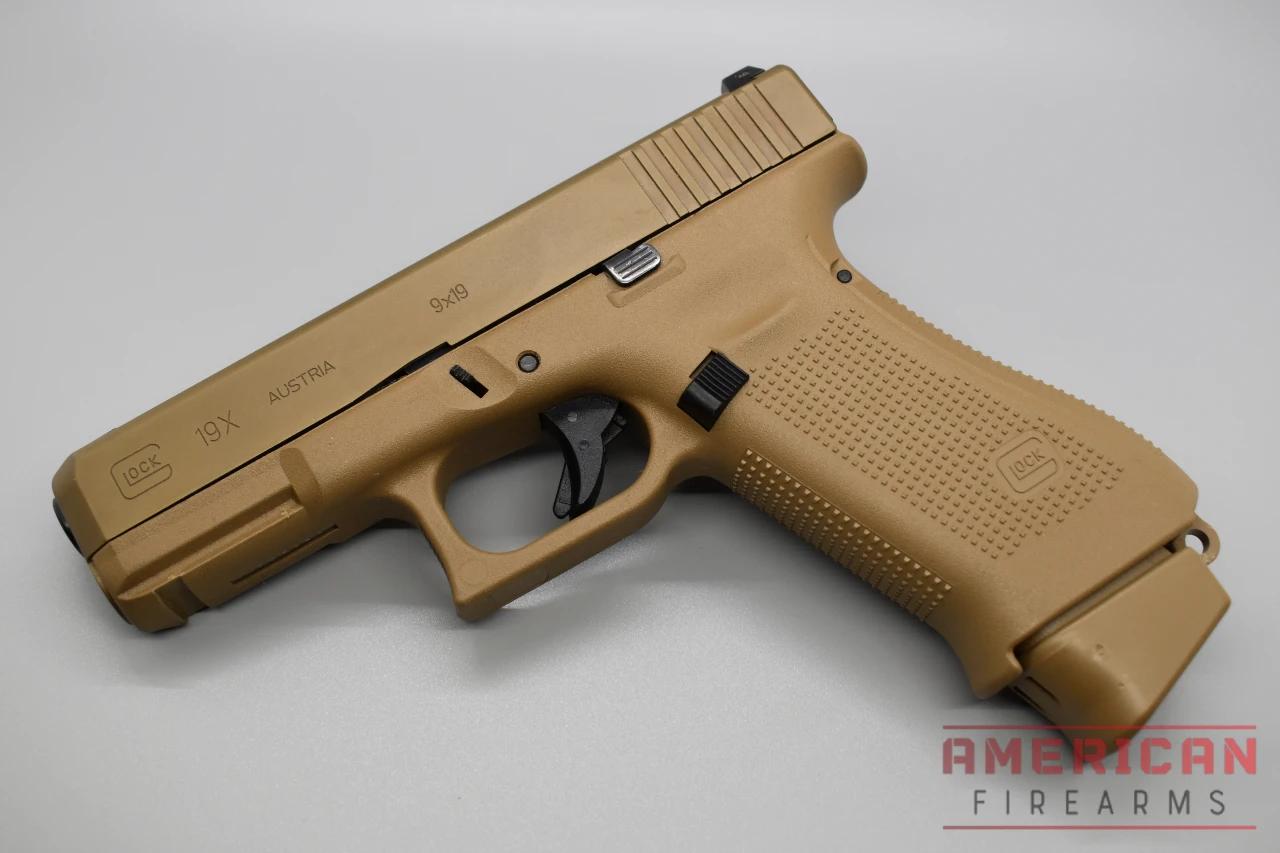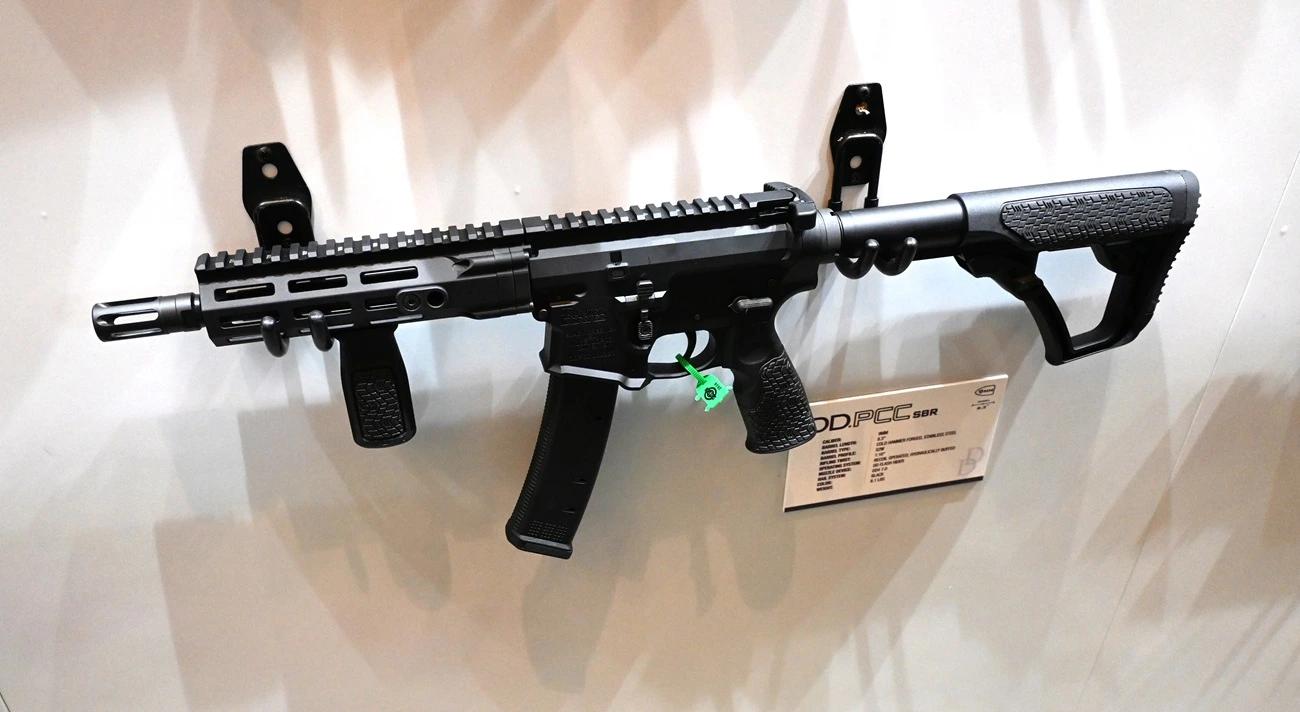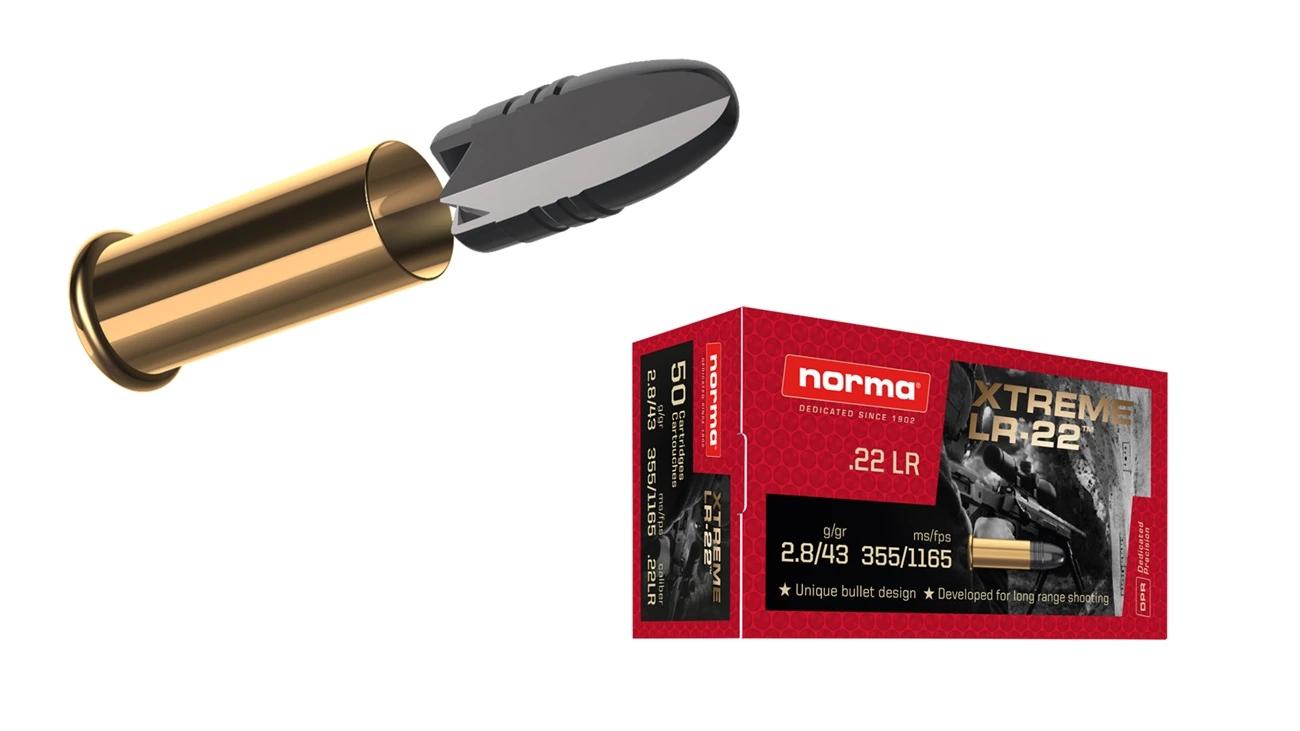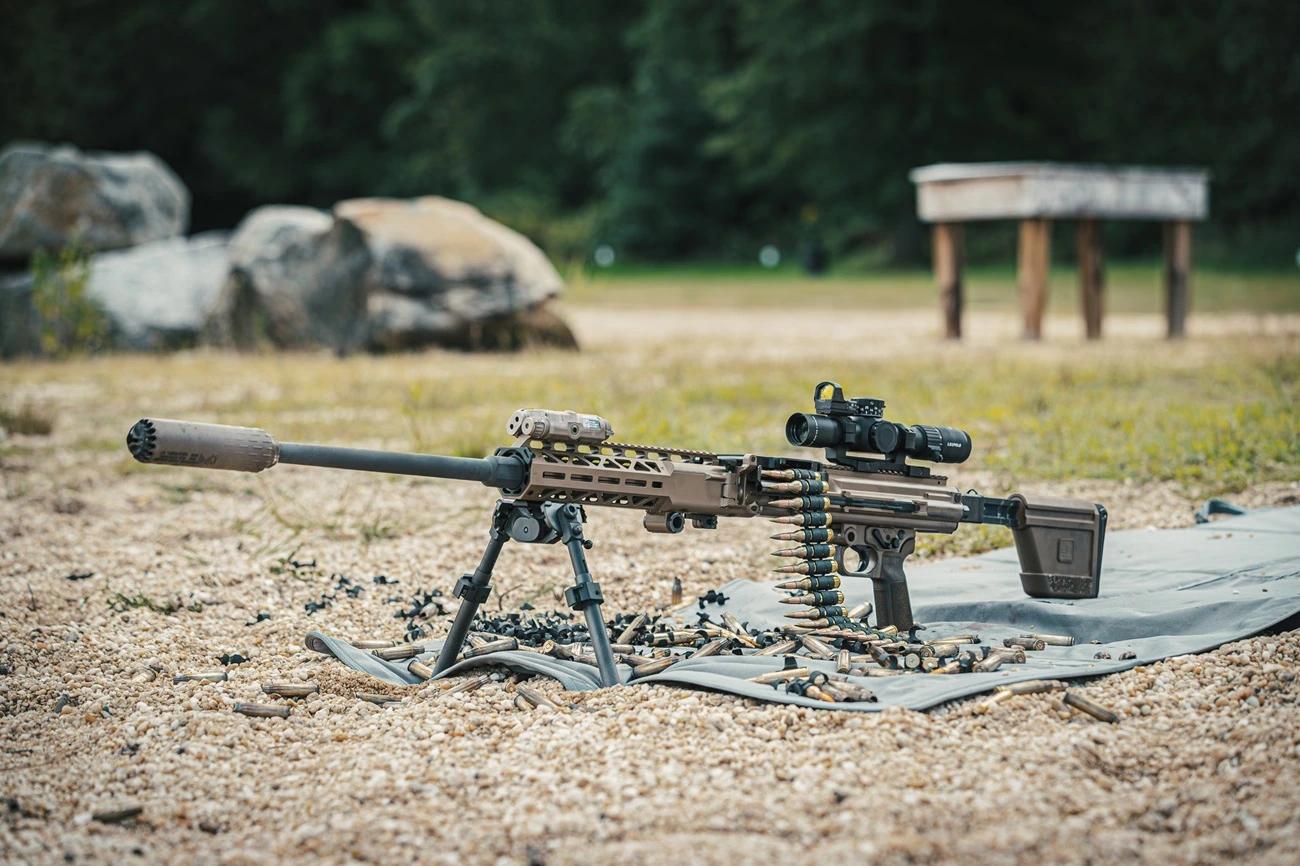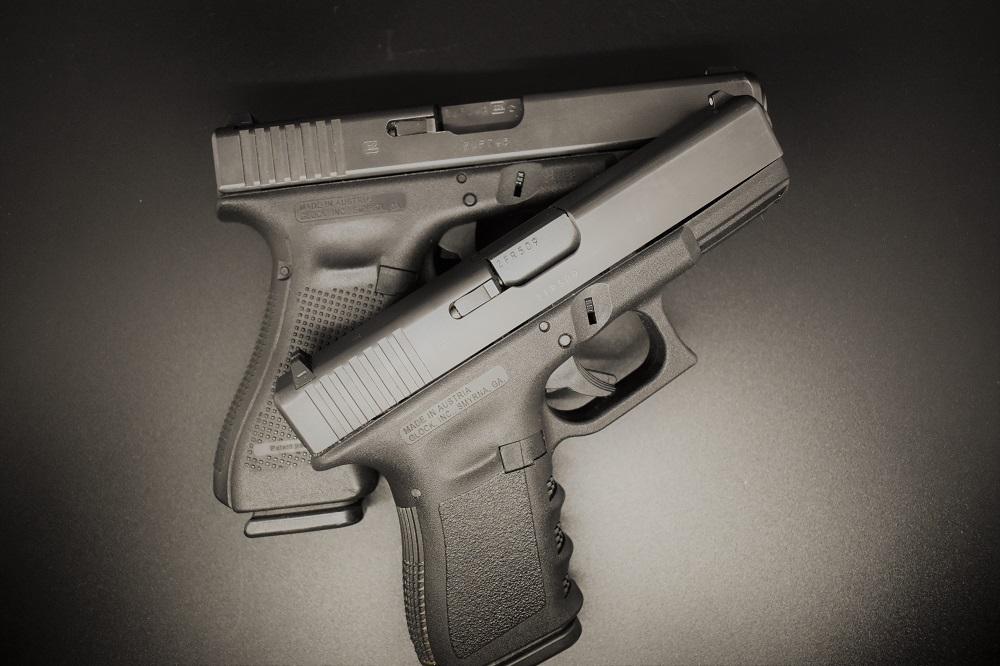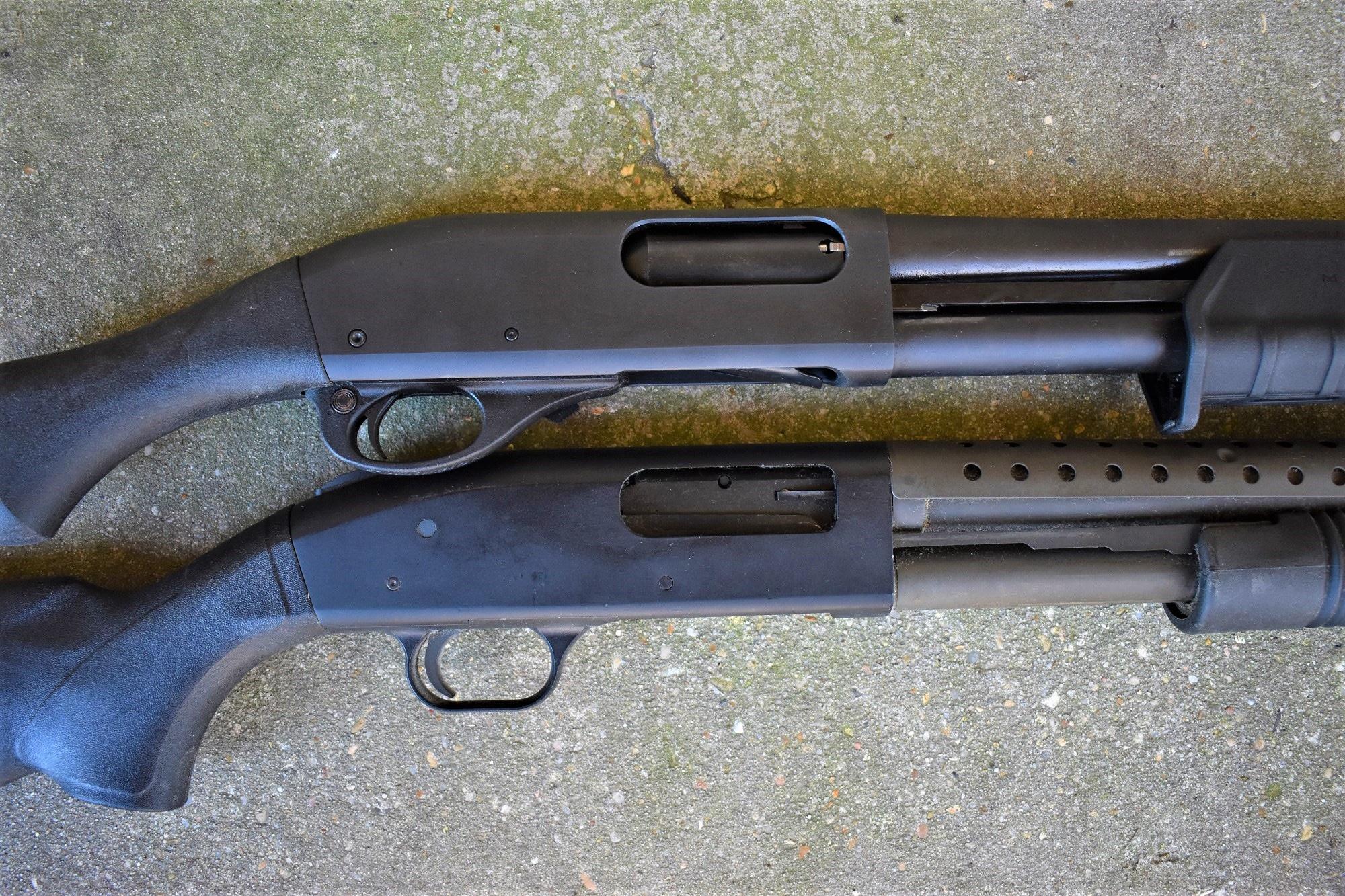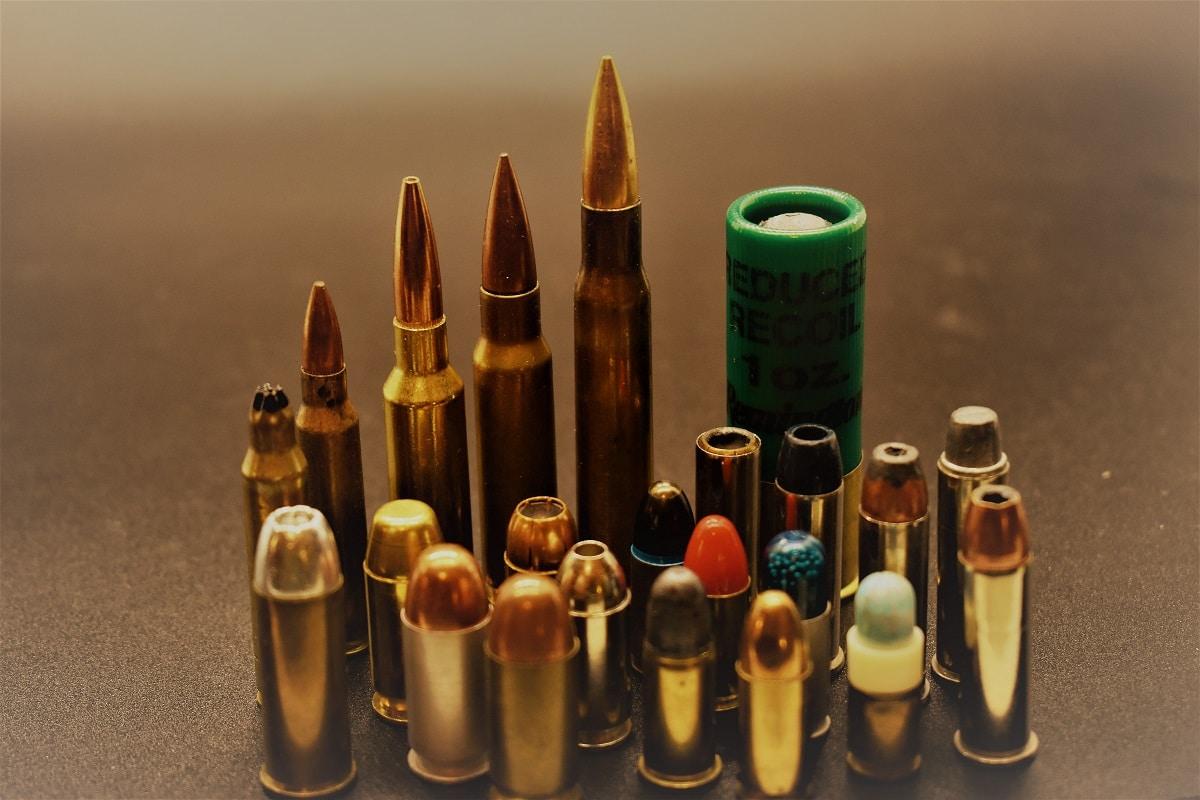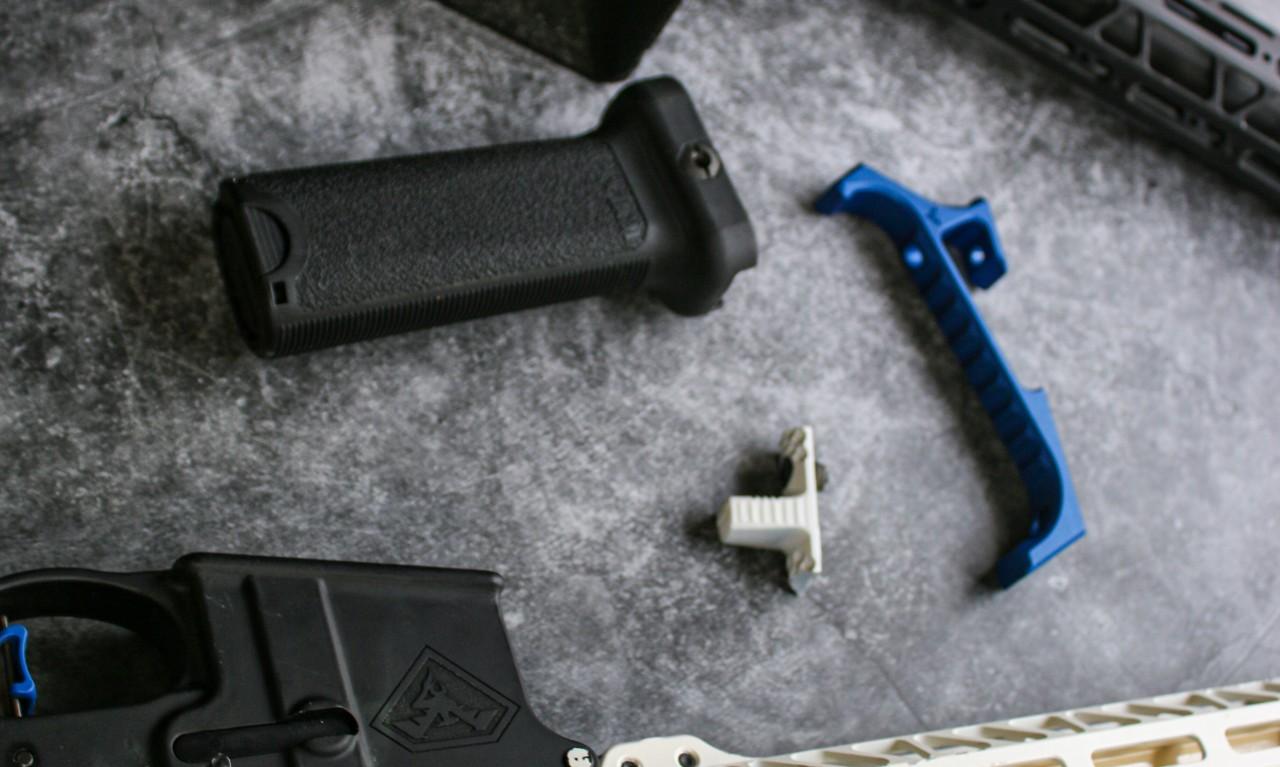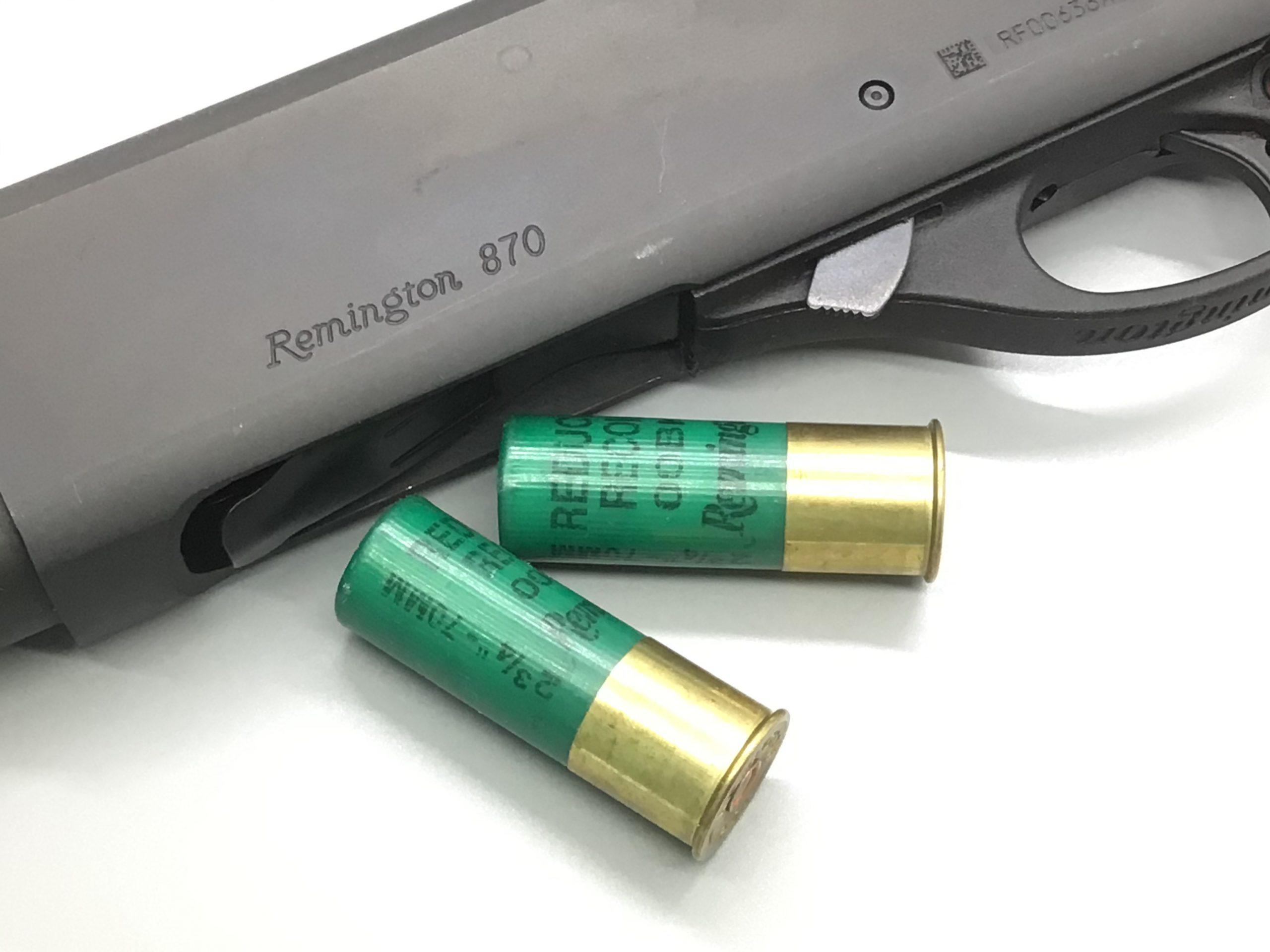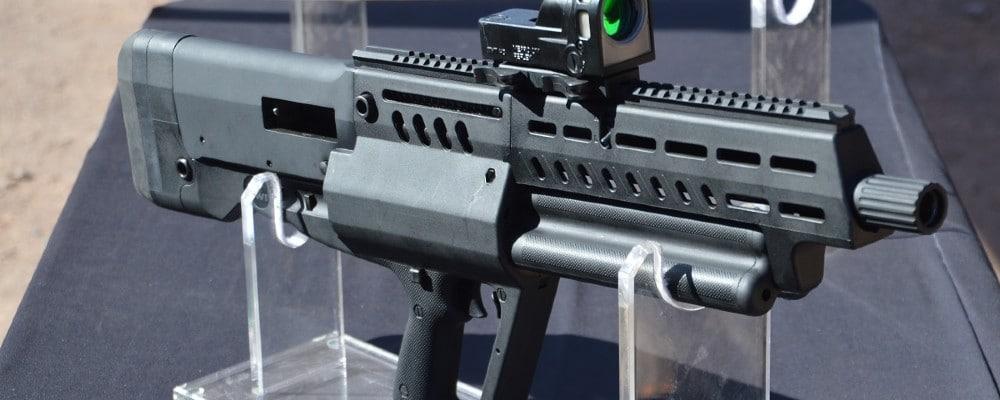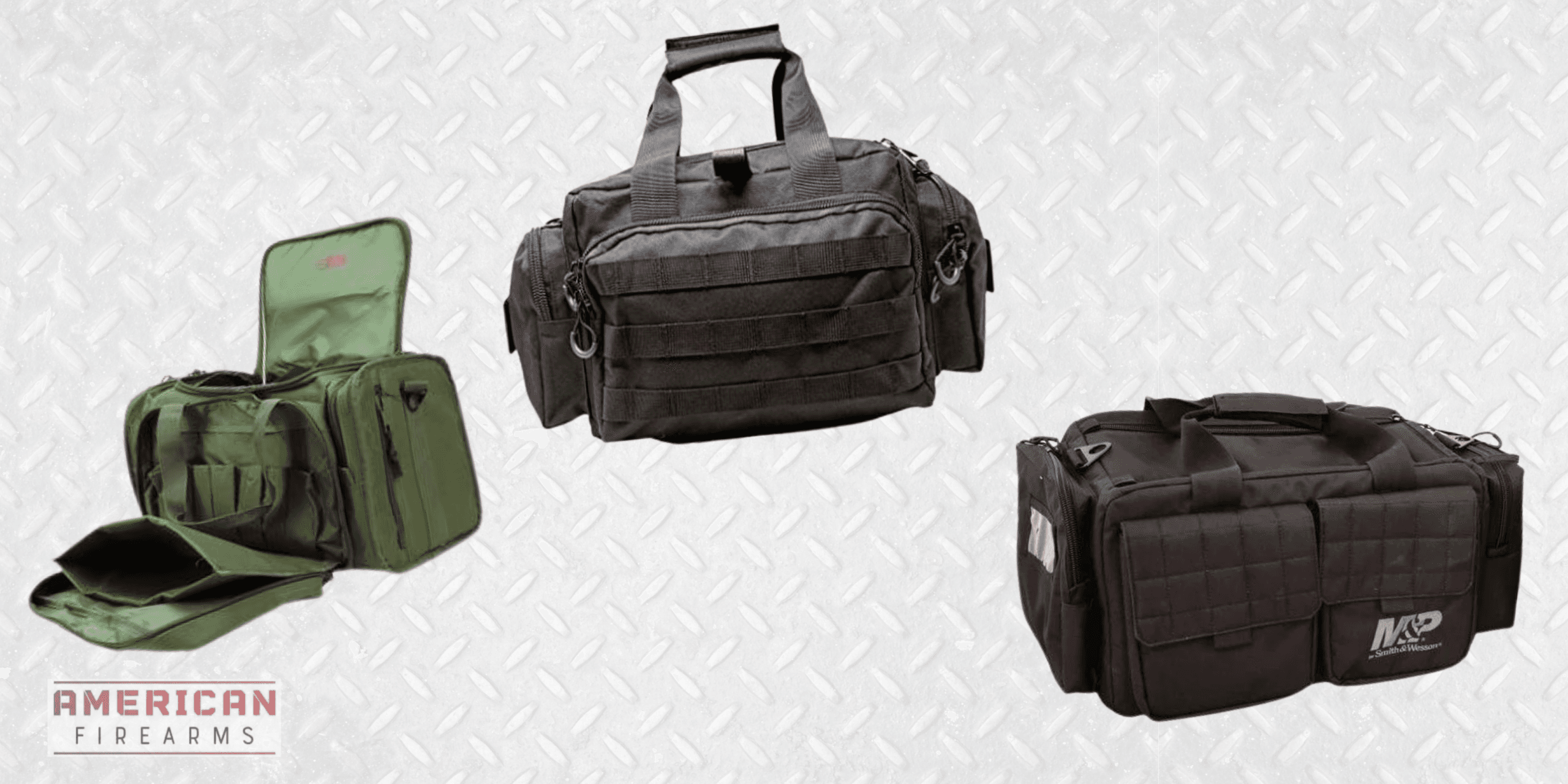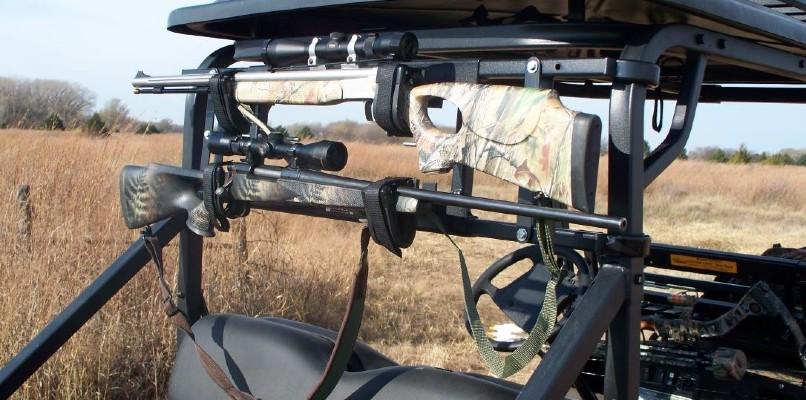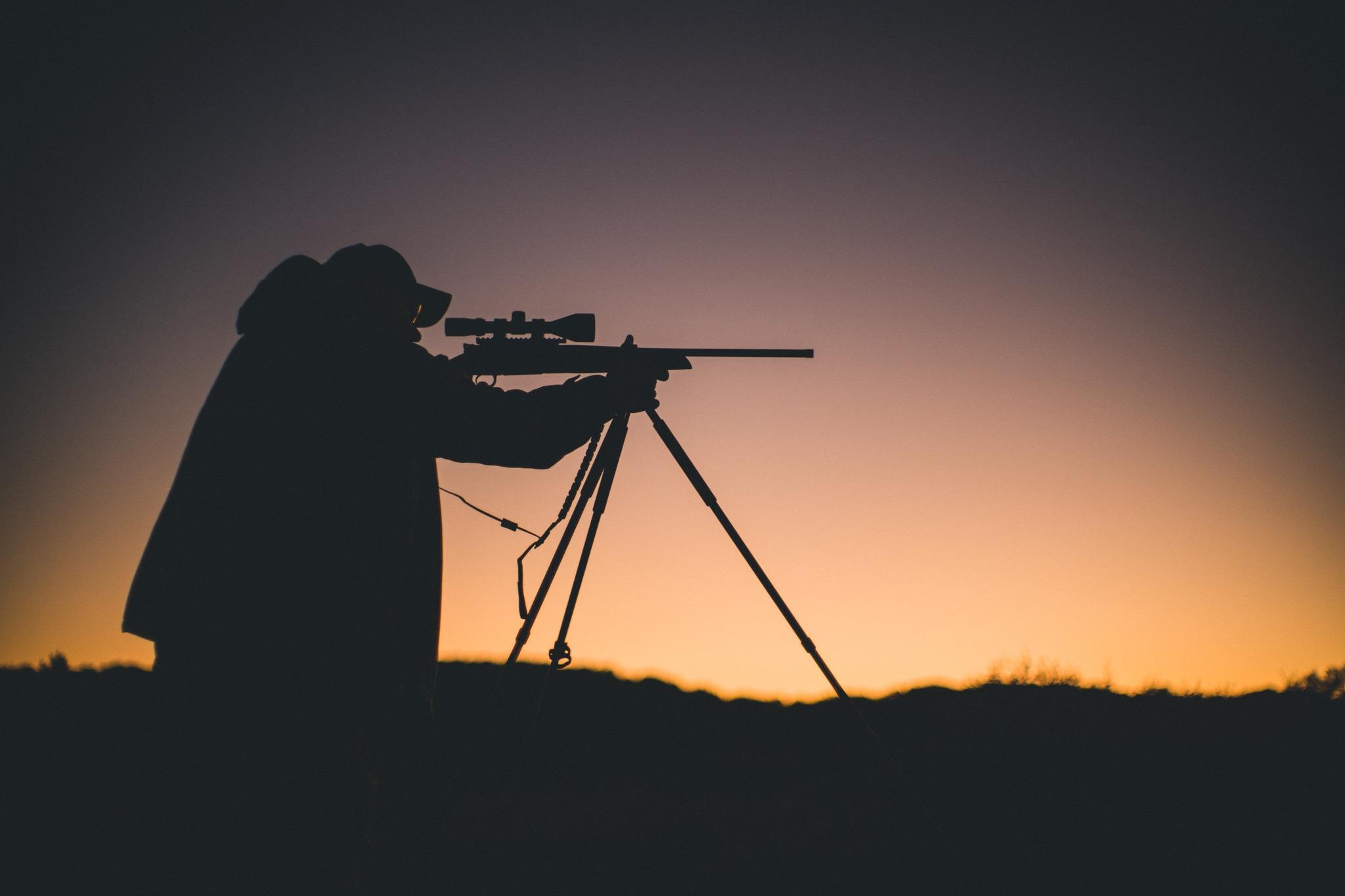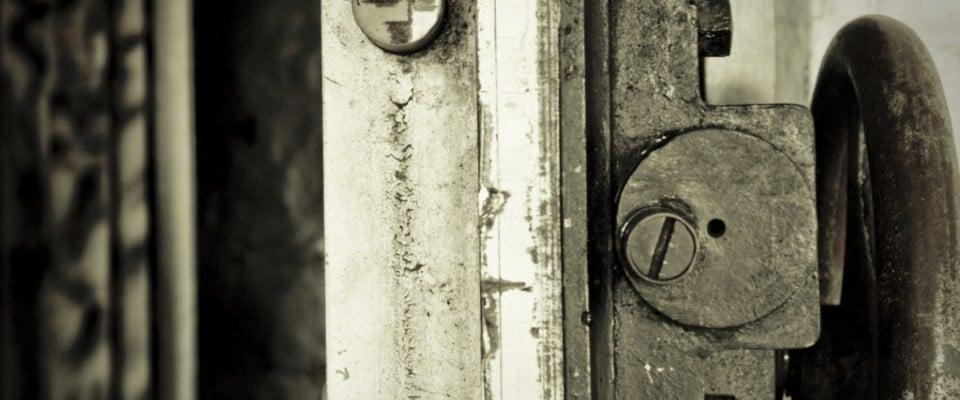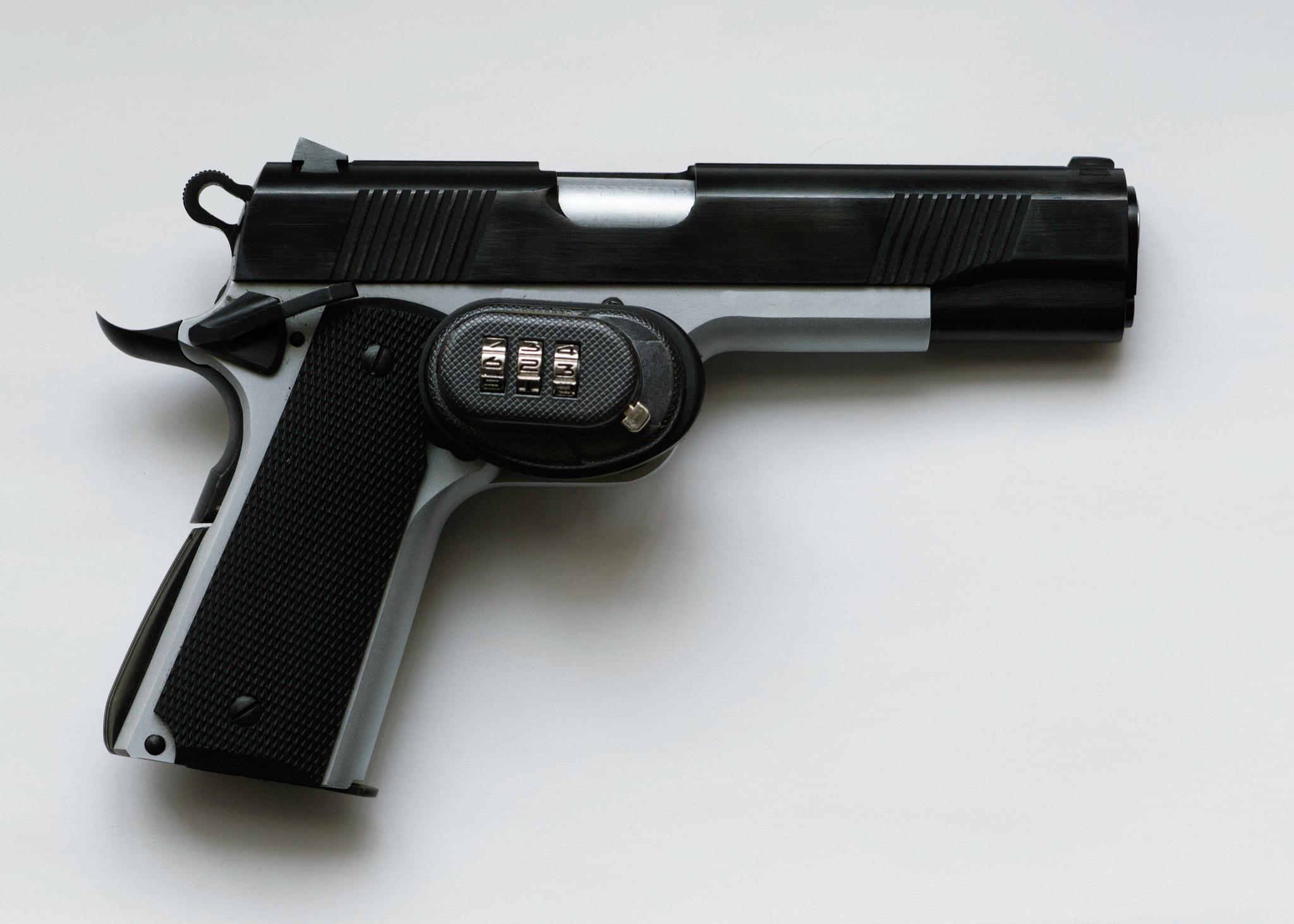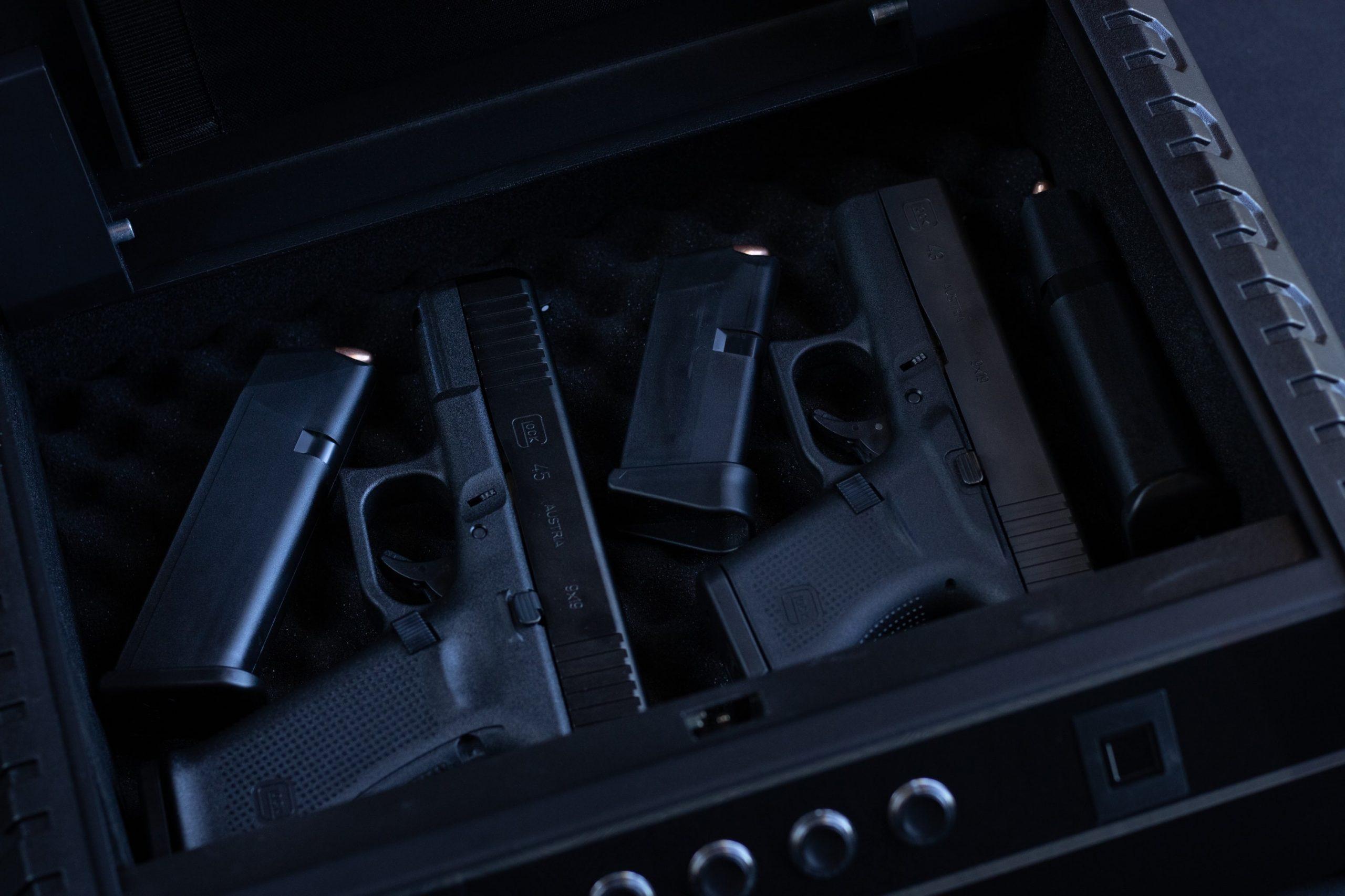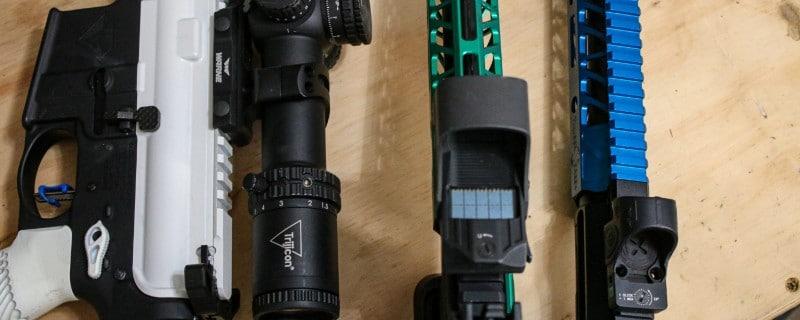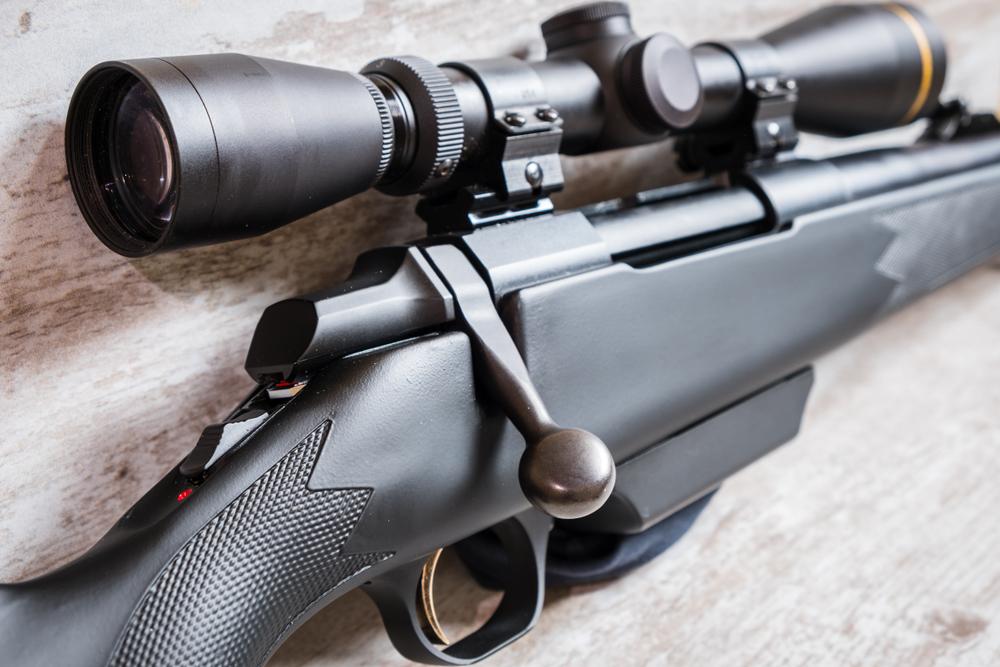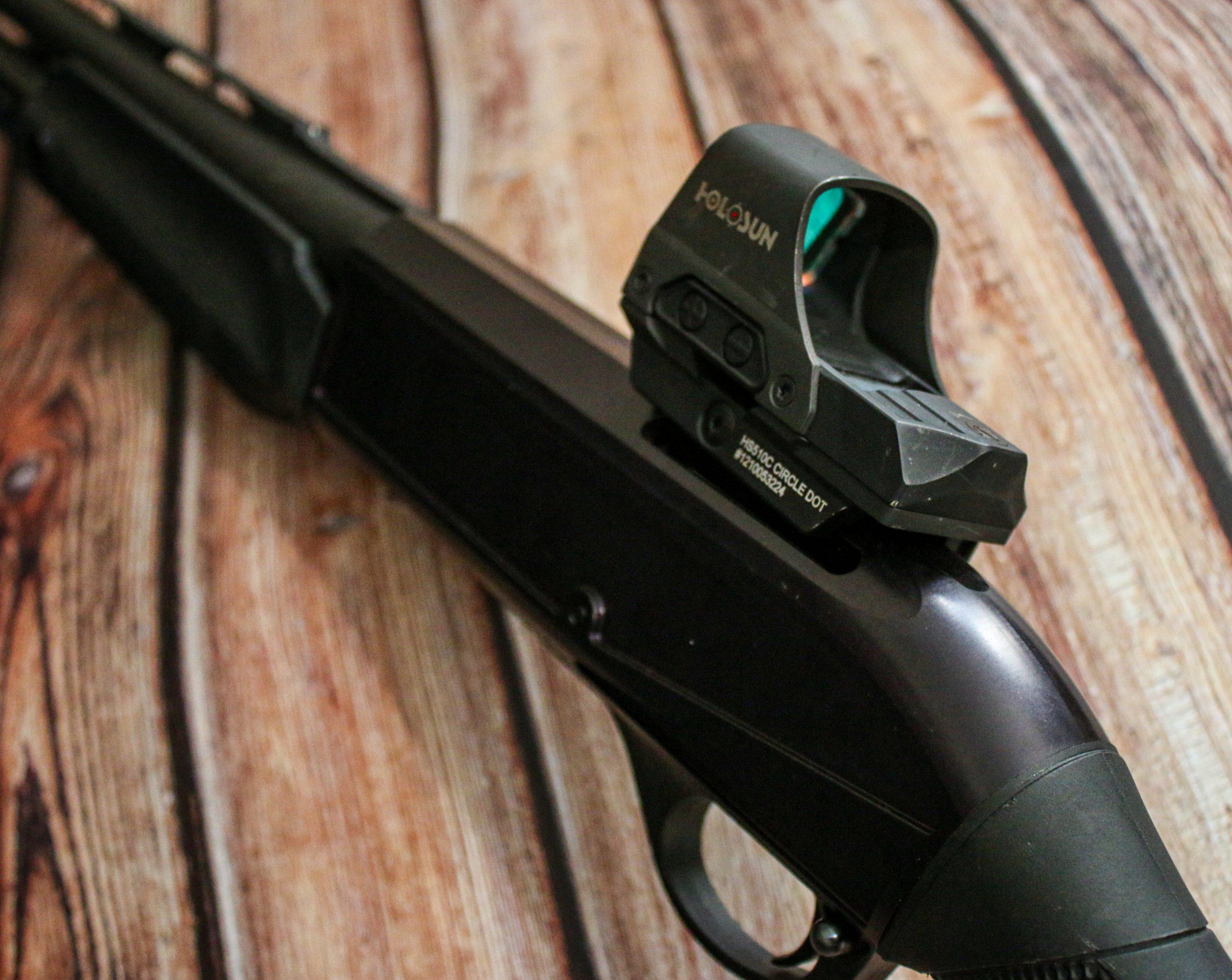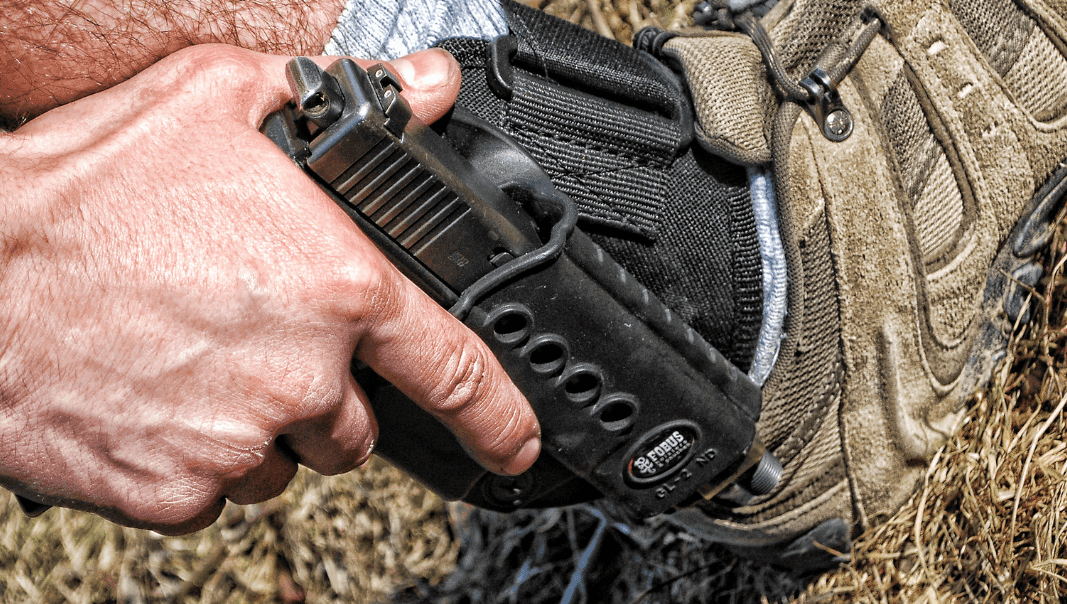Best Concealed Carry Guns: All Calibers & Carry Styles
Written By
Kenzie Fitzpatrick
Competitive Shooter
Edited By
Michael Crites
Licensed Concealed Carry Holder
Share:
Products are selected by our editors. We may earn a commission on purchases from a link. How we select gear.
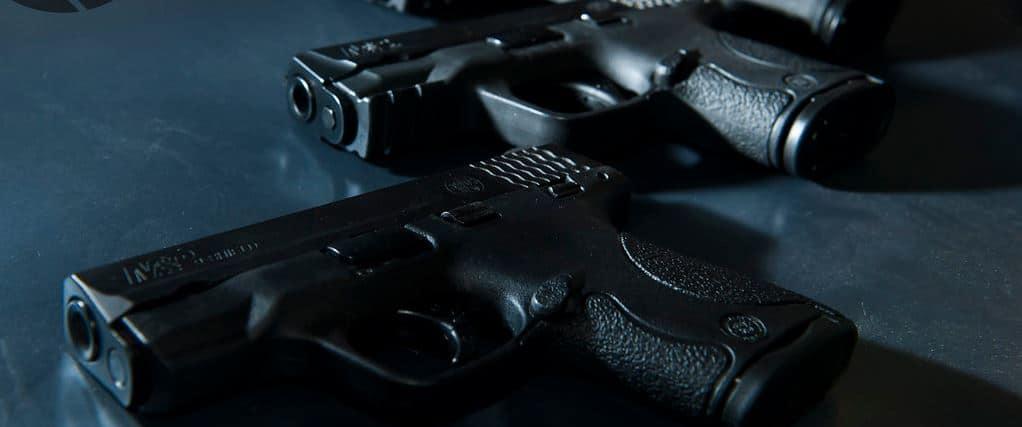
Updated
Jun 2025
The decision on what makes for the best concealed carry gun is multifaceted and often totally individual. While many turn to the Smith & Wesson M&P M2.0 Compact for its reliability and affordability, it’s crucial to understand the breadth of options available. The concealed-carry handgun landscape is vast, with choices spanning various sizes, styles, calibers, and price points. This is no easy road.
From the ubiquitous P365 to the affordability champion Taurus G3, each pistol offers specific advantages and caters to one aspect of the market or another.
Having fired thousands of pistol rounds in 2023 alone, I’ve highlighted some of my favorite handguns from this year. My journey has seen the approachability of the Ruger Security .380, the compact prowess of the Ruger LCR, and the surprising adaptability of the Glock 43, among others.
When selecting a concealed carry weapon, factors such as daily comfort, ease of use, and, of course, reliability play pivotal roles. However, as someone who carries every day and is committed to consistent testing, my goal is to offer an overview of the category.
It’s essential to choose based not just on brand or performance but also on value and fit, ensuring a comprehensive set of criteria from which every potential gun owner can find a match that suits their preferences and budget.
Let’s dive in!
In This Article
Introduction & Fundamentals
Important Concealed Carry Questions
No matter how you approach it, concealed carry remains a hotly debated topic.
Laws around concealed carry are different in each state, and before you consider carrying you need to become familiar with them and ensure you’re clear on how to comply.
Beyond the legal aspect, you should absolutely seek out the proper training to ensure you’re ready to select your daily carry weapon.
Once you’ve decided to carry and have jumped through the requisite hoops to land your concealed carry permit, then comes the hard part — selecting a pistol.
In the past decade, the options have expanded significantly, including compacts, sub-compacts, micro-compacts, minis, and pocket pistols.
You’ll also likely encounter more information than is useful, making for a real challenge in finding the best concealed carry handgun for you.
Pistols can be classified in a few different ways, including action type and size, and there are a few important questions to consider when selecting a concealed carry pistol.
1. What’s the right size?
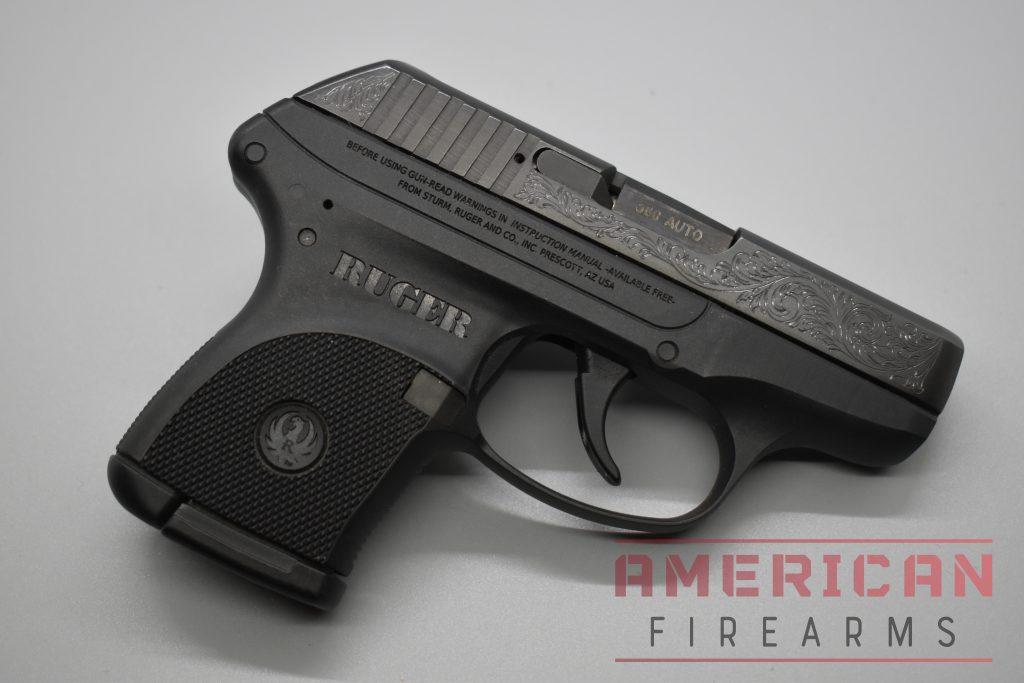
| Size Class | Barrel Length | Capacity Range | Best For | Examples |
|---|---|---|---|---|
Micro/Pocket | 2.5"-3" | 6-10+1 | Deep concealment | LCP MAX P365 |
Subcompact | 3"-3.5" | 6-12+1 | Daily carry | Glock 26 Shield |
Compact | 3.5"-4.25" | 12-15+1 | Versatile carry | Glock 19 M&P |
Full-Size | 4"+ | 15-17+1 | Home/duty | Glock 17 Beretta 92 |
Each size class corresponds roughly to a specific range of barrel lengths. While there’s some argument about how accurate the size classes are, think of these as ballpark ranges for any concealed carry gun.
Full-Size Pistols
For most of the 20th century, the standard service revolver had a 4-inch barrel, so that’s roughly the starting point for a service gun and/or full-size combat pistol.
A full-size handgun is made without prioritizing concealment or a compact form factor. Think of the typical duty or service gun for a police officer or a soldier; Glock 17 or Beretta 92 semi-autos or an S&W Model 19 revolver.
Revolvers can be either on medium frames (.38 Special/.357 Magnum) or large frames in (usually) .44 or .45 caliber.
Full-size guns are easier to shoot well but can be difficult to conceal, and some find them uncomfortable to carry. Others have no issue at all.
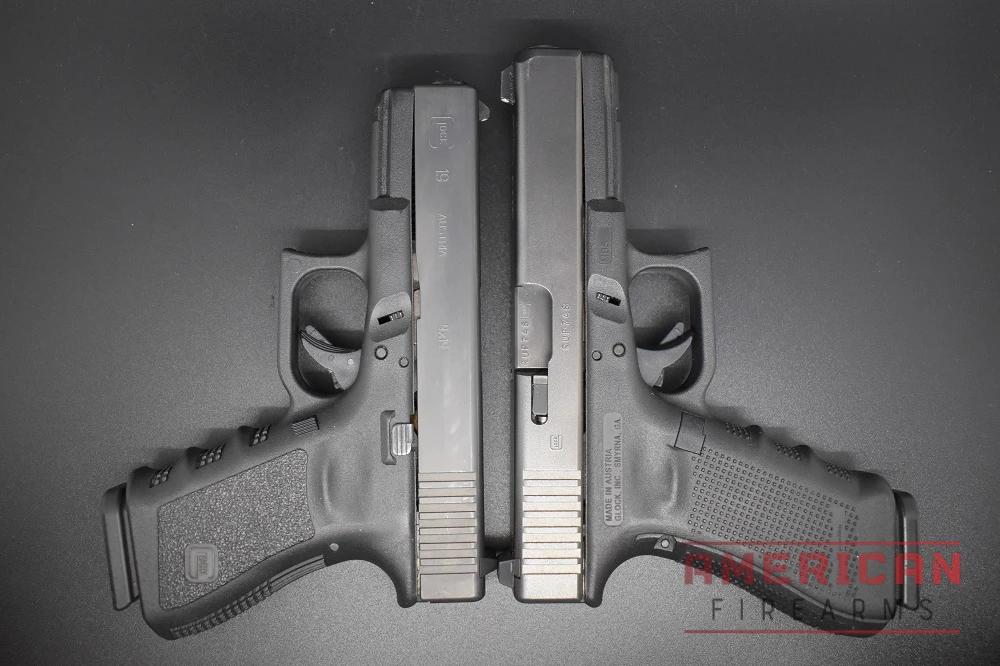
Compact Pistols
Compacts use barrels that range from 3.5 inches to 4.25 inches for semi-autos, or 3 inches to 3.5 inches for revolvers. Think of a compact as a full-size gun that’s had half an inch removed from the barrel, slide, and grip for easier concealment.
You’ll often get near full-size capacity with compacts, as they tend to use the same double-stack magazine.
Compact pistols or revolvers are a middle ground, just big enough to be easy to shoot but just compact enough to be easier to conceal.
The Smith and Wesson M&P 2.0 is a great example of this type: these tend to be larger than subcompacts but are still concealable for most people.
While far from the first or only example, the archetype of the compact pistol is the Glock 19. Just small enough to be easily concealed, just big enough to be easy to shoot.
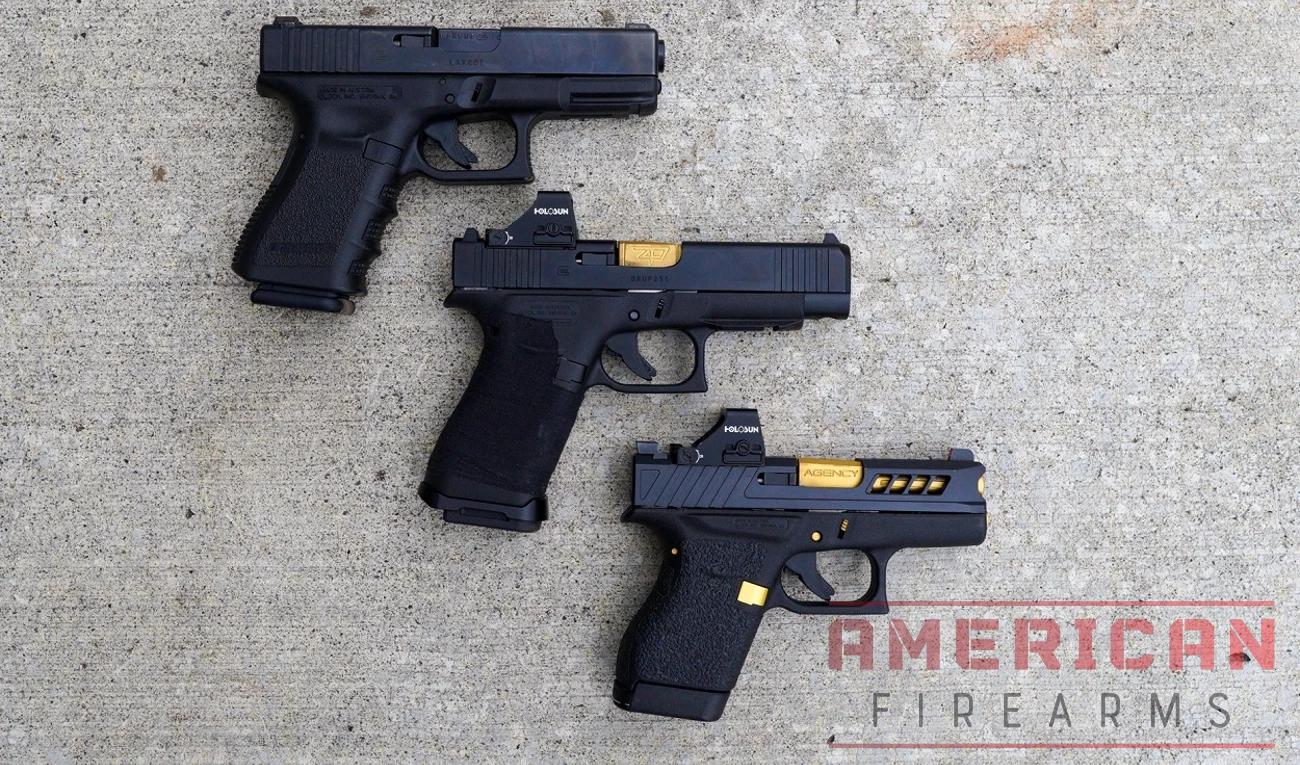
For revolvers, the classic “compact” uses the same frame size as a service revolver, such as Smith and Wesson’s K and L frames, Colt’s I-frame, but with a shorter barrel and rounded grip.
Subcompact Pistols
Subcompacts are smaller again than compacts and make a great concealed carry pistol, with 3 to 3.5-inch barrels for semi-autos, 2 inches to 3.5 inches for revolvers.
These revolvers and pistols are small dimensionally but large enough to chamber popular defensive calibers. A good example here would be something along the lines of the Glock 26 — a tiny 9mm pistol with a single-stack magazine and truncated barrel and grip.
The goal with subcompacts is trying to craft the smallest gun that can chamber 9mm while still being controllable.
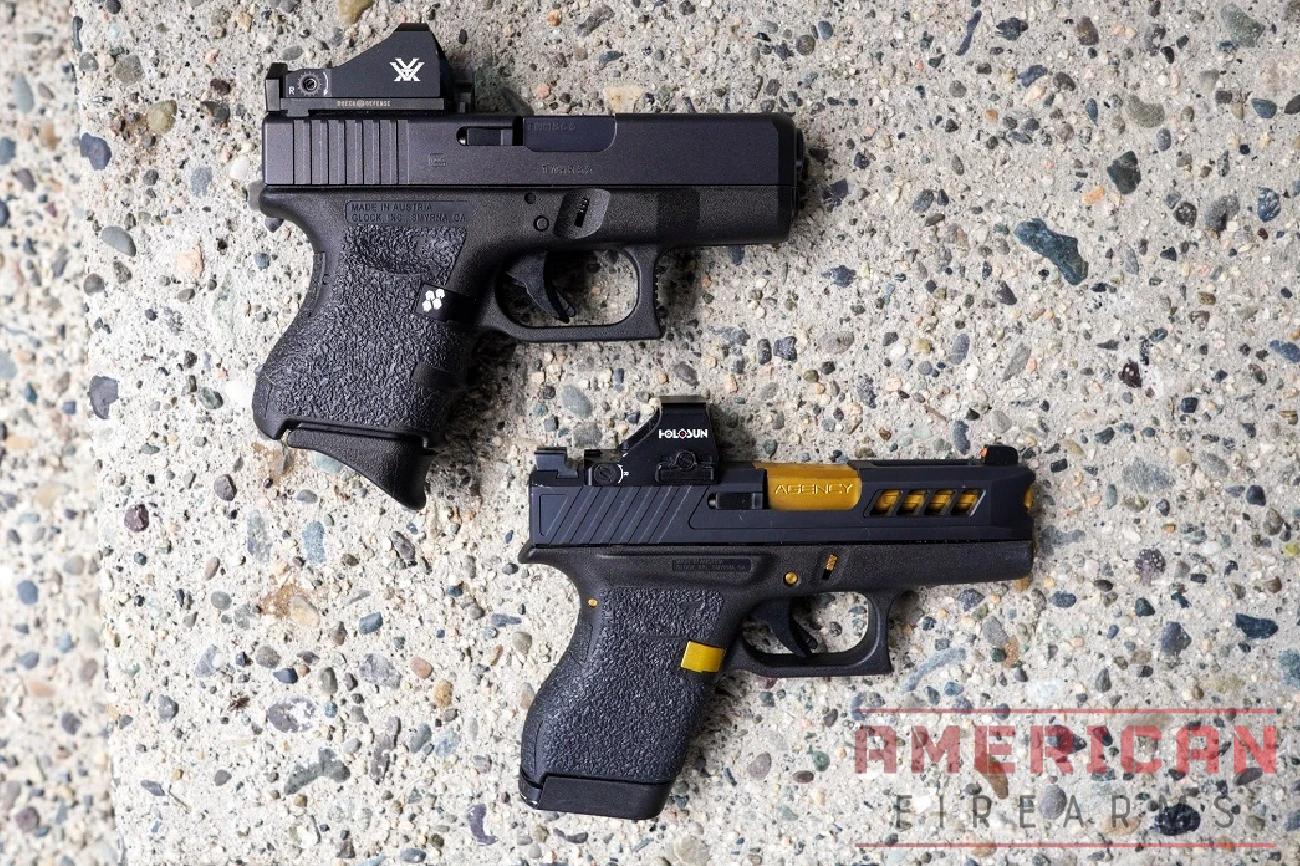
Subcompact revolvers are the snubbies, the J-frame Smiths, Ruger LCRs, and Colt Cobras.
Micro or Pocket Pistols
Micro pistols are small enough to carry in a pocket, but, depending on the brand and make can run up to roughly the size of sub-compacts. The design philosophy is to create a gun that disappears when carrying it.
Generally reserved as backup guns, micro pistols are geared toward the last line of defense or deep concealment use. They typically have a very short barrel – more than 2.5 inches is uncommon – and are chambered in less powerful calibers such as .22 LR or .380 ACP.
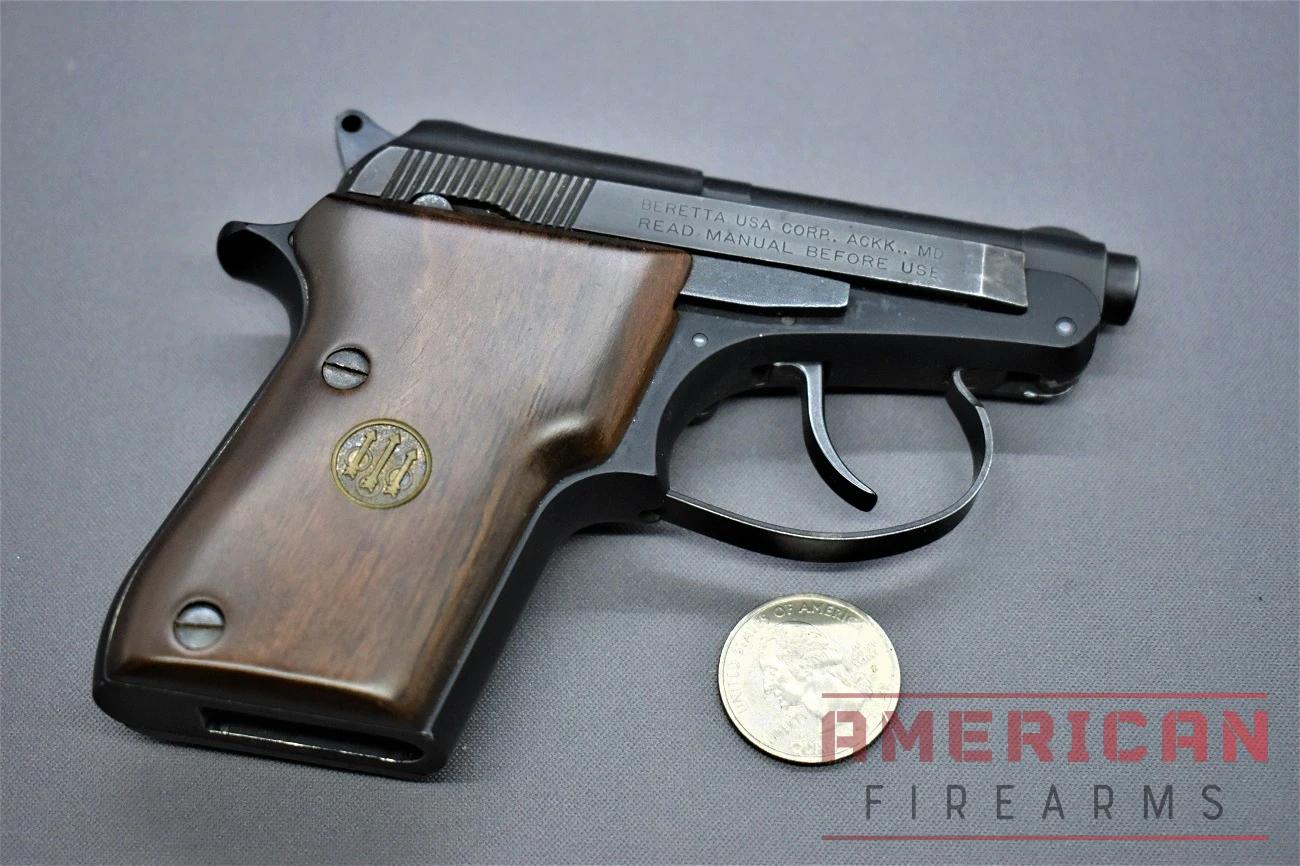
On the extreme end, there are guns like Derringers or even the Kolibri. These guns can range in size from the NAA mini pistols to pocket .380 pistols such as the S&W Bodyguard and the micro 1911s like the Colt Mustang, Sig P238, or Springfield Armory 911.
Many of these have a barrel of an inch or less, and often fire tiny projectiles that are unlikely to do much damage.
I do not recommend these as defensive weapons to the vast majority of people. With that said, they might be marginally better than resorting to a fistfight if you have to defend yourself.
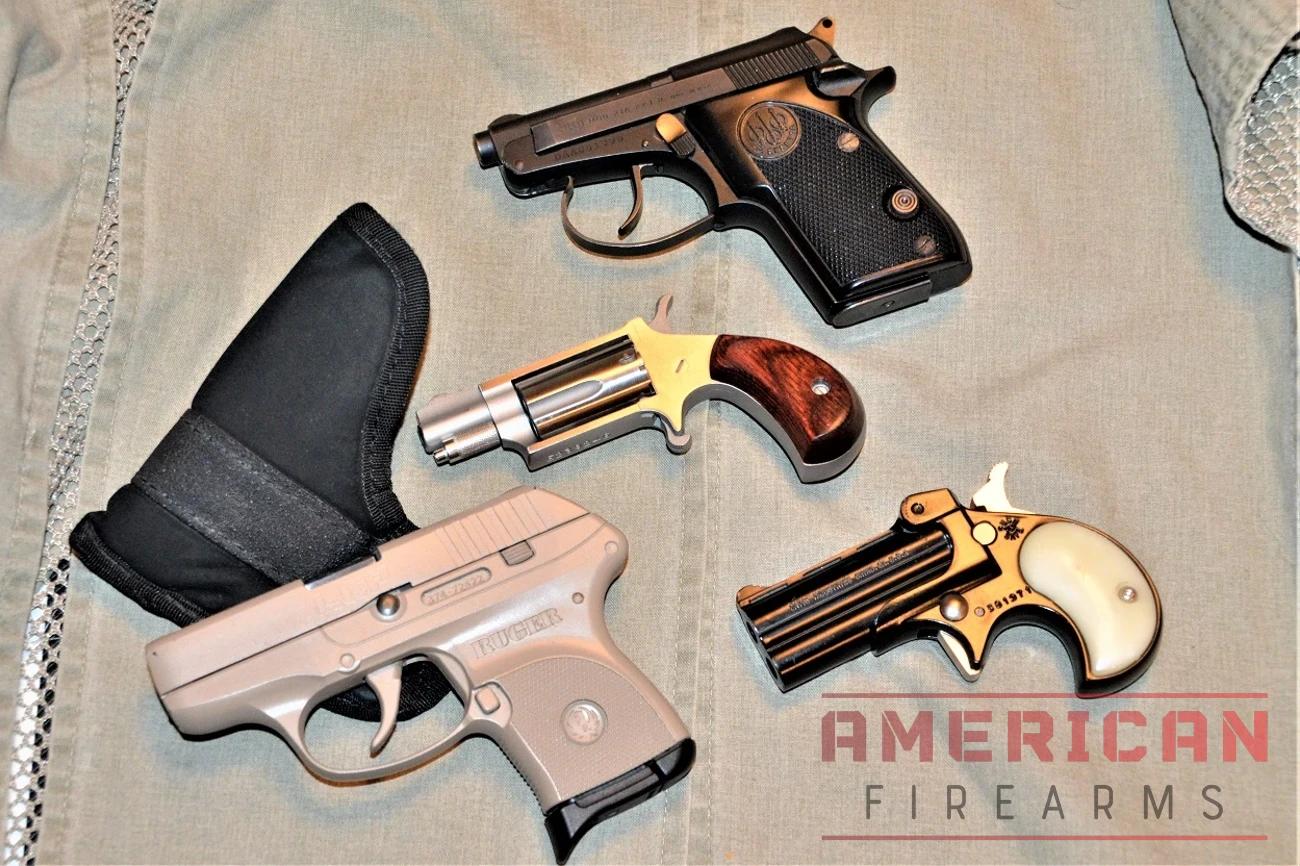
Classically they’re carried in a pocket or an ankle holster and chambered in smaller calibers from .22 LR or .380 ACP.
Some people carry them as a deep concealment gun when a larger pistol might be too easily discovered or as a backup to a primary gun for personal defense.
2. What kind of action?
| Action Type | Trigger Pull | Complexity | Safety Features | Examples |
|---|---|---|---|---|
Striker-Fired | Consistent 5-6 lbs | Simple | Trigger safety | Glock M&P P365 |
DA/SA | Heavy/Light | Moderate | Decocker | Sig P226 Beretta 92 |
SAO | Light 3-5 lbs | High | Manual safety | 1911 Sig P238 |
DAO Revolver | Heavy 8-12 lbs | Simple | Long trigger pull | LCR J-Frame |
There are hundreds of different concealed carry guns on the market, but all use a small number of mechanical firing systems, often called the “action.” Each works a little differently.
The best action for CCW handguns is hotly debated. Each has pros and cons.
Striker-Fired Semi-Auto
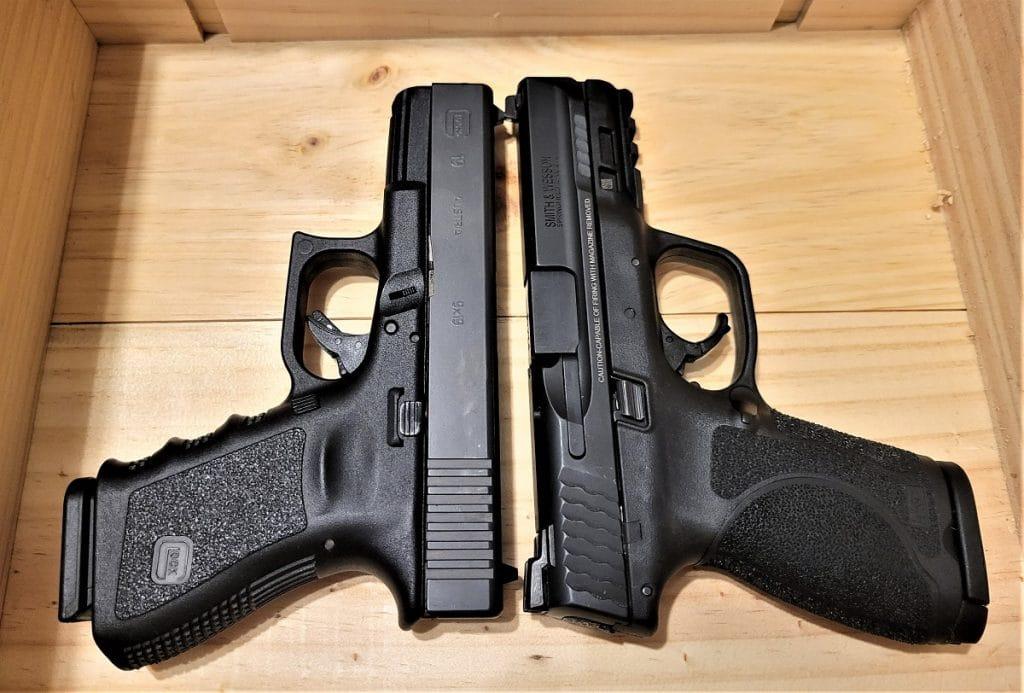
With striker-fired concealed carry guns the firing pin is cocked by pulling the slide but held in place by the sear. Pulling the trigger pushes a bar (the trigger bar) to the rear, trips the sear, and lets the firing pin go forward, striking the cartridge and discharging the gun.
Striker-fired pistols are mechanically simple – load gun, aim, pull the trigger, repeat – so they’re easy to learn and use. However, the downside is that they also require more care in their handling to avoid accidental discharge.
The term “Glock ND” and “Glock leg” exist for a reason.
Another downside is striker-fired pistols need to be constantly re-cocked for dry fire practice. However, the polymer-frame, striker-fired pistol is the dominant design on the market for good reason.
Single-Action
Single-action concealed carry guns have to be cocked for every shot. Single-action revolvers must be manually cocked, but single-action semi-autos only need to be manually cocked for the first shot. The slide does the work or recocking the hammer for every shot after that.
Nobody uses single-action revolvers for daily carry anymore, so they don’t merit further discussion. On the other hand, single-action semi-autos remain in production and are a viable choice — if you can live with them.
The upside of single-action concealed carry guns is a short, light trigger pull, but the downside is that they have to be carried with a manual safety, so you have to put in a lot of practice to use them effectively.
Single-action semi-autos are almost exclusively 1911s and 1911 derivatives. Other concealed carry gun designs are out there, but really for all practical purposes, it means 1911s.
The 1911 is an excellent fighting pistol in any respect, but, while a good concealed carry gun, it’s not for casuals. Good ones aren’t cheap, they need more maintenance to keep running, capacity is limited, and they tend to be big and heavy — but no other gun is as easy to shoot well.
Double-Action
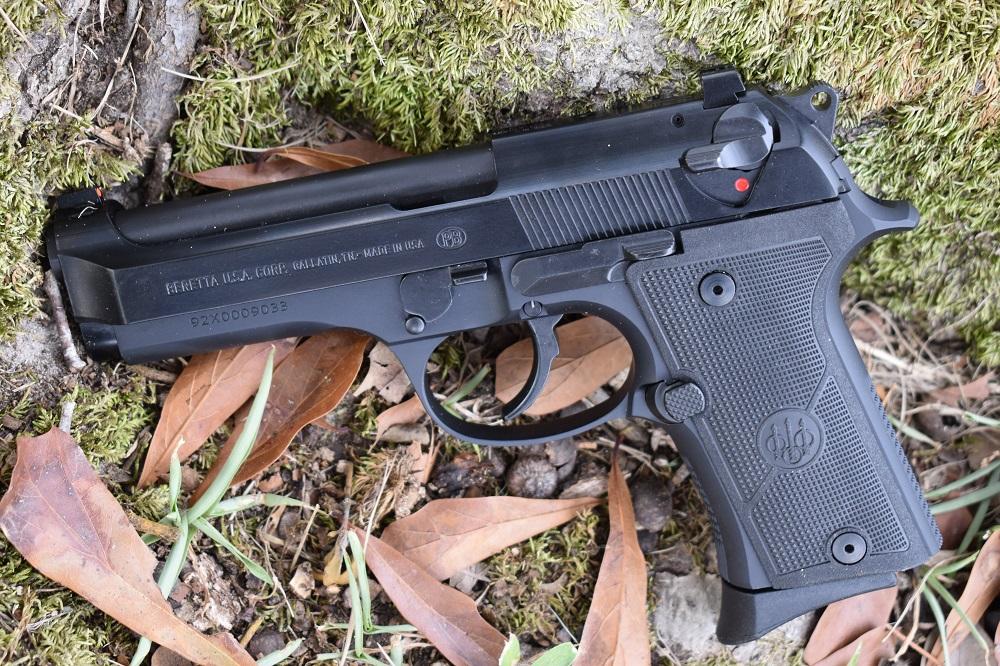
Double-action pistols can cock and fire the gun with the firing mechanism wholly deactivated. The hammer (if a hammer-fired pistol) starts all the way forward, goes back, then drops on the firing pin, which hits the primer and detonates the cartridge.
However, double-action guns come in several sub-categories.
The double-action/single-action semi-auto has a double-action first shot, but the slide cocks the hammer, so every subsequent shot is single-action. The first trigger pull has more resistance, and the trigger has a longer overall travel, but the single-action pull is shorter and easier.
Double-action-only pistols have only the double-action trigger pull.
Light double-action pistols, such as the H&K P30 and Sig Sauer DAK pistols, have a reduced-power hammer spring system that allows for a lighter double-action trigger pull but with longer travel than a DA/SA pistol’s single-action mode.
Double-action revolvers with an exposed hammer can be fired by simply pulling the trigger or cocking the pistol and firing it in single-action mode. Still, the combat method for operating a revolver is only to fire it in double action to keep things simple.
Double-action pistols have several advantages.
Many double-action pistols have well-established designs known for their ruggedness, reliability, and proven track record. This makes the gun a little more drop-safe and much harder to negligently discharge.
Highly skilled shooters often find double-action guns also provide more tactile feedback in the first trigger press.
Many double-action pistols are well-established pistol designs known for being rugged, reliable, and proven. Examples include the Sig Sauer P226/P229 family, the Beretta 92/M9 family, CZ-75, its derivatives, and other guns.
There are, however, downsides. First is the double-action trigger pull, which requires a good amount of practice time to master completely. Second, many of the best double/single-action pistols are a bit large and a bit heavy, which not everyone prefers.
Additionally, there are various control layouts. Sig Sauers only have a decocker, Berettas have a decocking safety (though decocker-only models are available), and CZs either have a manual safety (defeating the purpose of double-action capability) or a decocker.
In other words, a more complicated manual of arms, which you have to put in the time to master to run the gun well. In a self-defense situation, you can’t afford to have an ineffective first shot.
Revolvers for concealed carry?
Well, the downsides aren’t new. The easiest ones to carry (snubbies) are hard to shoot well; the ones that are easy to shoot well are big, heavy, and don’t hold many bullets.
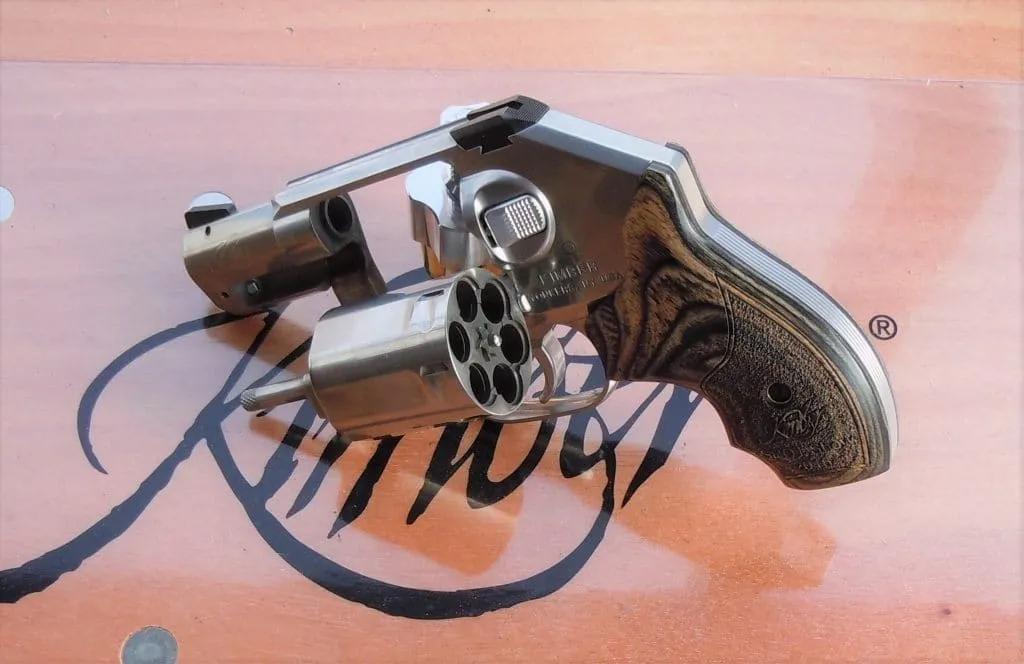
Also, don’t go believing the lore about how reliable revolvers are. The typical revolver has more moving parts than a 1911 pistol.
Each option has its advantages and disadvantages. It’s up to you to figure out what downsides you want to live with.
3. What level of capacity?
The capacity of the firearm matters a great deal. FBI data suggests that most self-defense shootings involve fewer than 6 shots fired. With that said, we’d much rather have ammunition and not need it than the opposite.
As such I tend to recommend and carry firearms that occupy the higher end of the capacity spectrum and can be reloaded quickly. A spare magazine or two is also a frequent part of a good concealed carry kit.
4. What about overall length (OAL)?
Various factors can dictate the viable overall length of a CCW firearm. If you live somewhere cold and wear jackets, for instance, it might be viable to concealed carry even a full-size handgun with ease.
In a hotter climate when all you’re wearing is shorts and a t-shirt, however, a smaller gun might make a lot of sense.
Additionally, being able to get a good firing grip and shoot the firearm well is likely the most important consideration in selecting a firearm with which you might have to defend your life. When in doubt, try a gun at the range before you buy it.
5. Is it comfortable?
While people love James Bond movies, are you certain about carrying a PPK? For its size, the PPK holds little ammo, is heavy, and the iron sights that come with it look like they were designed in the 1920s because they were.
With that said, if you love the gun and will commit to carrying it after having practiced with it, then it’s a better gun than the one you don’t like and thus sat at home in a case.
Why a Concealed Carry Gun?
This is the question that everyone who conceals carries has dealt with at some point. For some folks, it’s a philosophical question, and they think it’s the best way to express their Second Amendment rights.
Aside from that, the biggest reason people embrace the concealed carry lifestyle is they recognize that the world is an unpredictable place, and that, sadly, sometimes violence happens and we might have to commit an act of violence ourselves to preserve our own lives.
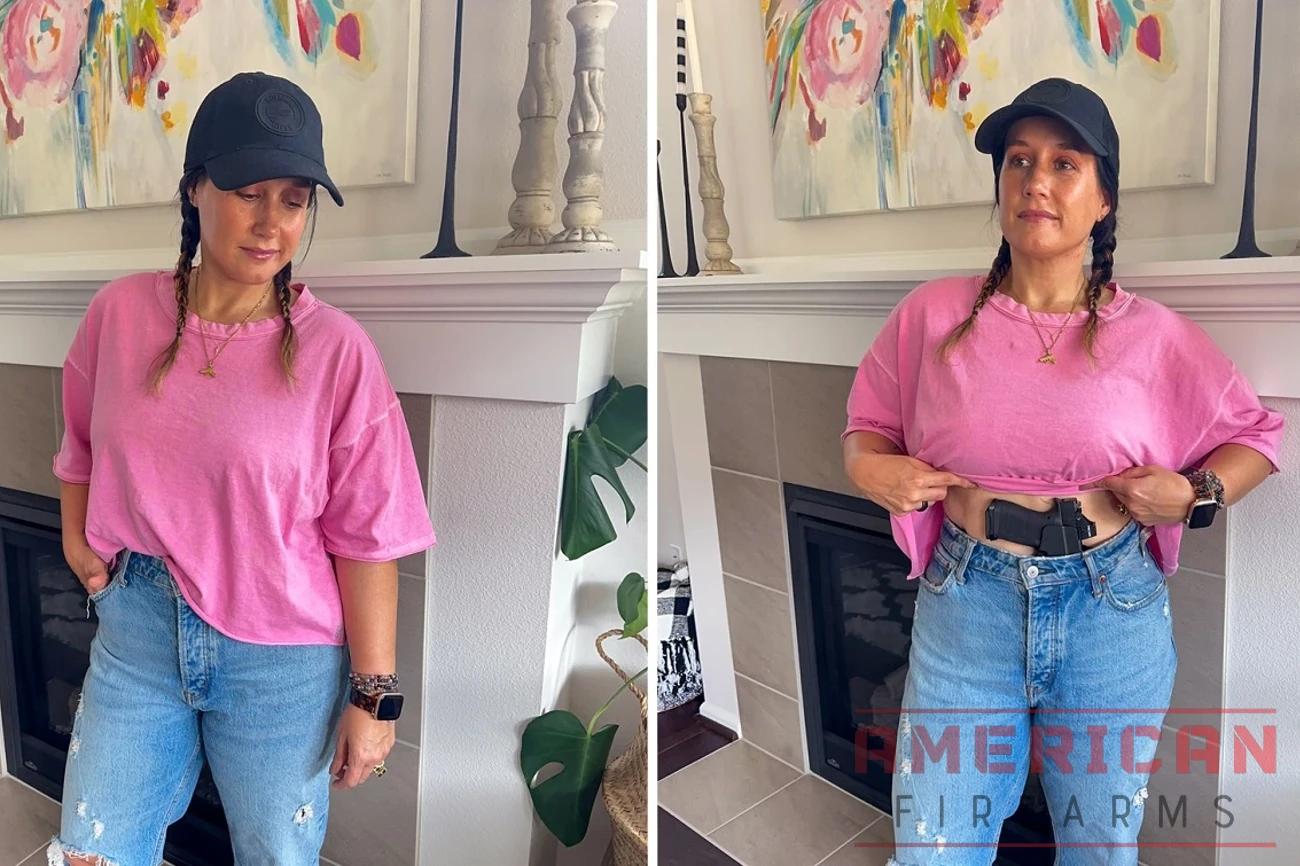
Most folks who concealed carry are law-abiding citizens who hope that they never have to use a firearm in anger against a human being. We wholeheartedly embrace that kind of thinking but recognize that a firearm can be a tool that can help you get home if you absolutely need it.
Basically, then, people concealed carry a firearm because they recognize that law enforcement can’t always be there, and you may need to defend yourself with little to no notice.
Given that, the question becomes: what are the best available tools to make sure I get home safe.
In the same way that we recommend that you wear your seatbelt, we also think that it’s more than reasonable to concealed carry a firearm where it’s legal to do so.
CCW Handgun Comparison
Below is my list of the best concealed carry guns. I list the best choices in terms of value, performance, design, and cost.
Click on the name to head to the product page, read reviews and check prices or skip ahead to the list of pistols.
| Model | Caliber | Capacity | Weight (oz) | Price | Category |
|---|---|---|---|---|---|
S&W M&P Shield M2.0 | 9mm | 8+1 | 18.8 | $460 | Best Overall |
S&W Shield EZ | 9mm | 8+1 | 23.1 | $426 | Best Beginner |
Sig P365 | 9mm | 10+1 | 17.8 | $500 | Most Variety |
Glock 43 | 9mm | 6+1 | 17.95 | $421 | Best Glock |
Ruger LCP MAX | .380 | 10+1 | 10.6 | $436 | Best Pocket |
Ruger LCR | .357 | 5 | 17.1 | $555 | Best Revolver |
Taurus G3C | 9mm | 12+1 | 22 | $281 | Best Budget |
H&K VP9SK | 9mm | 10+1 | 23.07 | $831 | Best Premium |
How We Picked
Size
We kept our selections to pistols with barrels under 4 inches.
Reliable Brands
We concentrated our recommendations on brands with a history of reliable performance.
Overall Length
We excluded full-sized pistols because their longer length requires more effort to conceal.
Self-Defense Calibers
We focused on 9mm semis & .38 Special/.357 revolvers which offer the best mix of control & power.
More on our selection process
Concealed Carry Gun Reviews
1. Best Overall: Smith & Wesson M&P M2.0
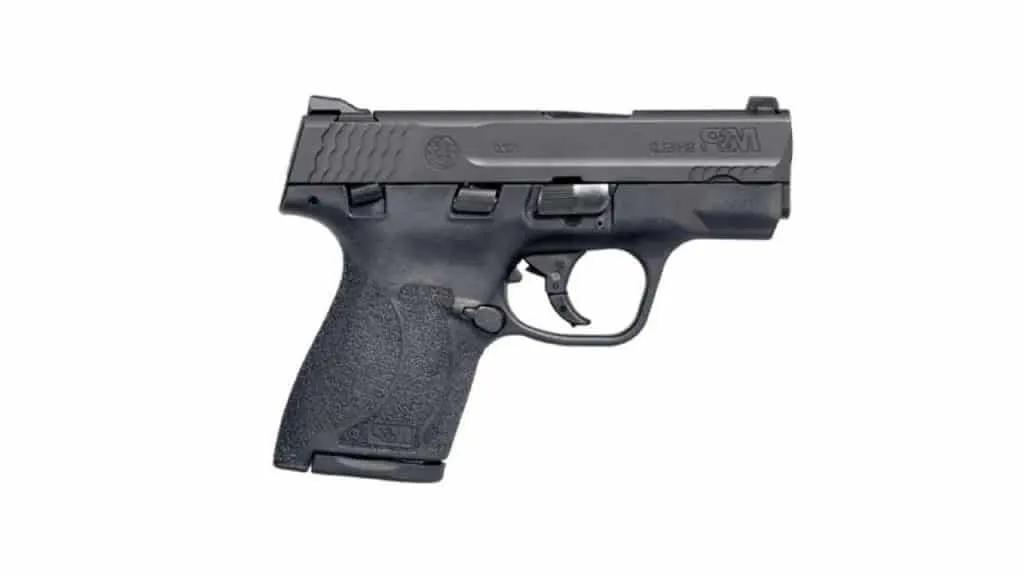
$459.99

55
EXCEPTIONAL
Performance Scores
What we liked:
- Builds on original Shield’s strengths
- Softer grip texture designed for CCW avoids skin irritation
- Near perfect size for many shooters
- Easy to shoot quickly
What we didn’t like:
- Single stack magazine limits capacity
- Not as many specialized holsters
- Articulating trigger is still clumsy
First up, and our choice for the best overall concealed carry gun – the Smith & Wesson M&P Shield M2.0 Compact.
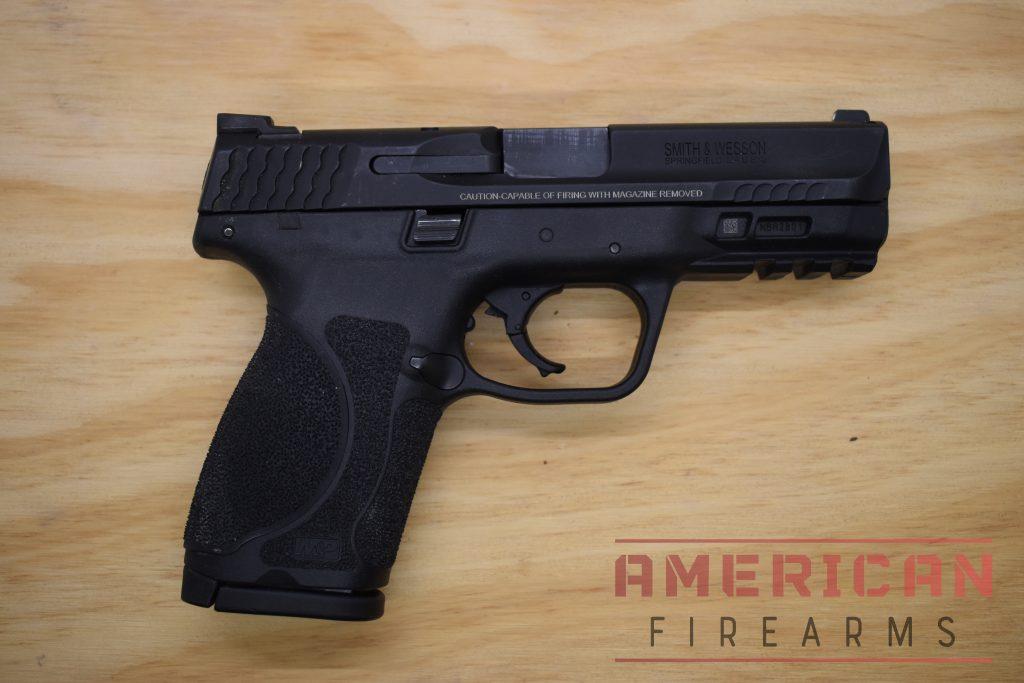
The original Shield revolutionized the concealed carry scene by blending affordability, lightweight design, and reliability. This combination made it arguably the most popular concealed carry gun of its generation.
It’s success even spawned a number of copycat semi-automatic pistols – from the Walther PPK to the Glock 43x. It remains an outstanding firearm, specifically engineered for optimal concealed carry use.
Even more CCW-friendly
The 2.0 builds on the strengths of the original Shield, introducing a few modifications to enhance its suitability for concealed carry. For instance, the aggressive texture of the polymer grip has been moderated to prevent skin irritation when holstered.
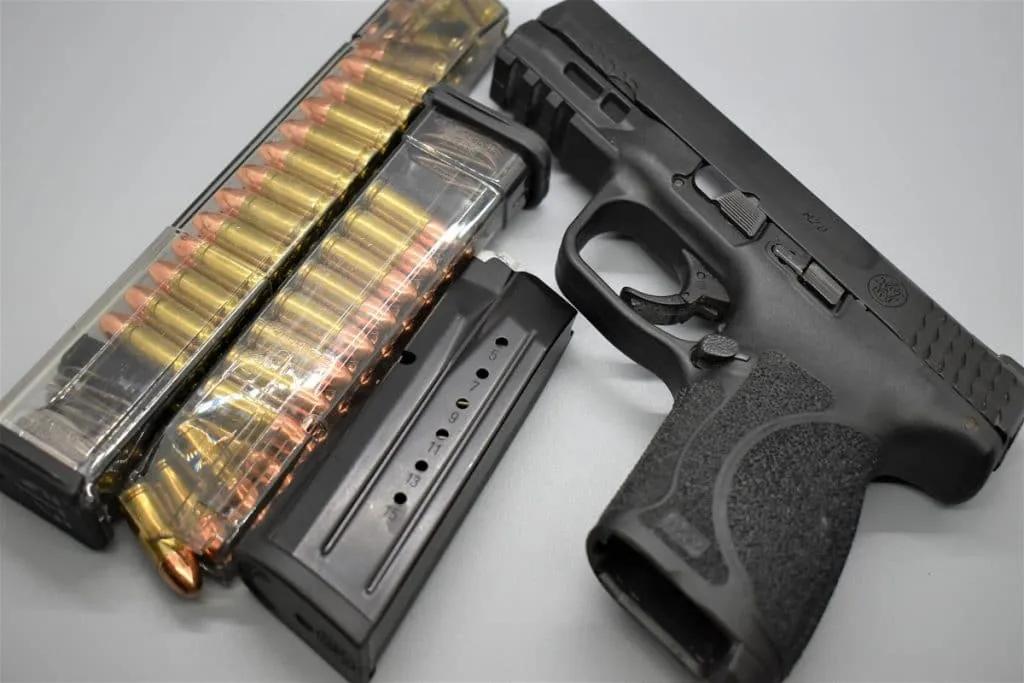
This change doesn’t impact shootability though — as the M&P is a concealed carry weapon that’s still easy to control even when shooting quickly.
With its 3.1-inch barrel length and Armornite finish on stainless steel, the gun strikes an excellent balance between control and durability.
While the M&P 2.0 Compact follows the design of the full-sized Shield 2.0, it’s tailored for concealed carry. It closely matches the specifications of the popular Glock 19 but is based on S&W’s M&P system, combining the strengths of both. What else can we say?
Single stack slimness
The firearm features a single-stack magazine and a slim design with rounded edges, ensuring it’s easily drawable for quick access.
Chambered for the popular 9mm round and holding eight rounds, this firearm combines ease of use, concealability, and stopping power in a discreet package.
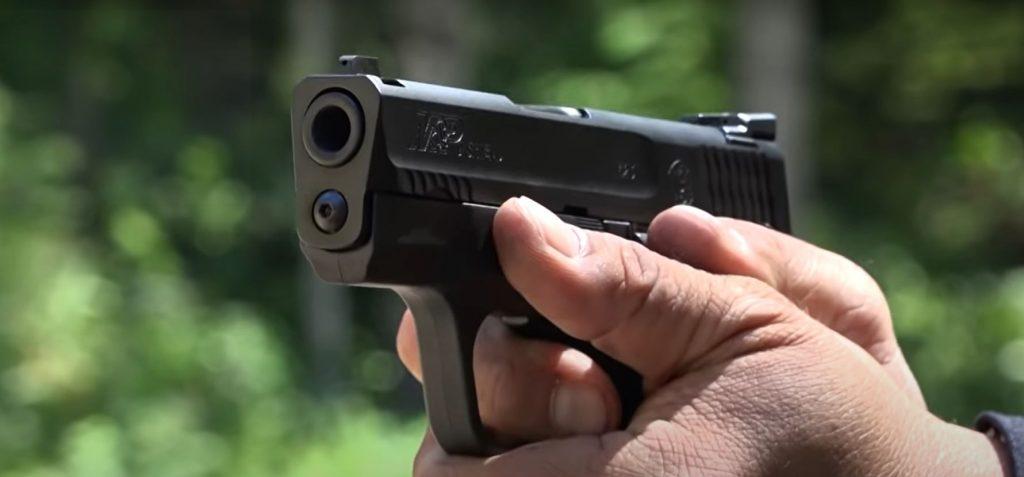
Beyond an everyday carry piece
Is the Shield 2.0 designed for carry? Yes indeed. The standard 7+1 magazine slips right into the grip for maximum concealability.
That said, the optional 8 round magazine gives gun owners another 3/4″ to the front of the grip, and another 1/2″ to the rear, giving you more grip real estate, and in turn, control.
The larger mag will impact concealability, but for some, it may be the preferred stick, especially if you’re using the Shield for target practice, which will help you keep reloads at a minimum.
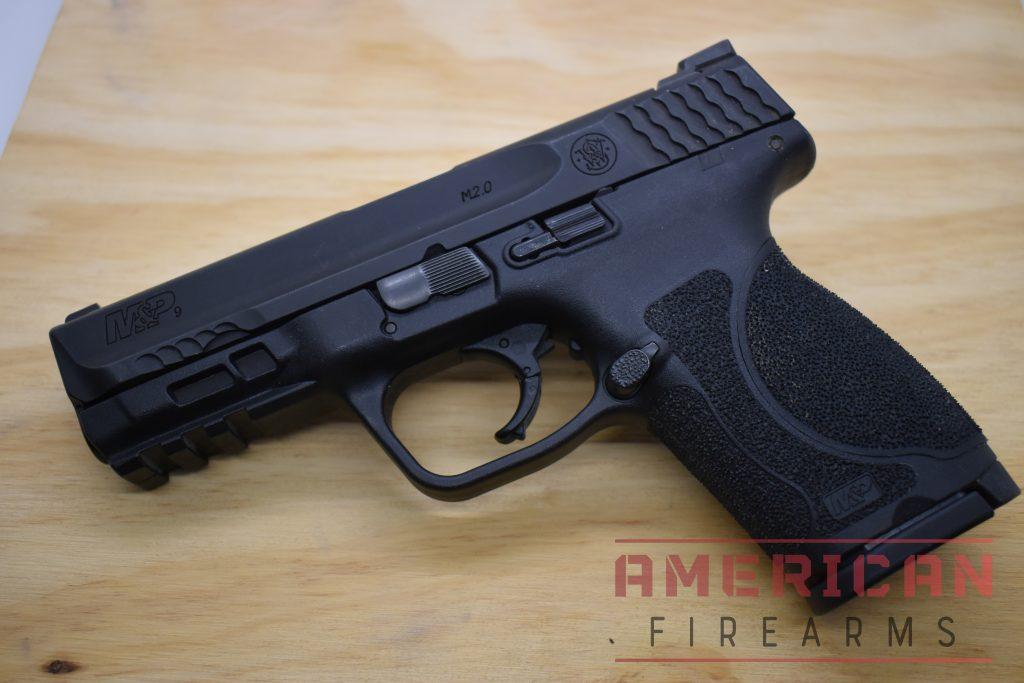
Better trigger pull & solid sights
The Shield 2.0 has a short, consistent trigger pull that breaks in the 5 pound range. One consistent gripe is the numb — or mushy — feel of the trigger due to the pivoting safety, which can be resolved with an aftermarket trigger kit.
It’s improved on the 2.0 — it’s lighter and crisper than the original — but still uses the pivoting safety design, possibly to avoid patent lawsuits from the Glocks of the world.
The new trigger has a much more audible & tactile reset, which some folks thought was missing from the original Shield.
We also found the three-dot steel sight easy to use and the gun to be accurate and reliable for hundreds of rounds.
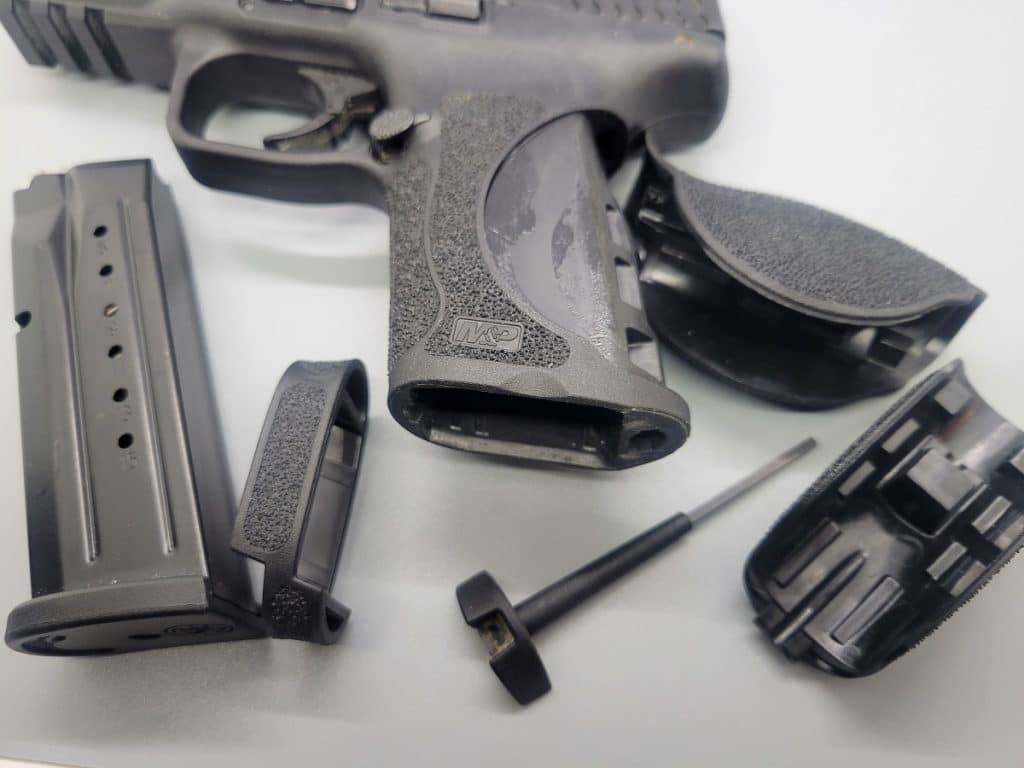
Surprisingly little recoil for a compact handgun
Smaller handguns can increase the felt recoil due to their lack of mass, but with the M&P compact, it was minimal and easy to handle, making this great for a wider variety of shooters.
It’s no surprise that this gun has sold well since its introduction in 2017. Despite the glut of competitors out there in the compact 9mm space, the Smith & Wesson M&P Shield M2.0 truly stands out from the rest as an easy first choice for concealed carry.
If you want a deep dive into the Shield check out our M&P 2.0 review.
2. Best for New Shooters: Smith & Wesson M&P Shield EZ
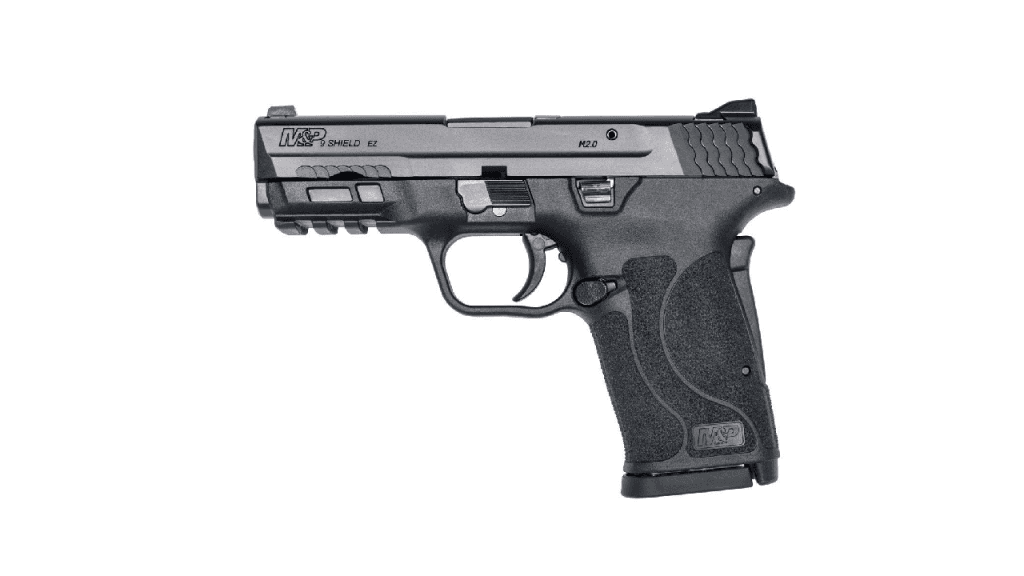
$425.99

31
AVERAGE
2025 Awards & Rankings
Performance Scores
What we liked:
- Same great M&P 2.0
- Much easier to rack
What we didn’t like:
- Teething issues with initial release
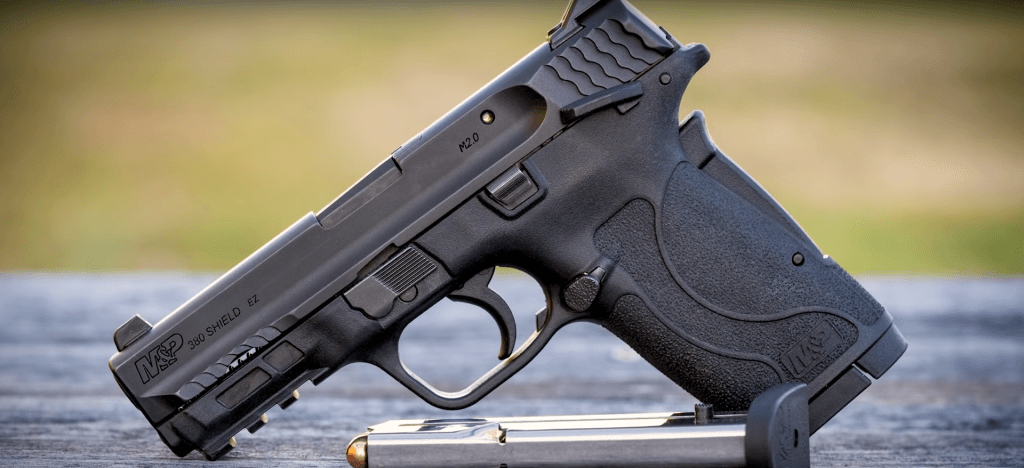
Smith & Wesson took their ever-popular Shield and made it even easier to rack, load, and shoot with the new Shield EZ.
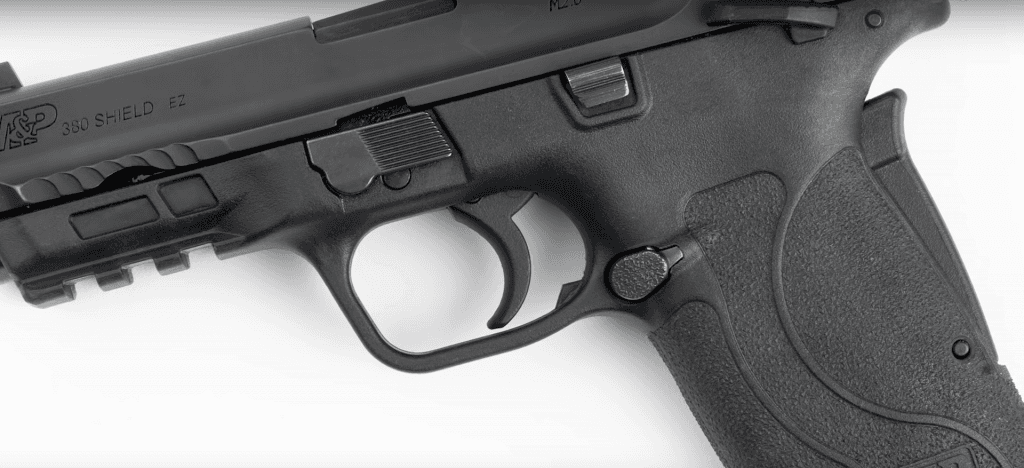
The .380 EZ still packs plenty of stopping power, but with less felt recoil than that 9mm version of the Shield. The grip is also surprisingly slim, which is great for folks with smaller hands or for those less familair with shooting pistols.
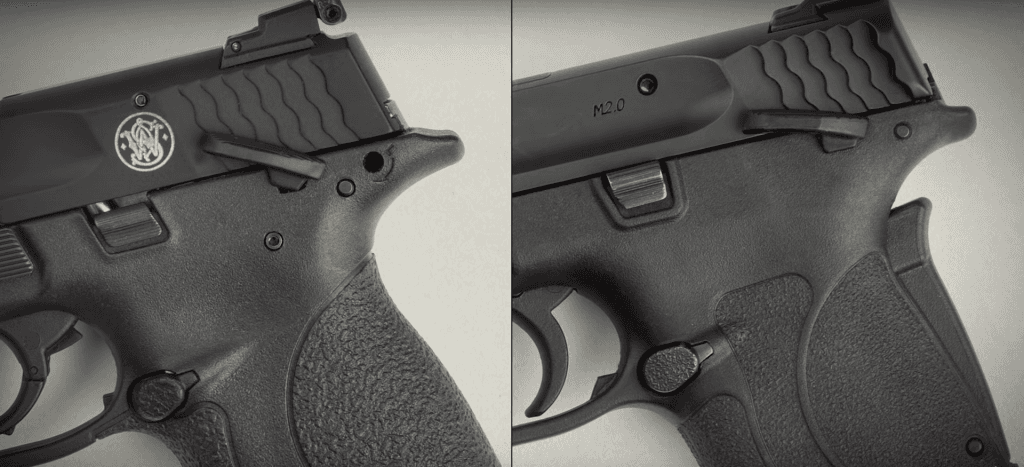
Add in the under-barrel Picatinny rail and grip safety, and the EZ gives you a lot to love in a package that’s easy to rack.
3. Most Variety: Sig Sauer P365
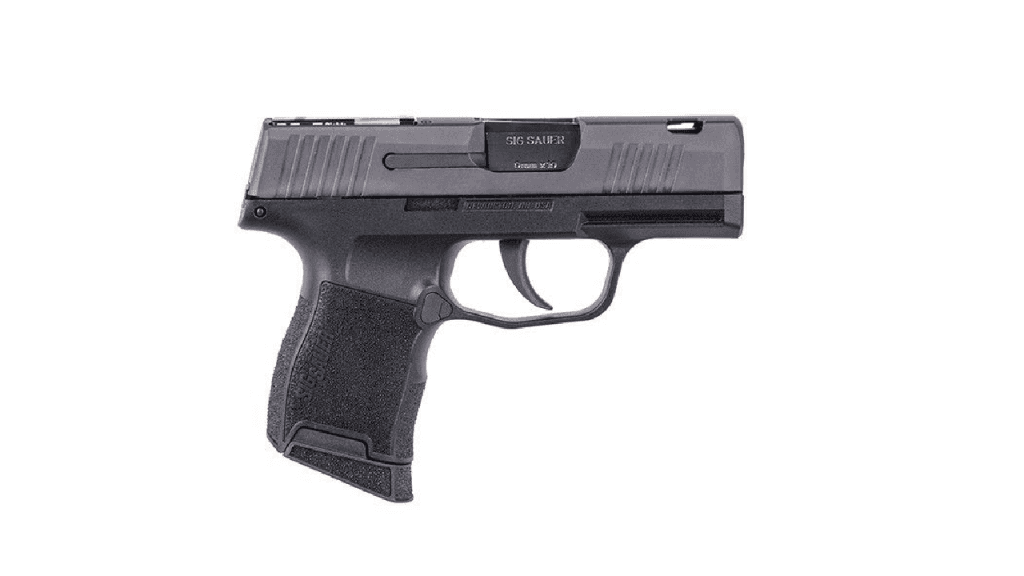
$499.99

48
EXCEPTIONAL
2025 Awards & Rankings
Performance Scores
What we liked:
- Great trigger
- Good mag capacity
- Comfortable grip & ergos
- Optic plates included
- Lots of variation within the P365 range
- Toolless disassembly
What we didn’t like:
- Small magazine release
- Mag insert is awkward
- Lack of a tang requires careful hand placement
- No grip or trigger safety
If the Smith & Wesson isn’t going to cut it for you, then there’s another clear 9mm option – the Sig Sauer P365 compact pistol. The gun has been on the market for years and is still widely popular for daily carry.
Heck, Sig called it the “365” because it’s designed to be carried every day of the year.
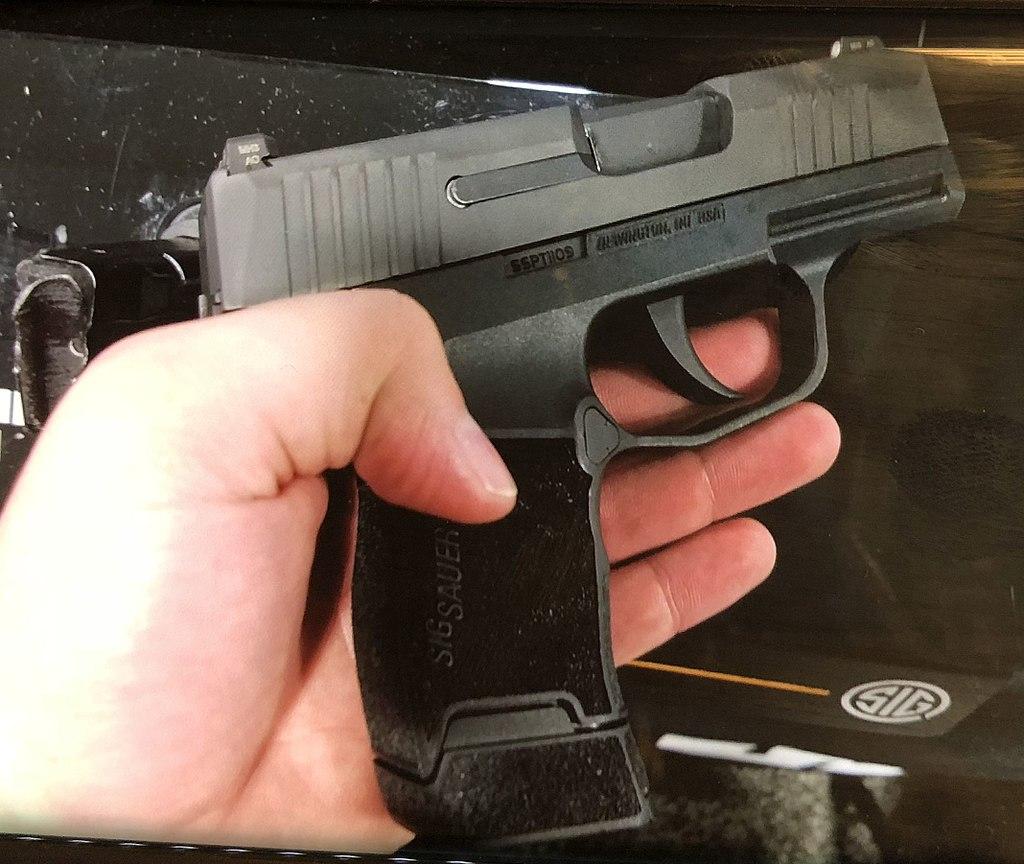
Impressive capacity, quality, and variety
The handgun is incredibly compact, a little smaller than the Glock 43, but amazingly manages 10+1 rounds of 9MM – 2-3 more than many on this list.
There’s even a 12-round extended mag available.
There are also 5 variations of the P365, so if you want something more substantial there’s the XL version, or if you’re looking to package the Sig with an optic, there’s a P365 which includes their RomeoZero red dot. A little something for everyone.
This combination of small size and stainless steel frame offer a stable platform, and the short 3.1-inch barrel length paired with higher capacity makes it one of the best concealed carry handguns around, which is evidenced in the popularity of Sig’s carry gun.
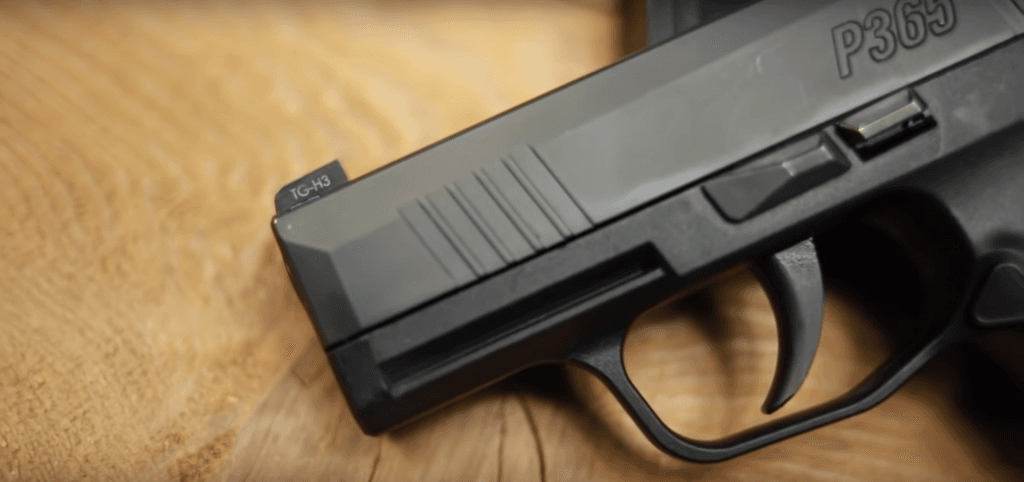
Day/Night Sights
The Sig Sauer P365 features what are called X-Ray3 day/night sights. This is a variation of the three-dot sight where the front sight is colored green and the rear sights lack any color, which creates high-visibility contrast and aids in target acquisition.
There’s also a manual safety, striker action, a polymer grip, and a stainless steel frame.
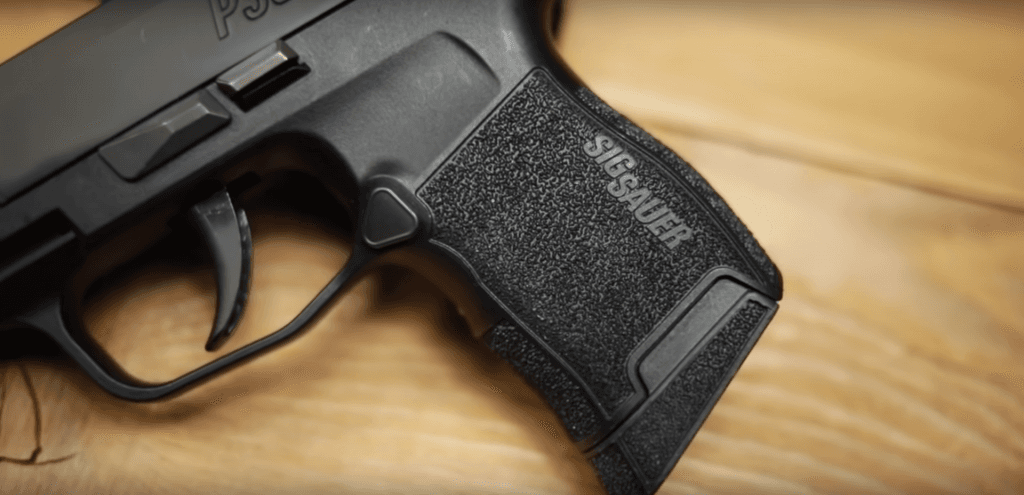
Accuracy & control
The P365 delivers reliable accuracy at the range. Its ergonomic design facilitates a high grip on the pistol, which lowers the bore axis and minimizes recoil.
Considering the P365’s weight of around 18 ounces, it’s noteworthy since lighter pistols often result in more noticeable recoil for the same cartridge. The higher purchase available on the P365 will help mitigate its lighter weight.
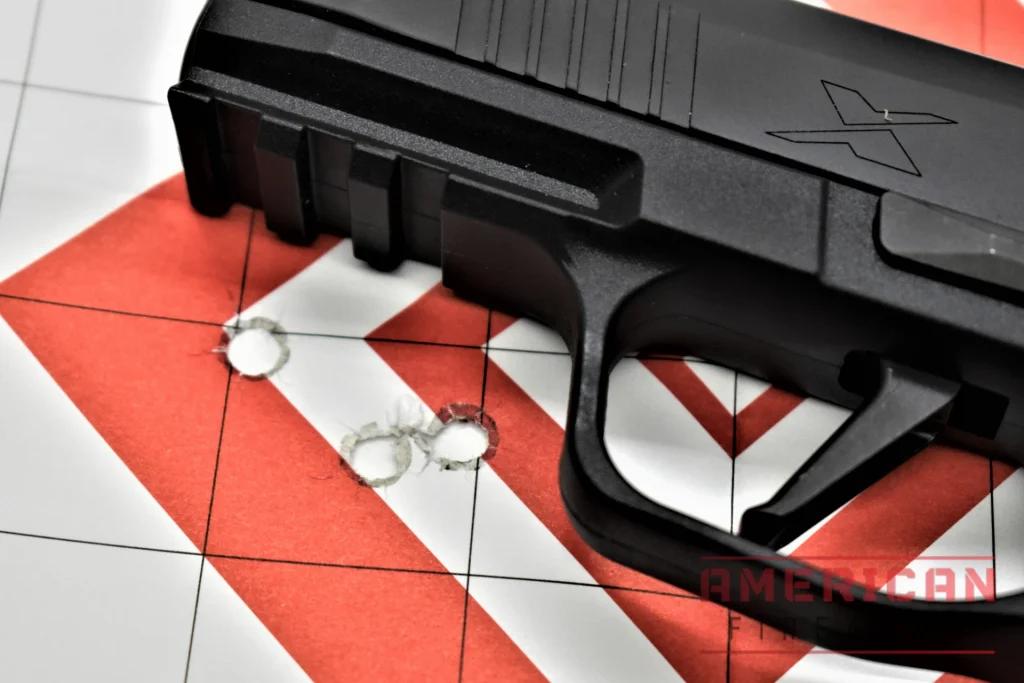
With the extended magazine and a reasonably sized palm swell, most shooters can grip the entire handle, further improving control over an already manageable firearm.
I found the trigger offers a clean break with crisp movement and a light trigger pull that softened with use. I recently took the new P365 XMacro out to the range, which put up an impressive performance with its flat-faced trigger.
It’s an incredibly accurate handgun and gives you all the P365 platform has to offer, with 17 rounds on tap.
Flaws worth noting
The only major gripe our testers had was with the magazine release. It’s small and can be hard to hit. The magazine also can get caught on your hand when inserting it.
The frame is so small that at times, it can be a little tough to use especially if you have big hands. There’s also no tang to speak of on the compact versions of the pistol, so you’ll need to be careful to avoid slide bite.
A slightly larger option, if you want to keep in the Sig Sauer line of carry guns, would be the P320 XCOMPACT. The P320 offers a 3.5-inch barrel and weighs in at just under 26 ounces while packing 15-round capacity.
As with a number of Sig Sauer products, the P365 tends to be more expensive than other handguns on this list, so if price point is a consideration there are probably better options for you.
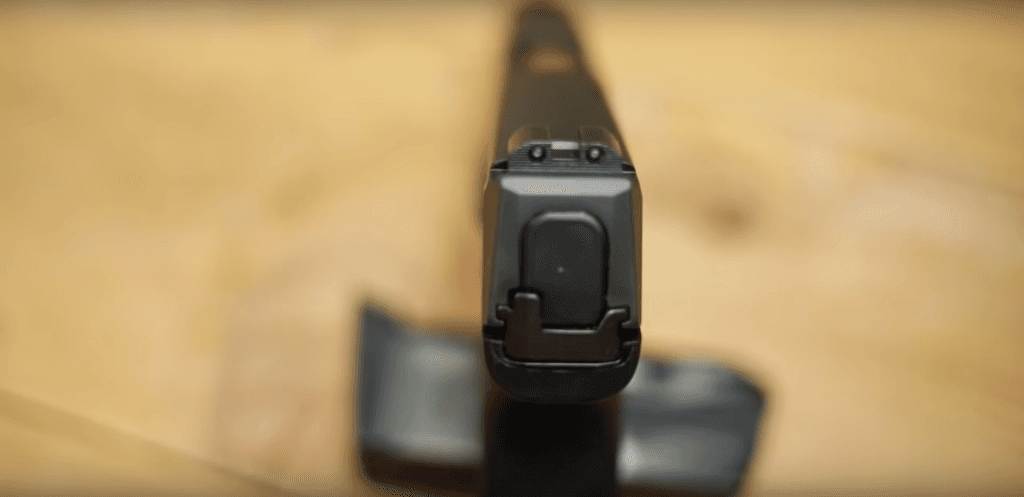
4. Best .380 Option: Ruger Security 380
The Ruger Security 380 pistol surprised me; it is an incredible compact carry pistol. I had no knowledge of this gun before getting my hands on it and was genuinely excited about how comfortable the gun was to shoot.
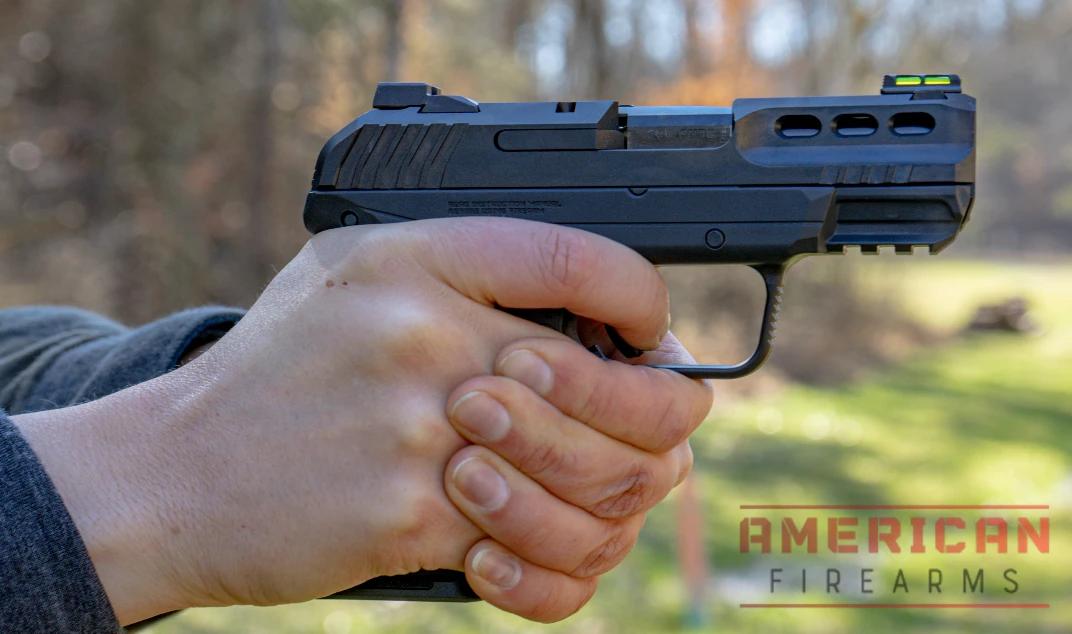
Many small guns designed for concealed carry, with their short barrels and hot ammunition, can be snappy and challenging to grip during recoil. However, I found the Security 380 comfortable, even when firing 5 or 10 rounds consecutively.
If you’re concerned about capacity, good news, the gun has a 15+1 or 10+1 capacity — which is competitive against the Sig P365, Walther PDP-F, S&W Equalizer, and other guns designed for concealed carry with higher capacity rates.
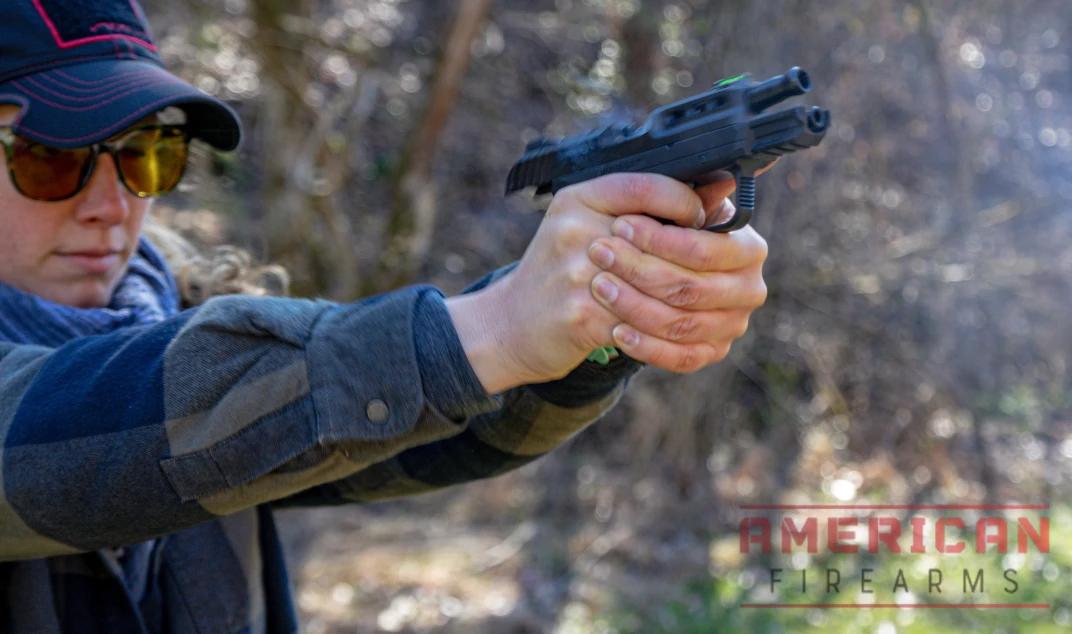
The Security 380 has a 3.42-inch barrel, equipped with a front fiber optic sight and a drift-adjustable rear sight.
Ruger also outfitted it with their Lite Rack system, which includes slide serrations, pronounced cocking ears, and a lighter recoil spring, which really helps make manipulating the slide much easier.
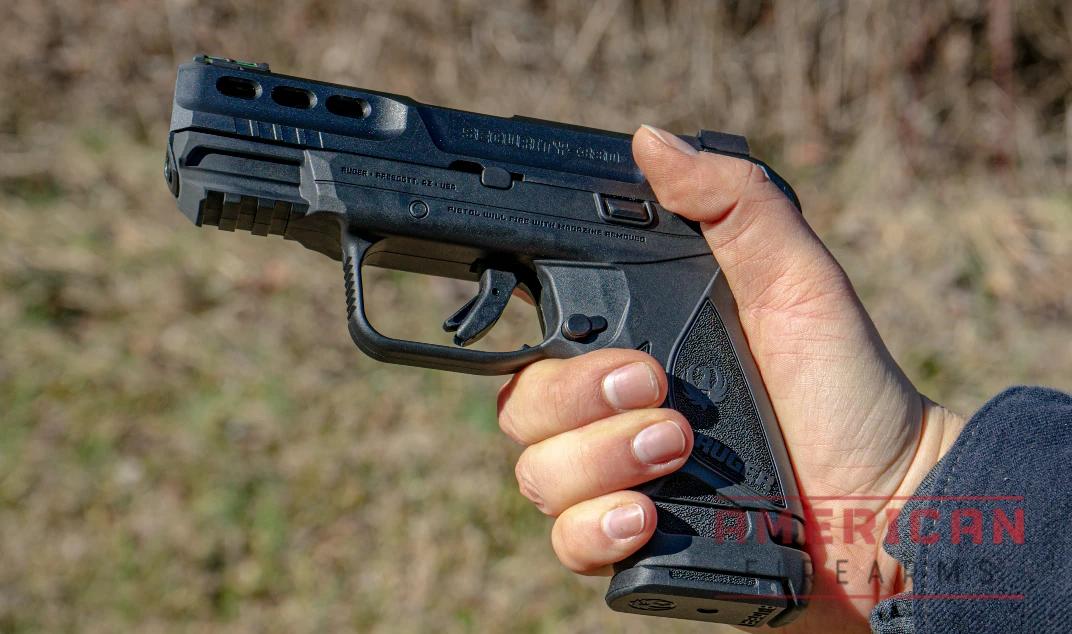
This design makes the slide easier to manipulate, a significant advantage for those who might struggle with the hand strength required for a traditional slide.
There is a small external thumb safety. While I don’t prefer it on my concealed-carry handguns, those who do should ensure they train adequately.
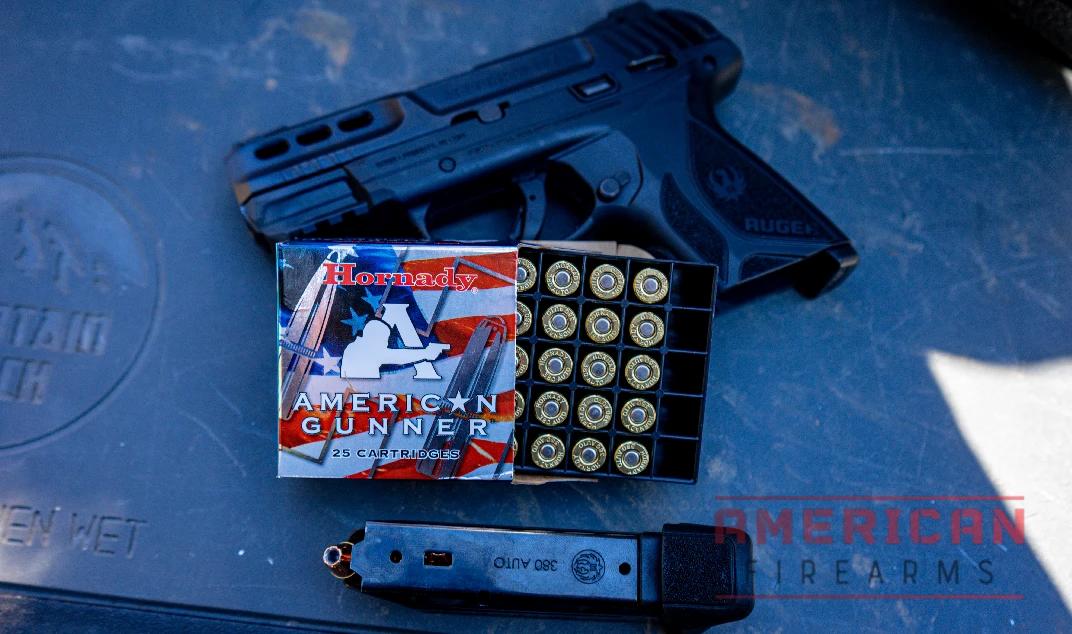
5. Best Carry Glock: Glock 43
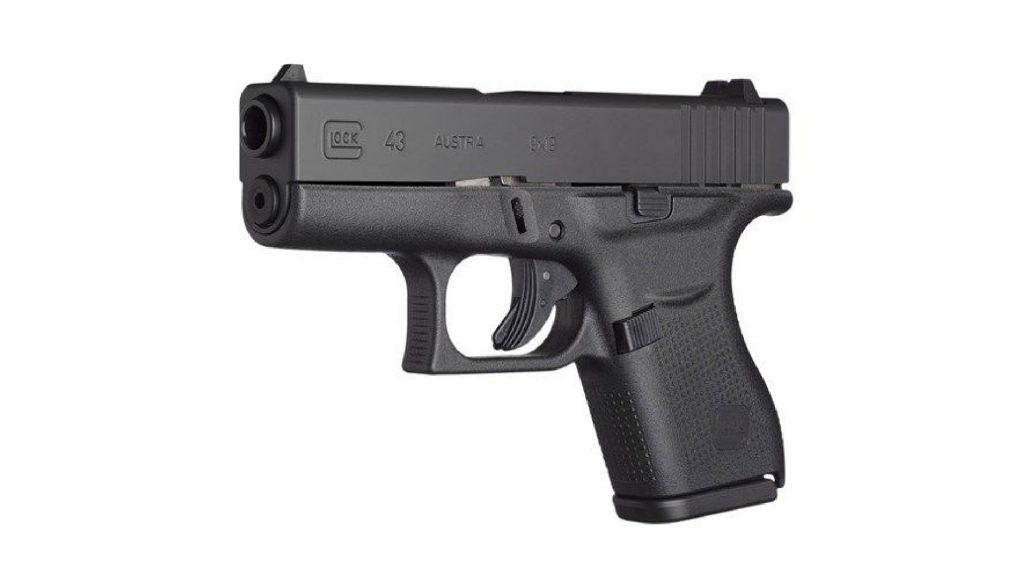
$420.99

43
EXCEPTIONAL
Performance Scores
What we liked:
- Easily concealable slim size
- Little kickback
- Light trigger pull
What we didn’t like:
- Requires a firm hand to shoot consistently
- Limited 6+1 capacity
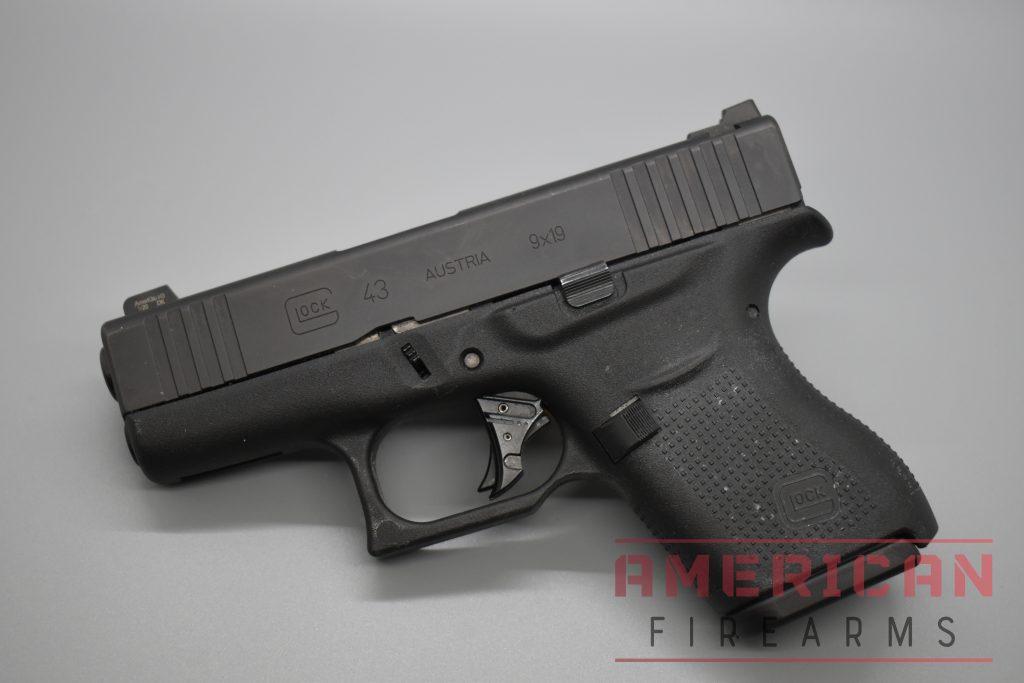
For shooters who aren’t keen on the .45 and have a preference for the Austrian ‘wundergun’, the Glock 43 is another popular choice among concealed carry enthusiasts.
This polymer pistol is small, with its single-stack orientation but it’s still one of the best options for personal protection.
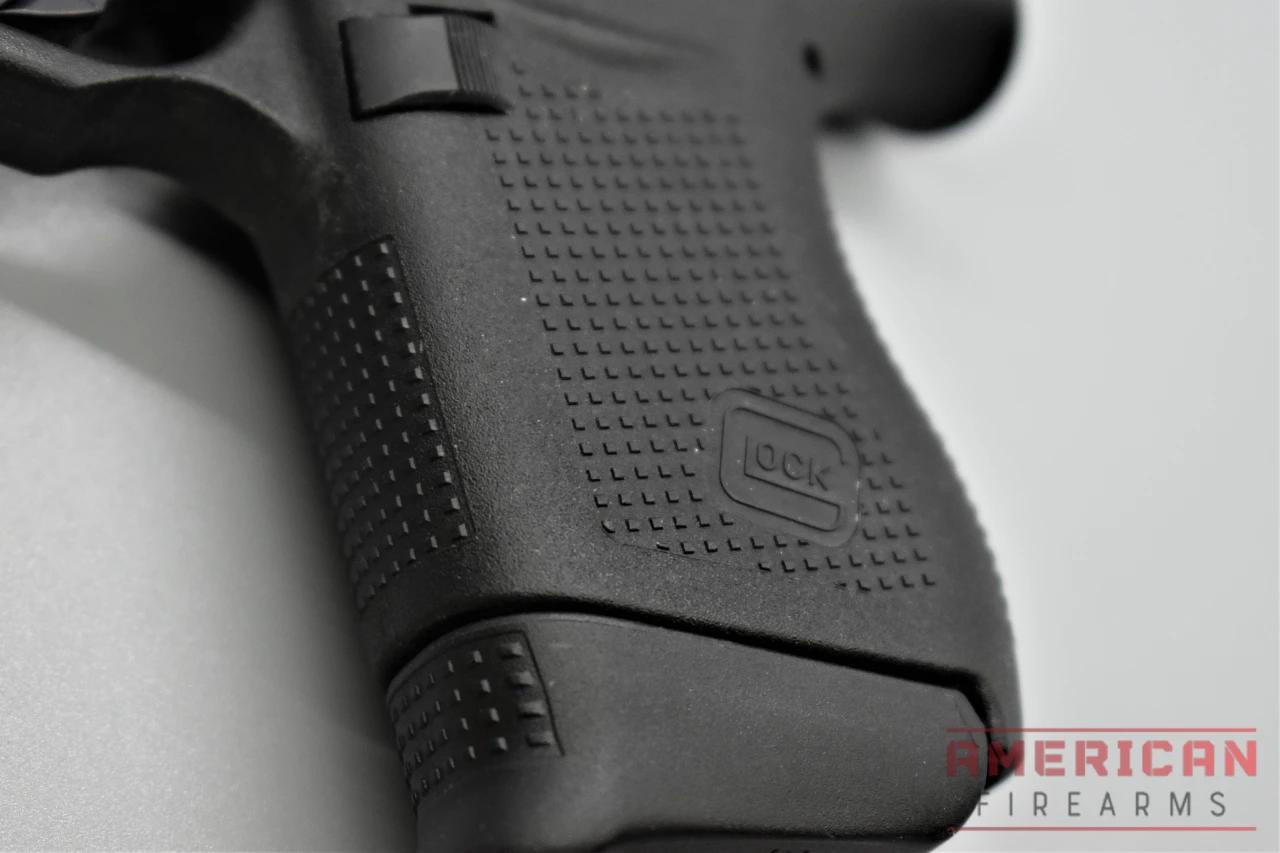
Easy to carry
The Glock 43 is a small sub-compact carry pistol that is easy to use and carry.
It’s slim and compact, making it easy to holster inside the waistband. The pistol comes with a standard six-round magazine capacity and a Safe Action on other popular Glock pistols like the Glock 19 and Glock 26.
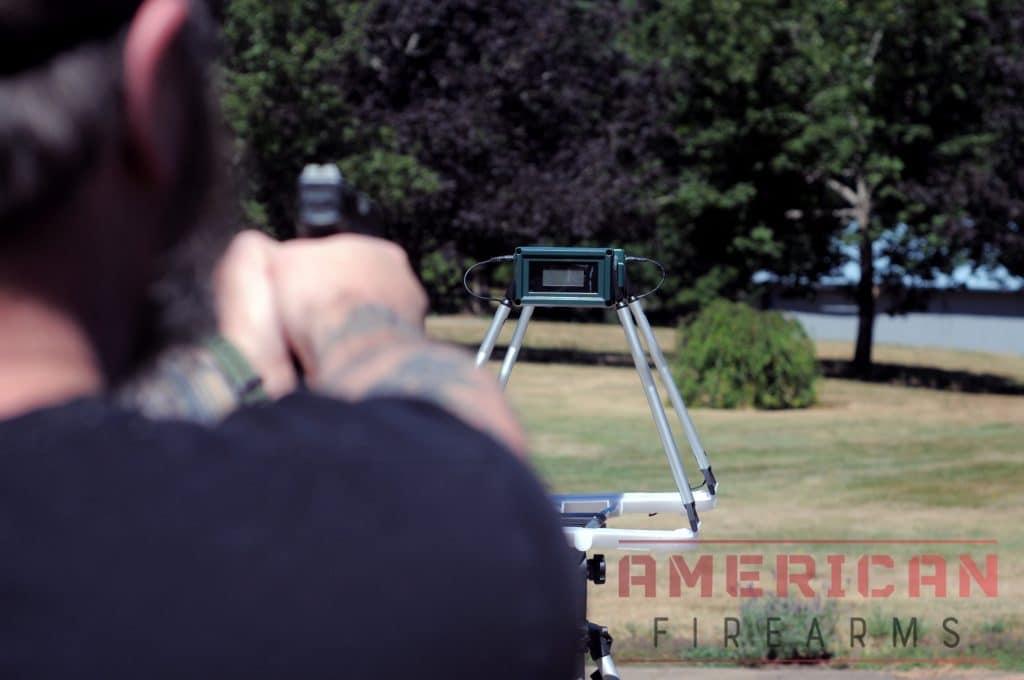
The same great trigger
This gun has an excellent trigger pull. It’s easy for even smaller, weaker hands with a clear break-over and if you’re up for an ever smoother pull there are a number of upgraded trigger options for the Glock.
Accuracy for a small pistol like this is often tough, but the Glock 43 performed admirably in our testing.
I find that the G43 requires a firmer grip when firing to keep the pistol on target, a common issue with these smaller single stacks and not unique to the Glock. We cover the G43 in more depth in our hands-on review.
An incredibly thin handgun
Comparing a 6-round Glock 43 magazine to a 10-round Glock 26 magazine
6. Best Pocket Pistol: Ruger LCP II
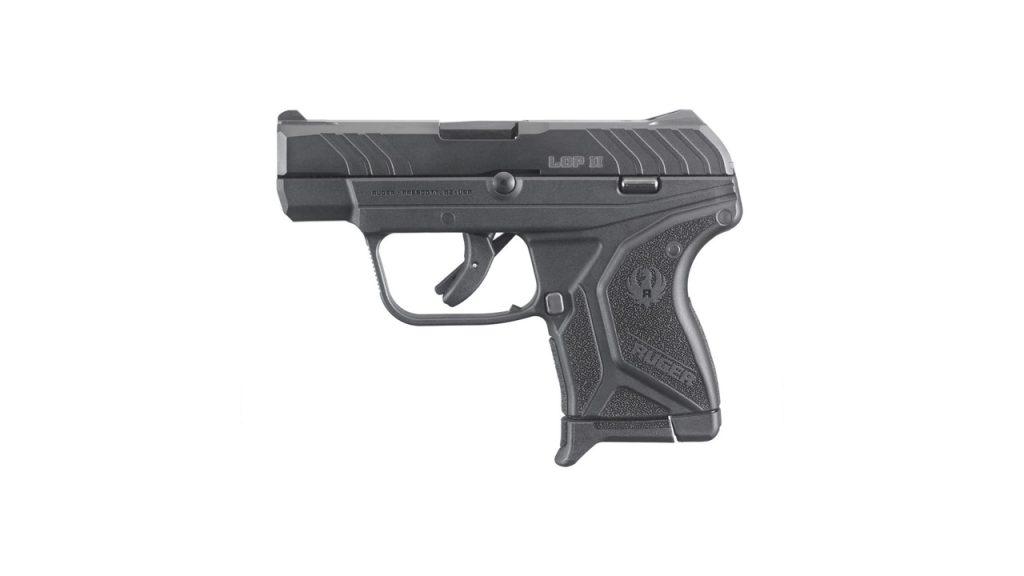
$435.99

34
AVERAGE
2025 Awards & Rankings
Performance Scores
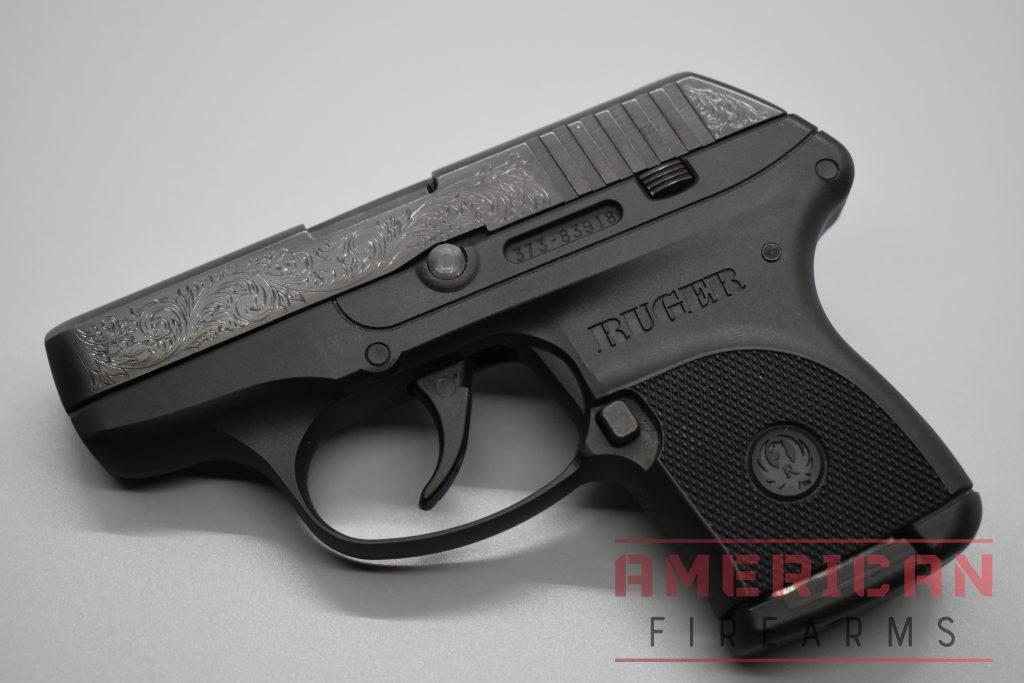
The Ruger LCP II gives you lots to like – It’s incredibly comfortable to carry, standing less than 4″ tall. Available in various colors, its .380 ACP provides adequate stopping power while still allowing control over the compact pistol.
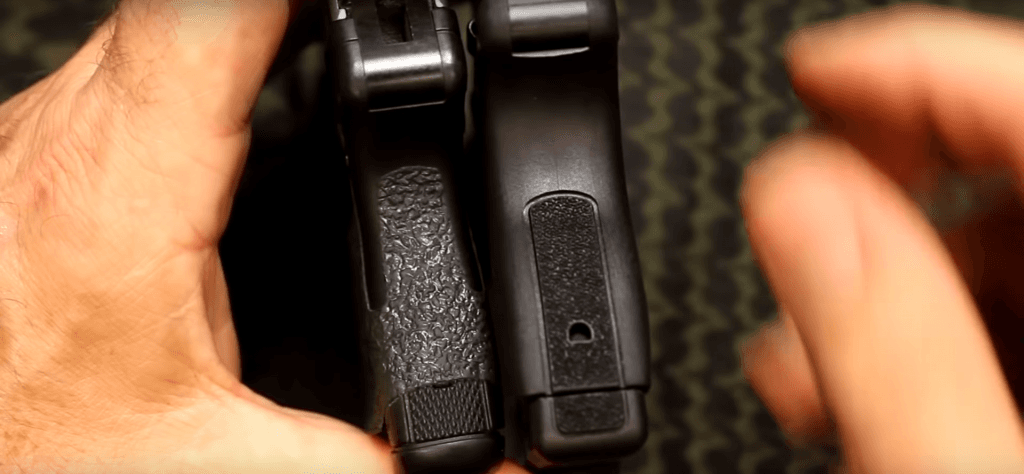
The compact Ruger LCP is suitable for both pocket carry and as a backup, such as for ankle carry. Though it only has 6+1 capacity, it’s substantial for a firearm of this size.
We recently took the classic LC9 — the 9mm iteration of the LC platform — out for a long-term review.
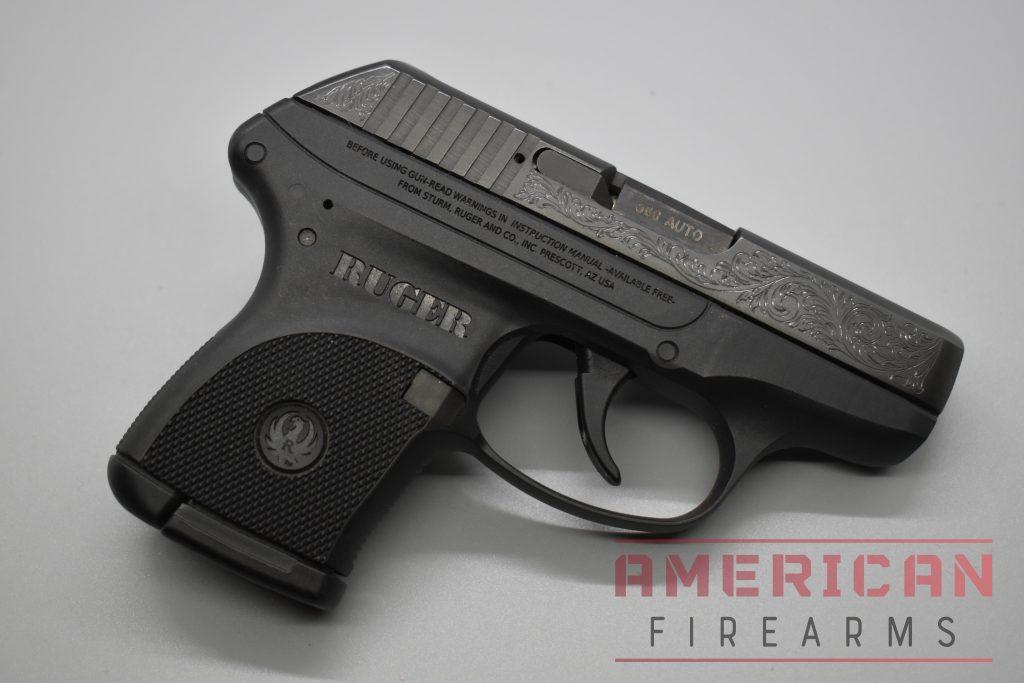
7. Best CCW Revolver: Ruger LCR
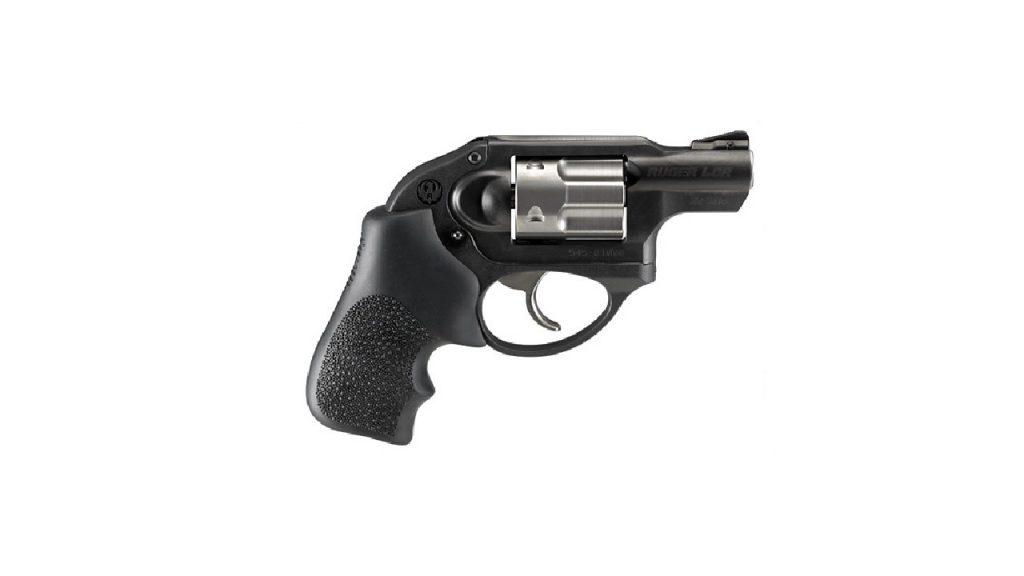
$554.99

34
AVERAGE
2025 Awards & Rankings
Performance Scores
What we liked:
- Powerful .357 round
- Small frames makes it ideal for CCW
- Smooth hammerless design
- Excellent Hogue Tamer grip
What we didn’t like:
- Small format + polymer frame delivers more felt recoil
- Not as slim or lightweight as semi-auto options
Double-action revolvers have been a popular choice for concealed carry for over half a century. The weapon type simply works well and is easy to conceal, which is why people like it for self-defense.
The Ruger LCR is the best snub nose wheel gun for daily carry.
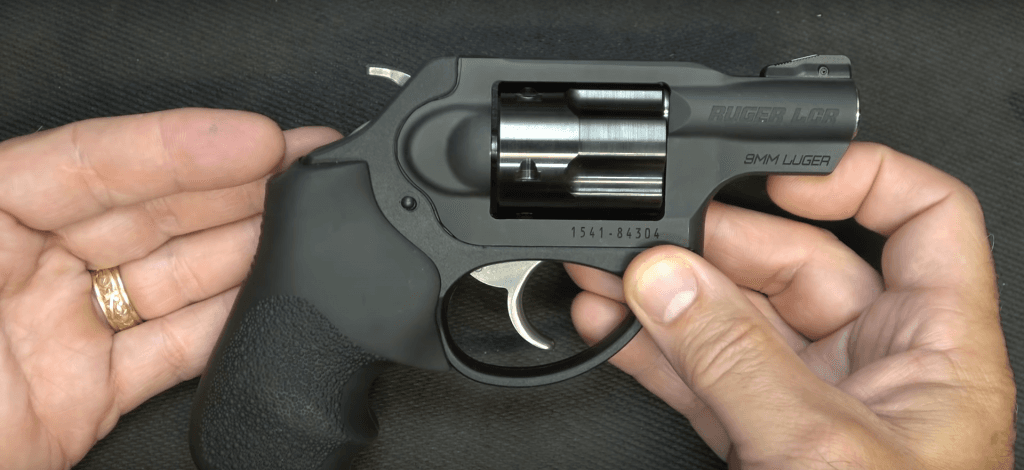
Lightweight Compact Revolver (LCR)
LCR stands for Lightweight Compact Revolver. Ruger knew what it was doing with this gun. It’s a straightforward, hammerless, five-shot wheelgun with significant power due to its .357 Mag round.
The polymer housing holds all the components internally (no external hammer) so you get the reliability of a hammer-fired handgun with next-generation concealability.
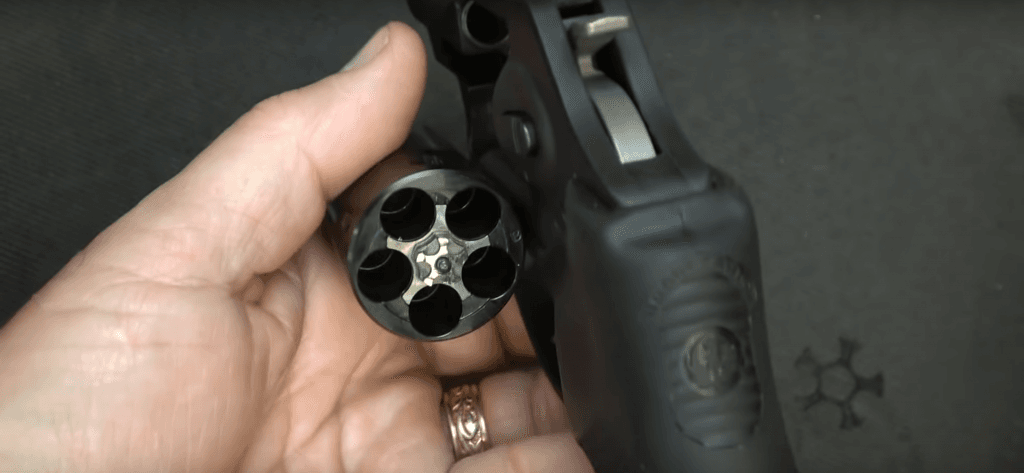
Kicks like a .357 revolver
The LCR does pack a pretty big kick, but that can be expected with this round when paired with such a small format. The additional weight of the all-steel frame does help with control.
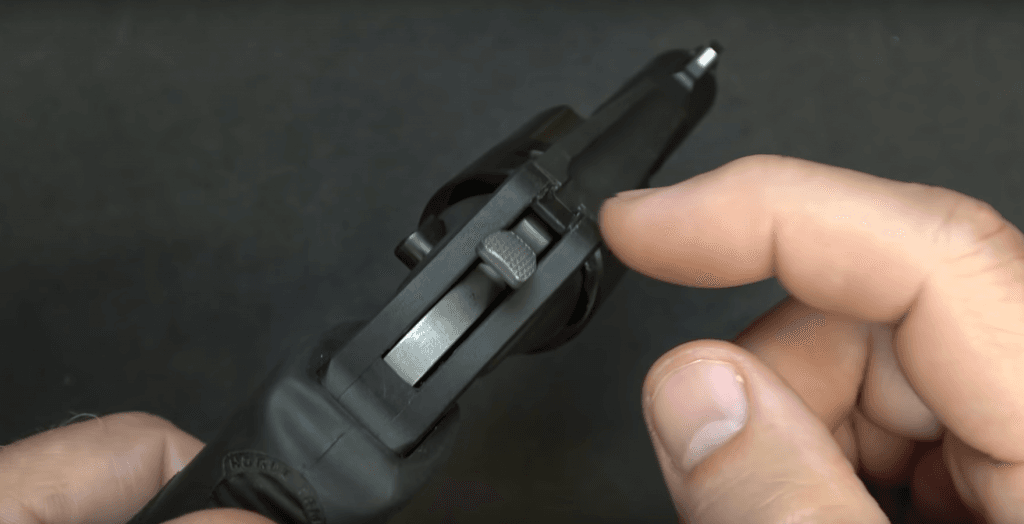
Easy to hang onto
We also liked the Hogue Tamer grip for its comfortable and secure hold. There’s still plenty of noise and concussive energy, but that’s the nature of snub-nose guns – and not a bad thing when it comes to personal protection.
The gun is accurate up to about 15 yards, which is plenty for concealed carry.
While other small revolvers exist, few combine the LCR’s power, lightweight design, and concealability. If you’re not in the market for a semi-auto, then the LCR is a good choice.
The .357 LCR is the best balance of stopping power and control in the LCR line
8. Budget Semi-Auto Pick: Taurus G3C
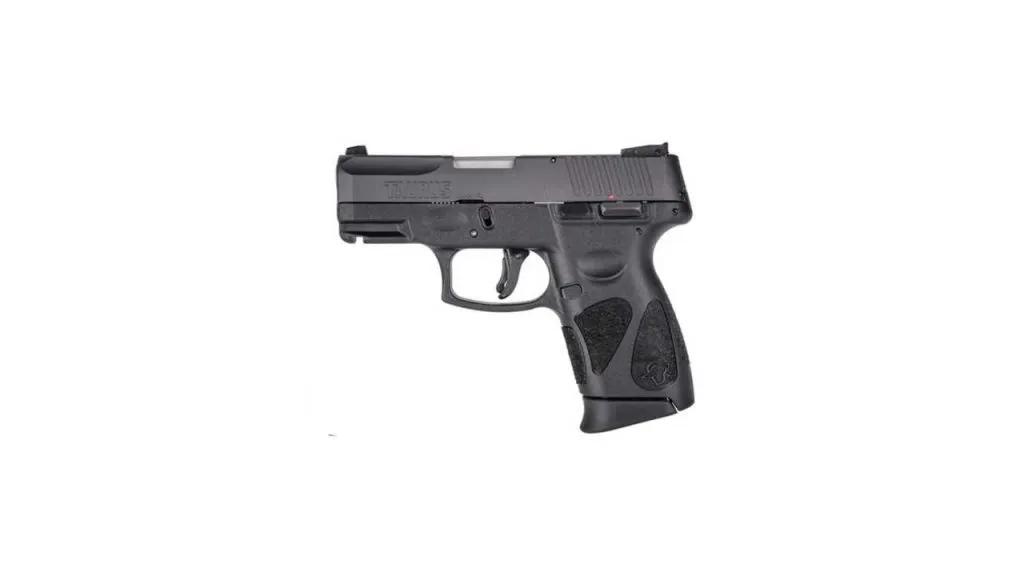
$280.99

46
EXCEPTIONAL
2025 Awards & Rankings
Performance Scores
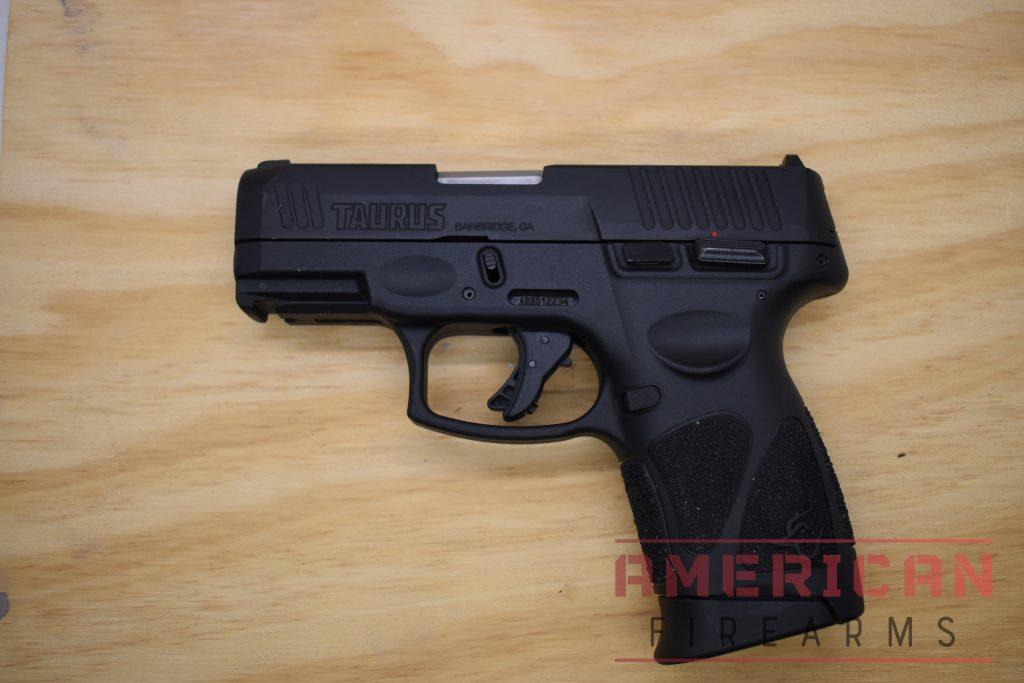
If you’re interested in a polymer-framed 9mm but aren’t interested in shelling out $400-$500, the Taurus G3C is certainly worth your consideration. Roughly the size of a Sig P365, you get 12+1 capacity, albeit in a double-stack configuration so it’s not as slim as other weapons.
You don’t get a decocker, so it’s not the most new shooter-friendly pistol out there, but it’s hard to beat the value. We’ve put the G3C through its paces and compiled our thoughts on in in our long-term review.
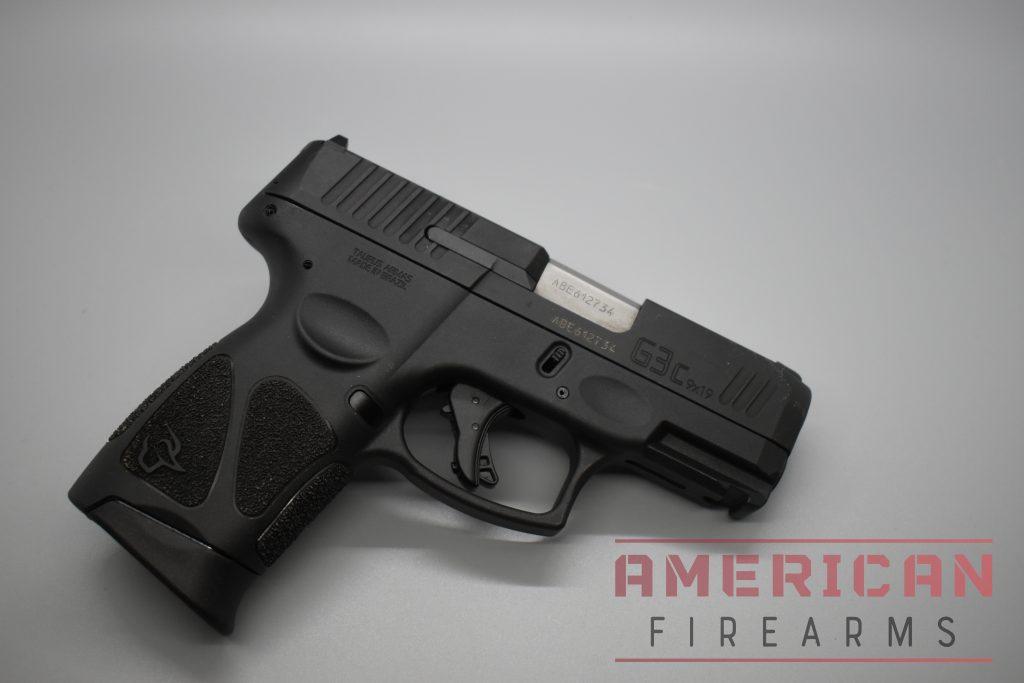
For the price, Taurus’s G3C gives you a reliable pistol that features impressive capacity and pocketable size. There’s a reason the G3C has caught so much attention with the community – it’s an impressive little gun that doesn’t break the bank.
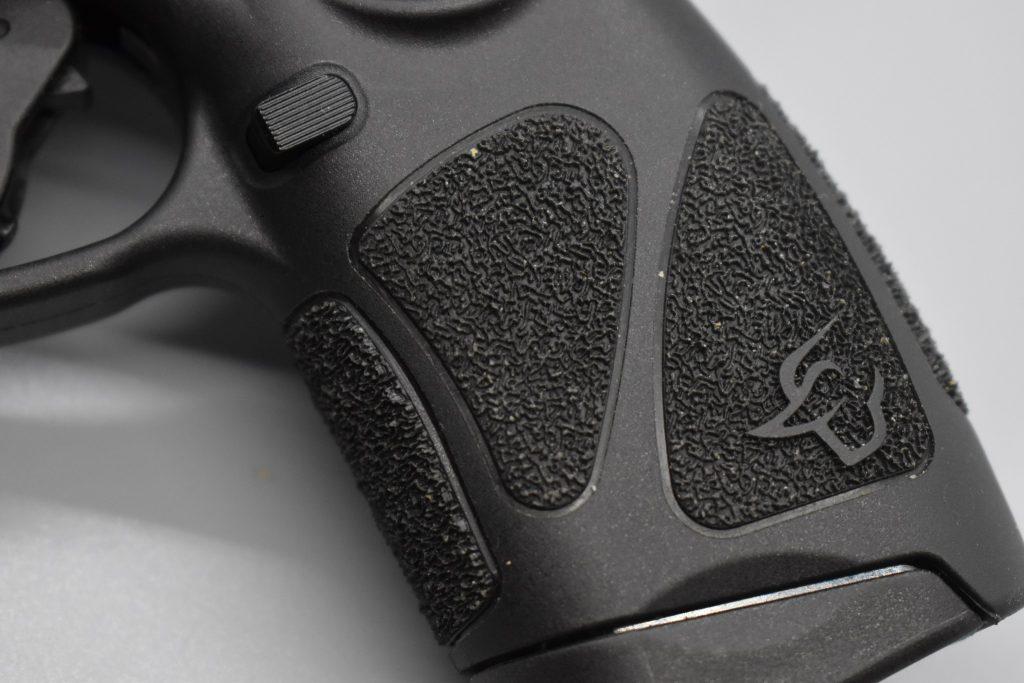
9. Budget Semi-Auto Runner-Up: Masada Slim
What we liked:
- Compact and Slim Design: The pistol is designed for concealed carry, offering a balance between size and capacity.
- Good Capacity: With a 13+1 capacity, it offers more rounds than many other slim, compact pistols.
- Lightweight: Weighing only 1.27 pounds without a magazine, it’s light enough for comfortable carry.
- Optics Ready: The Masada Slim is compatible with various optics, including RMS Shield optics, Holosun 507K, and Sig Romeo Zero.
- Excellent Trigger: The stock flat trigger with a built-in safety has a clean break and positive reset, comparable to higher-end models like the Sig P365XL.
What we didn’t like:
- Complex Disassembly: The disassembly process is more complicated than other pistols, such as Glocks, requiring the removal of a pin and several steps that can be cumbersome.
- Magazine Well Blocked During Disassembly: The design prevents disassembly with a magazine in the well, which could be inconvenient.
- Challenging Reassembly: Aligning the retaining pin during reassembly is described as meticulous and irritating, which could be a significant drawback for some users.
- Awkward Slide Retraction During Reassembly: The slide must be slightly retracted to access the pin channel, which is a delicate and potentially frustrating process.
The Masada Slim 9mm is a compact, slim, concealed-carry pistol with a capacity of 13 plus one in the chamber, and if the name sounds familiar, that’s because the Slim is the smaller version of the full-size Masada.
The gun weighs 1.27 pounds without a magazine inserted, so long gone are the days of giving up capacity for concealability.
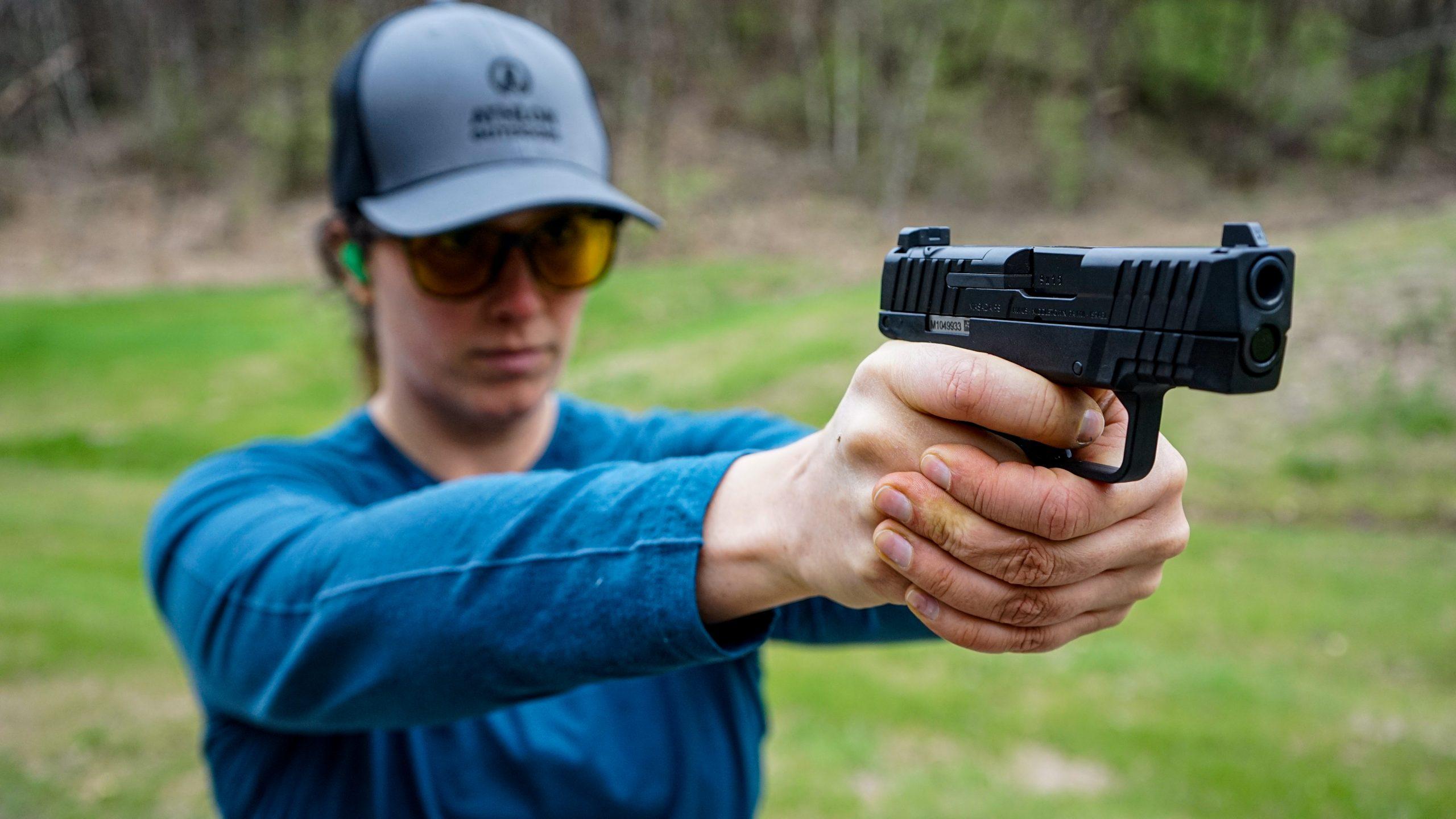
Optics Support
While the gun is outfitted with a white front dot and blacked-out rear sight, the Masada Slim comes optics ready for RMS Shield optics. You can direct mount a Holosun 507K, Sig Romeo Zero, and other dots.
Trigger
The trigger is unbelievable for a stock, compact pistol. The Slim has a flat trigger with built-in trigger safety, and the break is clean with a positive reset, which reminds me a lot of the Sig P365XL.
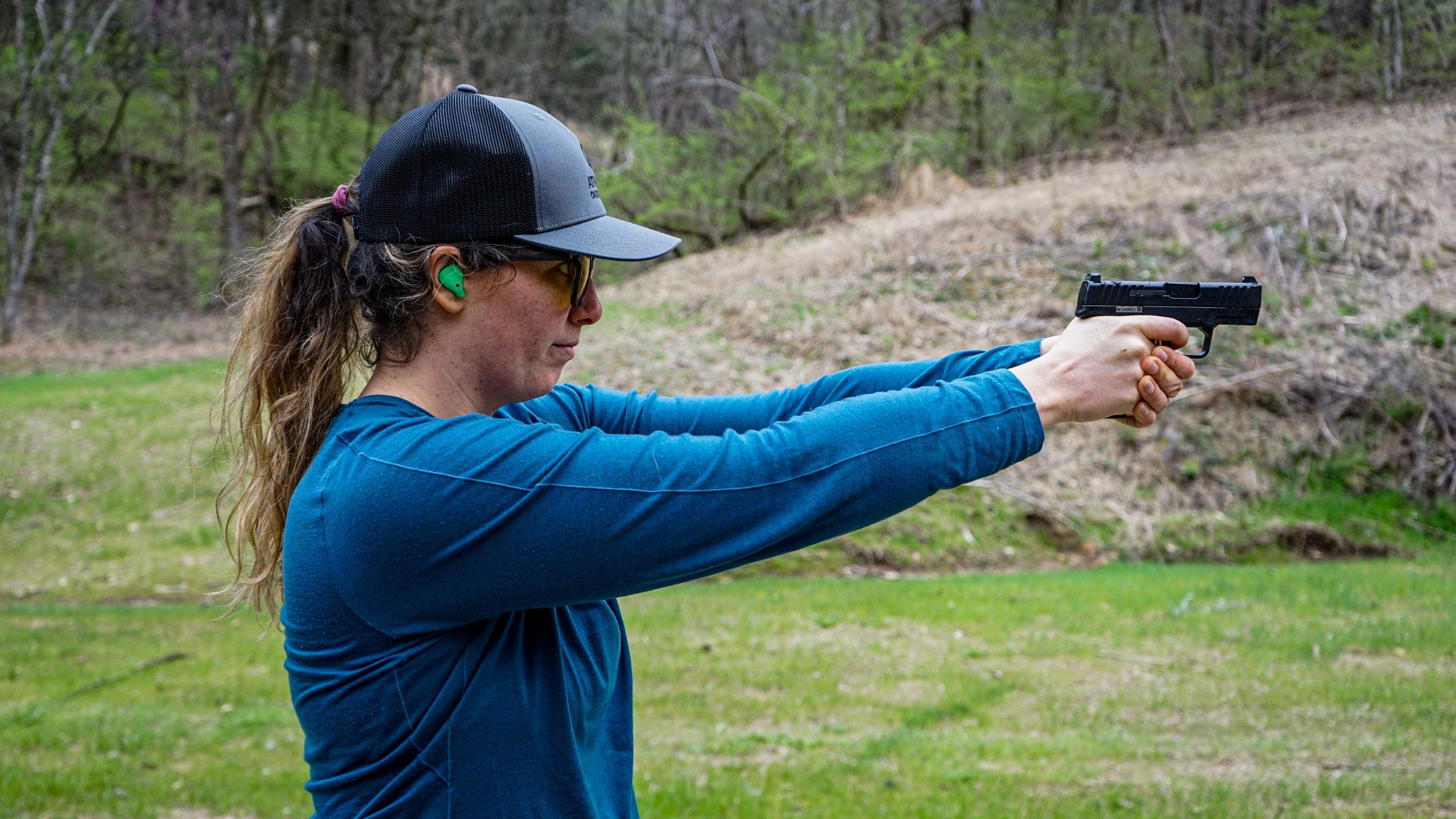
Feel & Accuracy
I generally don’t enjoy shooting most compact pistols because the felt recoil is too much, and these guns can be challenging to hang onto. The Masada Slim is one of the most comfortable subcompact carry pistols, especially with its flat trigger and easy-to-manage recoil.
The gun shoots lights out accurately with iron sights and is an absolute joy to shoot with your favorite red dot mounted — I could pull 1-2 inch groups with both 115 and 124 gr ammo at 7-10 yards all day, and the gun never complained once.
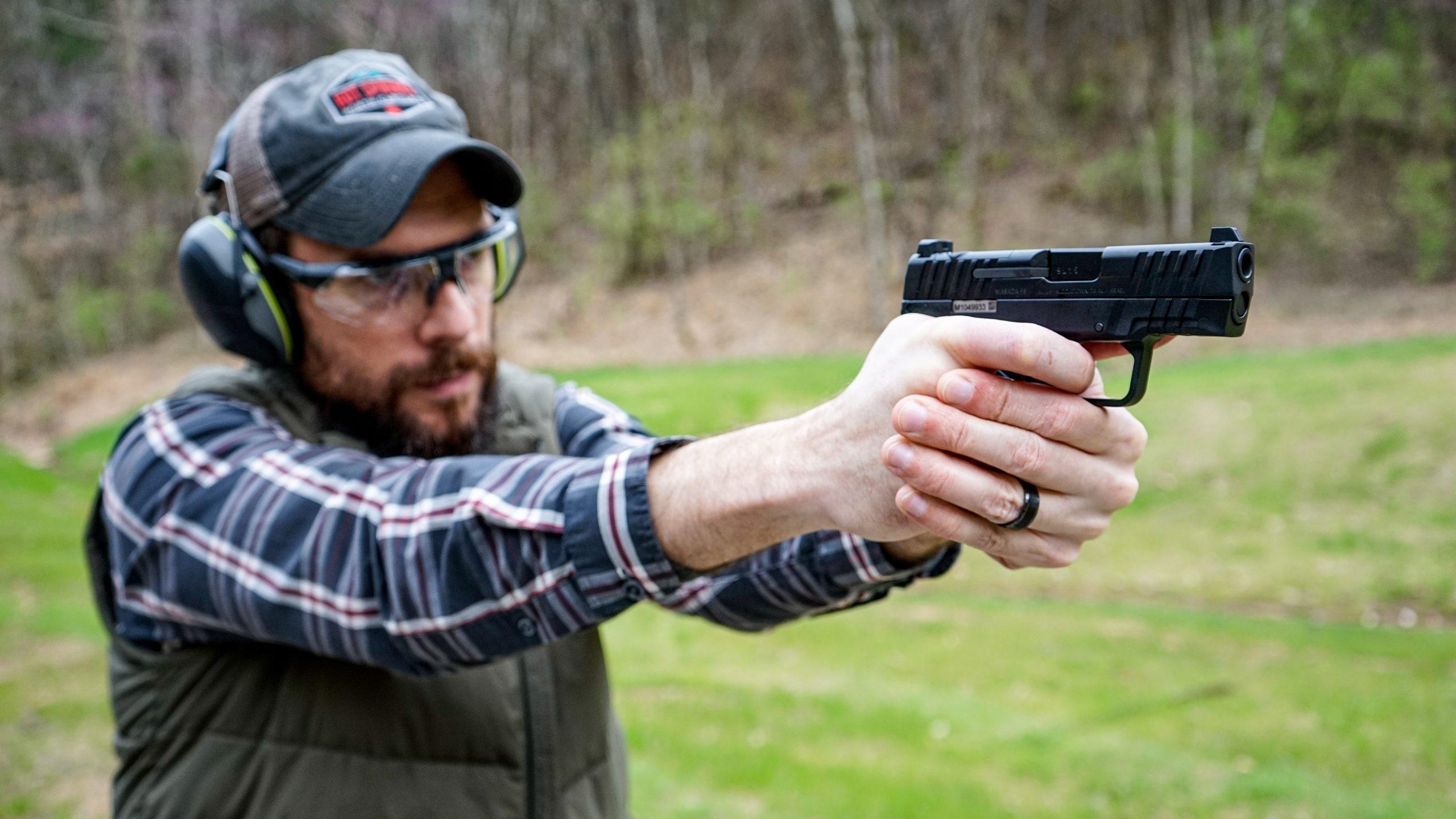
The magazine release is triangular and oversized, which I prefer over smaller releases that are hard to find. It’s reversible (not ambidextrous), and swapping mags was quick and positive.
With its fantastic capacity (especially for a compact gun) and solid reliability, the Masada Slim is a top choice for carrying daily.
Concealability
The grip is slim enough that printing is not an issue when carrying concealed and is comfortable enough to fit larger-sized hands. In fact, it’s barely noticeable when worn properly.
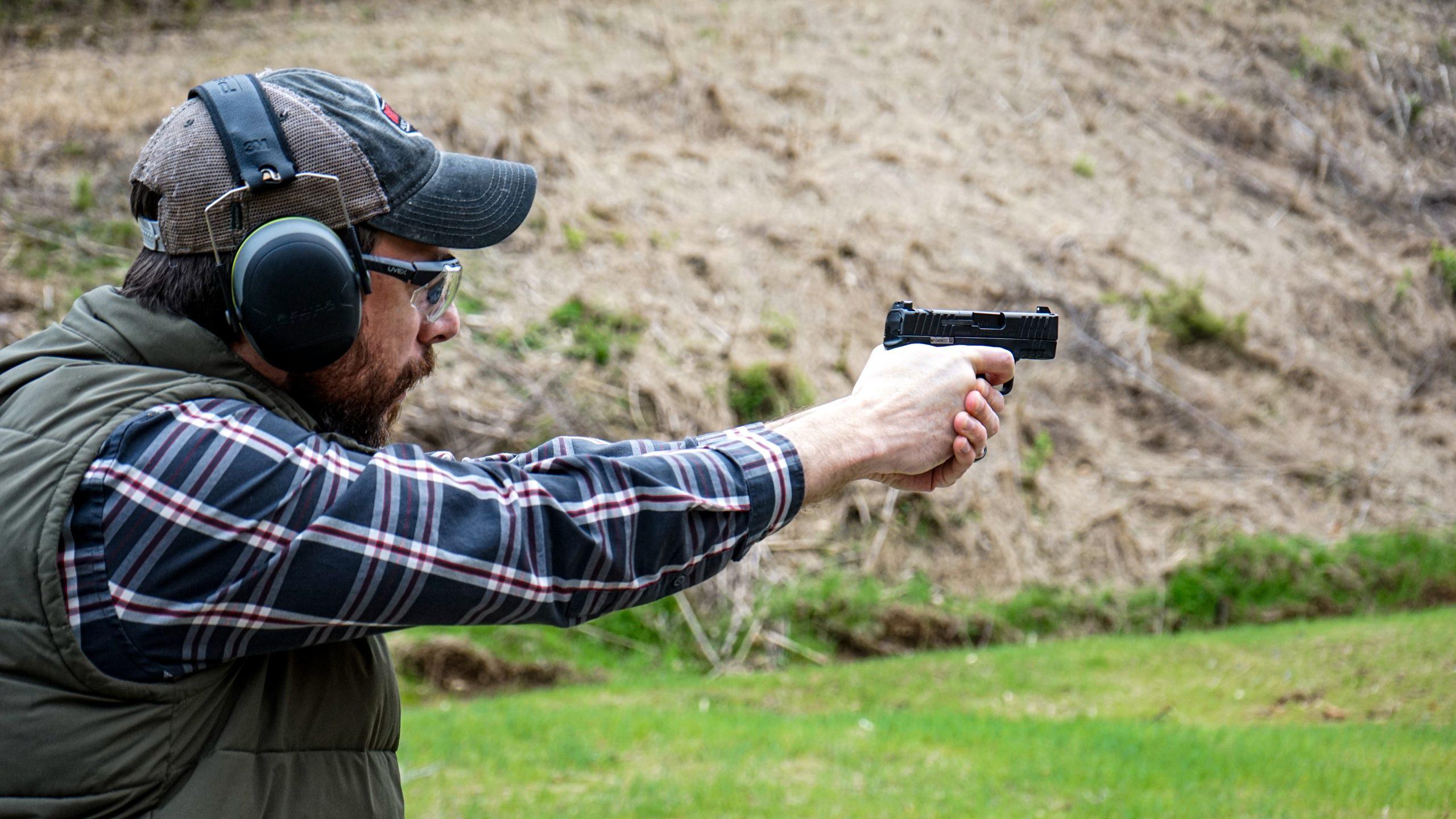
Disassembly Woes
Disassembly is a bit of a bummer, especially when one is familiar with the simplicity of Glock takedowns. Unlike the standard Masada, the Slim requires you to remove a pin from the slide before the steel trigger mechanism housing can be removed for cleaning and maintenance.
You first lock the slide back, pivot the takedown lever, then slide the pin out, which is easier than it sounds. This process also blocks the mag well, so you can’t take the gun down with a mag in the well.
Reassembly can be somewhat challenging, to say the least. This involves a reverse of the disassembly process, and the primary hurdle is getting the alignment of the retaining pin spot on. It’s meticulous and irritating.
To even access the pin channel, you have to ever so slightly retract the slide, a task that made me cross my eyes multiple times. But that’s not all! The real obstacle arises from the fact you have to accomplish this feat with the gun upside-down to prevent the barrel from inadvertently falling and obstructing the pin channel altogether.
It’s a strange design that adds a lot of complexity to a process many other brands make relatively easy.
That said, I liked my Masada Slim experience enough to have it custom-painted, and use it almost daily for carry.
10. Best Factory Package: H&K VP9SK
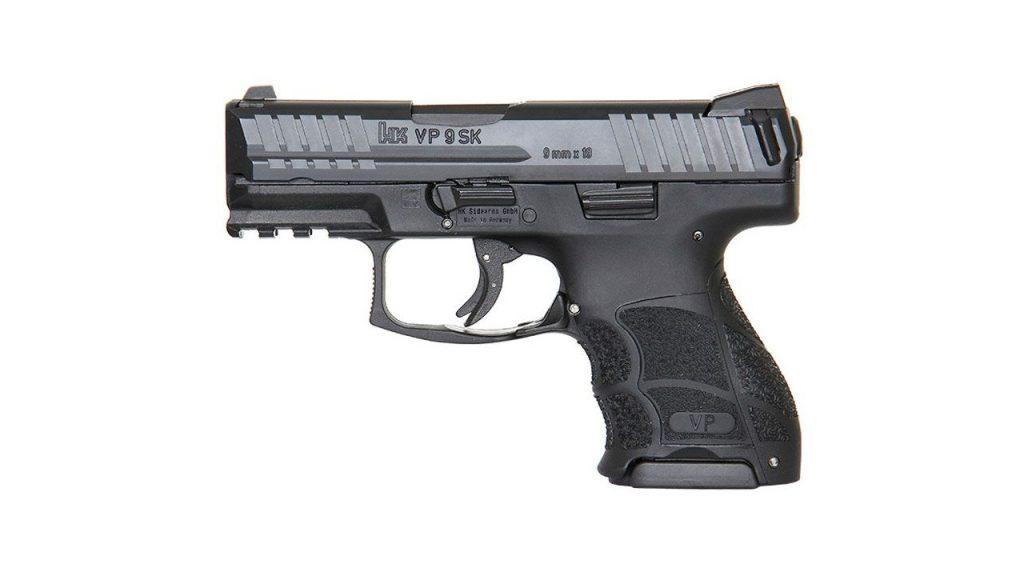
$830.99

37
AVERAGE
Performance Scores
What we liked:
- Superb trigger
- Fantastic ergonomics
- Smart features
What we didn’t like:
- A little large for a concealed carry gun
- Magazines are pricey
- Paddle release (if you get them) can be a bit to get used to
When the H&K VP9 hit the market, it was hailed as one of the best of the striker-fired pistols. Frankly, it is. There’s no denying it.
There’s virtually nothing needed to improve the gun as it comes from the factory. There aren’t any factory guns done this well among the polymer-frame, striker-fired pistols, except maybe for the Walther PPQ.
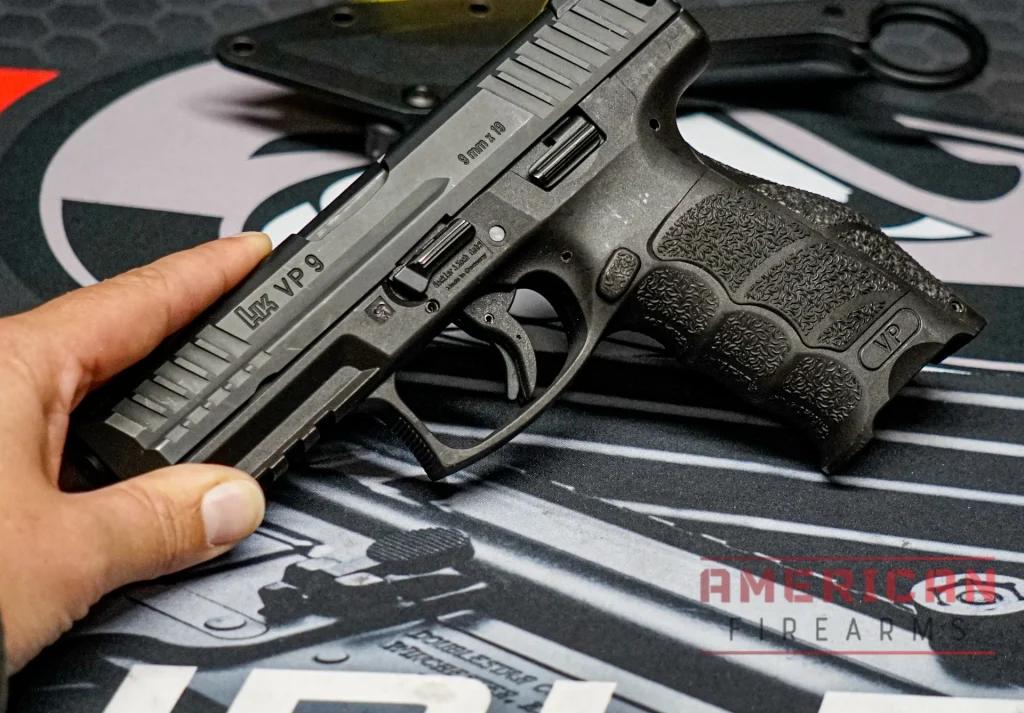
But…you’ll pay a bit for the privilege.
Smart Features, Smooth Shooting
The VP9SK has superb attention to little details, with some ingenious features that add up to an excellent gun.
The ergonomics are excellent, and the trigger is second to none with a glass-smooth pull, a glass-like break, and a quick reset.
It’s frequently touted – along with the Walther PPQ – as having the best factory trigger in any of the striker-fired handguns, and it’s easy to see why.
The slide has front cocking serrations and two charging handles at the rear of the slide for easy manipulation. The dust cover has a Picatinny rail for mounting a light or a laser if so desired.
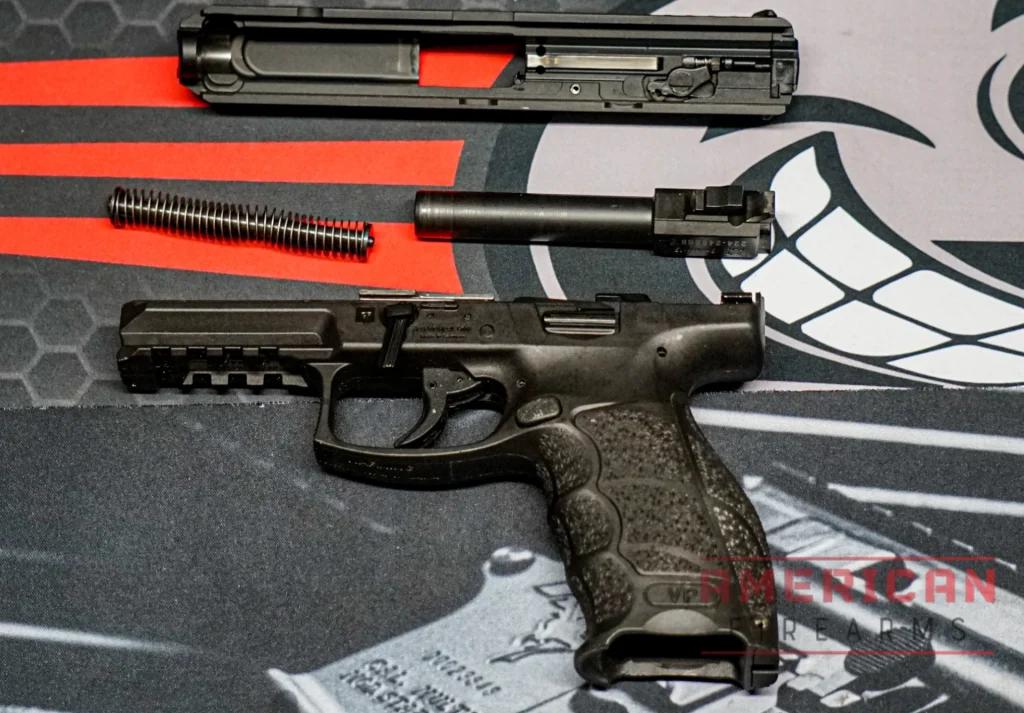
The grip is incredibly comfortable, and the gun features swappable backstraps to customize the fit. The standard model comes with white dot sights, but you can also find them with night sights and an optics-ready model if so desired.
The capacity is excellent at 10+1 for 9mm, and a VP40 model is available for those who prefer it.
Very Few Weaknesses
The VP9 is incredibly accurate and soft-shooting, making it easy to master with a bit of practice. If you demand serious performance from a concealed carry gun, the VP9 has it in spades.
As a whole, there are no real weaknesses; there’s nothing about the H&K VP9 that you’d immediately think, “well, if X was a little better” at all. It’s about as close to perfect as it gets out of the box.
If there is one quirk, the gun is made with European-style paddles instead of a magazine release button. Granted, H&K has started offering a button release model as well, so you can get around that.
Some people prefer the paddles, some don’t, that much is all up to you.
However, there are a couple of things that could give a person pause.
Firstly, the standard VP9 is slightly on the larger side. It’s closer to a Glock 17 in size than a Glock 19, so you have to be okay with a larger pistol, which is why you’ll want to look for the SK version, which offers a shorter 3.38-inch barrel length.
Secondly, H&K charges a premium for additional magazines, costing around $50 each. You might be able to find them a little cheaper elsewhere but not by much. Most models come with two, but some VP9 options (with night sights, etc.) come with three.
The VP9 is also a little pricey; the base edition has an MSRP of just under $800, and it goes up from there.
Probably The Best Of The Breed
Despite these downsides, the H&K VP9 is arguably the best among polymer-frame, striker-fired pistols.
You’ll pay a bit more for the privilege, but ask anyone who owns a VP9, and they’ll tell you that you definitely get your money’s worth and then some.
Our hands-on VP9 review details how well our unit has held up in competition use and for over 6,000 rounds.
Carry Methods & Holster Basics
Your holster is just as important as your gun choice—it’s what keeps your firearm secure, concealed, and accessible when you need it most. After testing dozens of carry methods and holsters, here’s what works in the real world.
| Position | Concealment | Comfort | Draw Speed | Best For |
|---|---|---|---|---|
Appendix (AIWB) | Excellent | Moderate | Fast | Slim builds active |
Strong Side (3-4) | Good | Good | Moderate | Most body types |
Pocket | Excellent | Excellent | Moderate | Micro pistols |
Ankle | Excellent | Good | Slow | Backup gun |
Small of Back | Excellent | Poor | Slow | Formal wear only |
Inside the Waistband (IWB) remains the gold standard for concealment. Whether you go appendix carry (AIWB) for faster draws or strong-side (3-4 o’clock) for comfort, IWB holsters disappear under even fitted clothing. The trade-off? They take practice to draw smoothly and can be less comfortable during long days.
Outside the Waistband (OWB) holsters are more comfortable and faster to access, but require jackets or loose shirts to maintain concealment. Great for cooler weather or open carry states.
Pocket carry works brilliantly with micro pistols like the LCP MAX or small revolvers. Use a proper pocket holster—never carry loose in your pocket. The gun practically disappears, but draw times are slower.
Material matters more than most realize. Kydex holsters retain their shape permanently and offer consistent retention, making them ideal for appendix carry where safety is paramount. Leather feels better against skin but can soften over time, potentially creating safety issues if the holster mouth collapses during reholstering.
Fit is everything. A quality holster designed specifically for your gun model will have proper trigger guard coverage and retention. Avoid “universal” holsters—they’re universally mediocre.
Start simple. Buy one good IWB holster in your preferred position, wear it around the house, and practice your draw stroke. You’ll likely go through several holsters before finding your perfect setup—we all do. Focus on complete trigger coverage, comfortable carry, and smooth draw characteristics.
Remember: the best holster is the one that makes you want to carry every day.
Concealed Carry Gun Pricing
$300-$500
For around $300, it’s entirely possible to get a serviceable concealed carry firearm in a wide variety of formats and sizes.
If budget is a major concern, we recommend going to the local gun store and checking out their used gun cabinet. A lot of people buy handguns, never fire them, and eventually sell them back to the store or their next of kin do so at estate sales.
$500-$600
For around $500, you can get a lot of contemporary factories, including several models by Smith and Wesson, Ruger, and Glock.
For a lot of people, this is the sweet spot in buying concealed carry guns, in that you’ll get a good mix of features and quality.
$600 & Above
At $600 and above, you’ll be able to track down your historical favorites or get some of the best concealed carry guns on the market at or above MSRP. Here, the Sig P365 comes to mind: being the early adopter of a new firearm comes with some costs, and money is certainly one of them.
While you can spend a lot more than what we list here, a lot of folks carry guns that are well under $1,000, preferring to spend more money on ammo so that they can stay in good practice with their concealed carry pistol.
Shortcomings
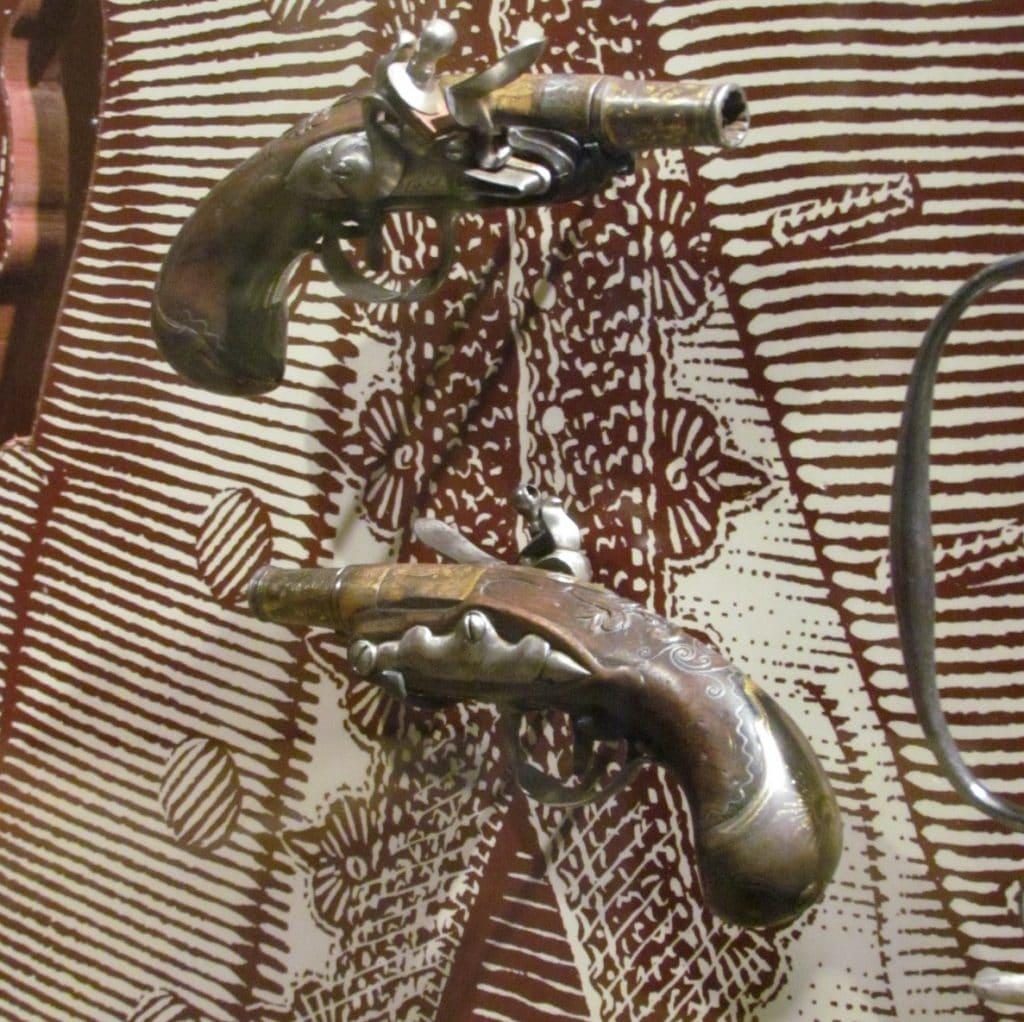
No gun is perfect, so the question is not only addressing the shortcomings of any particular weapon but picking the shortcomings you prefer to live with. There are no free lunches.
Every Brand Has Room For Improvement
The Glock 19 is an excellent pistol, but some find it a bit too bulky, and – let’s face it – factory Glock triggers aren’t great.
The M&P9 Shield is shockingly easy to conceal and quite shootable for its size, but the hinged trigger safety isn’t great, and some people find the grip too thin to get a shooting grip they prefer.
Chances are if you try 10 pistol brands there will be something about each that you will want to improve upon. The objective is to identify the best option for you and then work around a given brand’s shortcomings.
Every Type of Pistol Has Its Nuances
The 1911 is a proven fighting pistol, but it’s an enthusiasts’ gun and not for the beginner, the fainthearted, or the lazy.
Snubby revolvers are easy to carry but are touted as a master’s weapon; they are challenging to shoot well at distances beyond 5 to 7 yards. So are pocket .380s.
When it comes to the right CCW gun, nothing beats hands-on experience. So a little cash spent on range time with a few rentals will help you better understand the ins and outs of different formats and actions.
Carrying a Pistol is its Own Challenge
Strongside IWB carry is not comfortable enough for some people, and the draw is slower than appendix carry. Appendix carry is not possible for all people, and some find it very uncomfortable. OWB concealed carry is very comfortable, but maintaining concealment is hard.
Many people are tempted to add a weapon mounted light (WML) to their carry pistols, which makes sense on paper but definitely has both pros and cons.
There isn’t a single best concealed carry pistol, but there is a carry gun for you and your lifestyle. How can you find that out? Get out there and try some.
Carrying Concealed Requires Effort & Experience
Find a rental range, and try out some – or all! – of the concealed carry guns on this list. See if there’s one that you seem to like, it points quickly for you and makes it easy for you to hit the target.
Start with a gun you can shoot accurately, and then consider other factors.
If you have to shoot for your life, you need to hit the vital areas of the person attacking you, so make sure you get a gun that you can shoot accurately and efficiently in the context you expect to be in.
Suppose that’s a P238 in a pocket holster, fantastic. A Shield or a P365 in a strongside holster? Great. Maybe that’s a VP9 in an appendix holster. Wonderful. If it’s a 1911 in an Askins holster, that’s awesome too.
Start with a good gun for you, in a good holster, and you won’t go wrong.
Updated
Sign up for our newsletter
Get discounts from top brands and our latest reviews!




